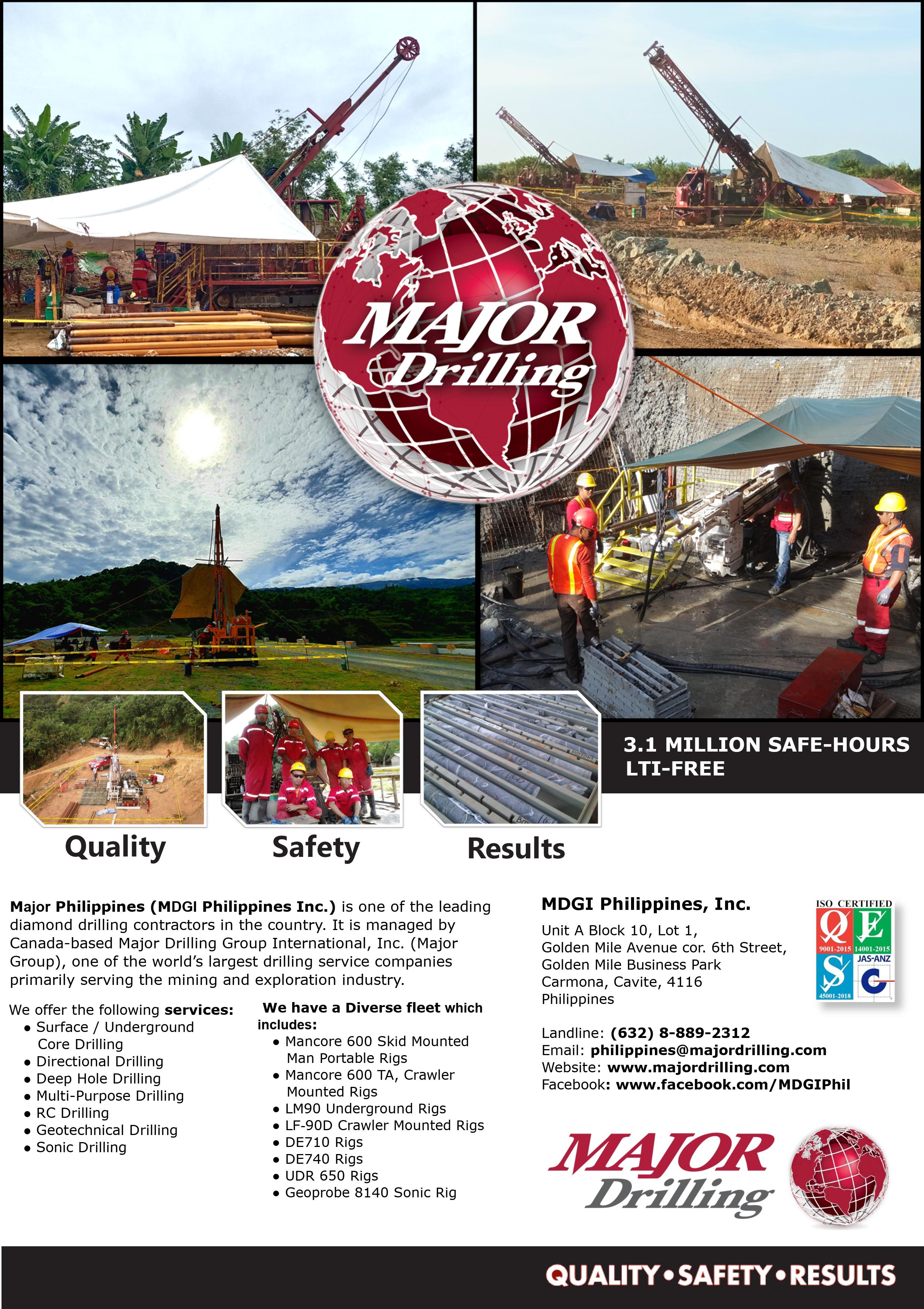










Taganito Special Economic Zone



















Taganito Special Economic Zone







e effect positive change in the lives of many people.
We empower communities to be self-reliant and selfsufficient.
We promote the spirit of cooperation and collaborative partnership.
We share responsibility in enhancing economic prosperity and the general welfare.
We leave a legacy to the present and the future generations.
Answers Industry’s Queries
Mining Decarb: E-mission Impossible?
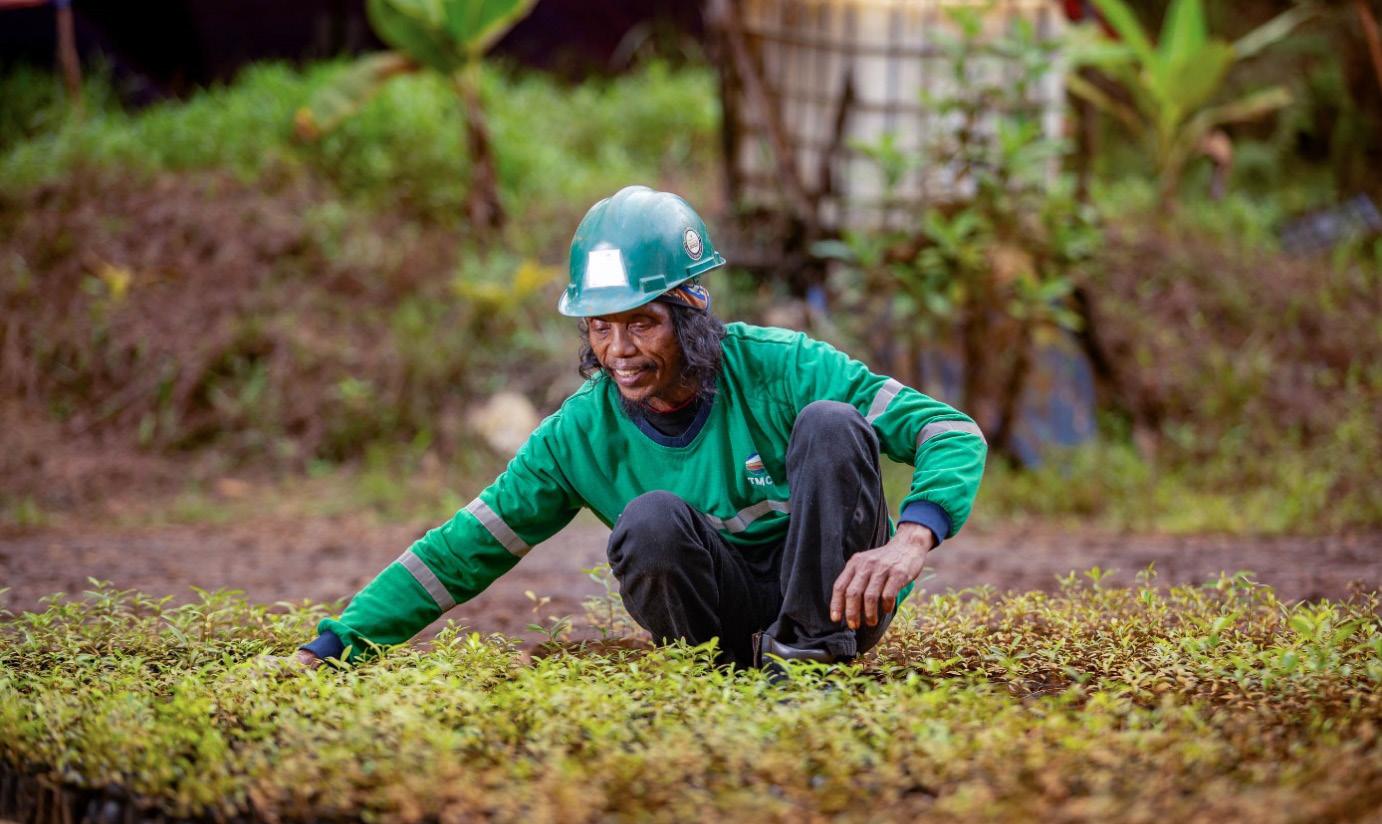
QES Technology Philippines, Inc.
Chamber of Mines Pushes for Policy Reforms
PMEA welcomes new MGB Director Cabalda
Expected Rebound for Nickel Industry Growth in 2025
Industry Updates from PMEA President
Addressing Bottlenecks and Drafting a Mining Royalty Cap
Geological Society of the Philippines Launches GEOCON 2024
Leading Voices Illuminate Future of Mining at PH Mining Club Luncheon
Go Home Safe
Johnson Screens Solutions Unlock Highest Efficiency in Water Wells for Mining Applications
Underground Mine Value Through Stope
Intertek Minerals: Offering Mineral
Transforming PH Infrastructure with Mixed Reality Solutions
Cement Makers’ Group Ready to Meet Growing Housing Demand
Prices of Construction Materials Remain Stable, Says PSA
DBM: August Infrastructure Spending Drops 11%
DTI-CIAP inks MOU with SCLP to Boost PH Construction’s Economic Potential
Successful Technical Summit Navigates Future of PH Infrastructure
RDCL: The Power of Geophysics in Modern Engineering
THPAL Celebrates International Day
Sandvik’s Centrevo Unifies Enhanced Rock Tools Digital Solutions Suite
Brings Spectro Scientific’s FieldLab 58C to the Mining Industry: Revolutionizing On-Site Oil Analysis
Customized Solutions for Efficient Material Handling: Chief Industrial Conveyor Systems
Robit: Serving Global Customers with Drilling Consumables
Higantis’ On-Site Tire Management: How We Help You Save Costs and Boost Efficiency
Taganito Mining Corp. Hailed as Overall Top Taxpayer in Claver for 2023
Manitowoc Crane Group, Inc. Unveils New Office Relocation to Enhance Customer Support and Service Capabilities
International Coastal Cleanup 2024: HMC-TNP Makes a Difference
Community Outreach Program with APEX at Your Service
Uniroc—The Innovative Path of the ‘Small Cross-Section Roadway Development Expert’
Leading Innovation and Community Engagement
Epiroc Unveils Diesel-Electric Minetruck MT66 S eDrive
TVIRD’s Balabag and Siana Gold Projects Gain Regional Gawad Kaligtasan at Kalusugan Award
Narrow carrier, wide possibilities. Advanced technology for narrow vein mining applications.
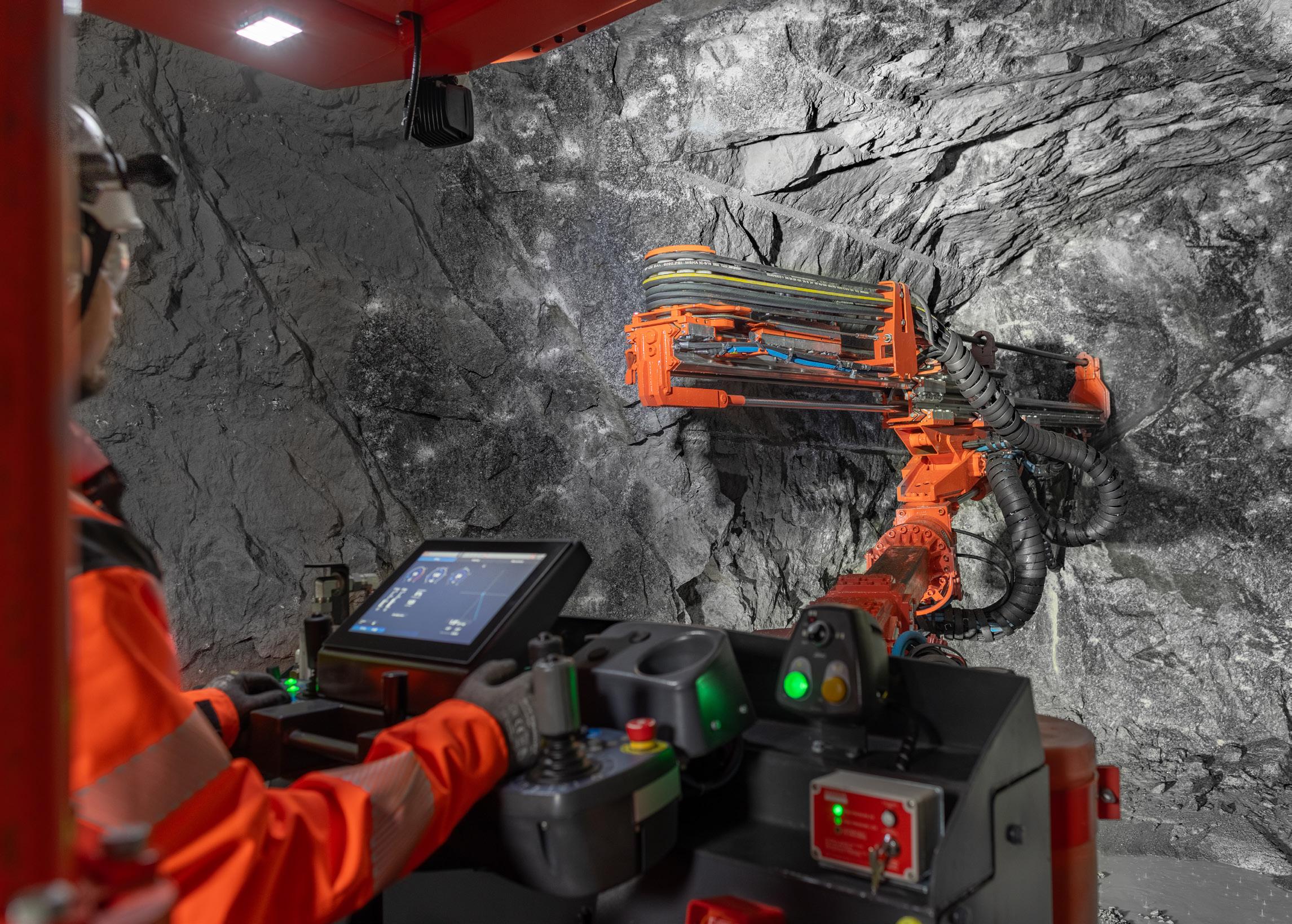

Marof his myriad inflation and against economic from the hard put consumer public a tight result declincosts further dollar fuel for materials more for debt the proand the Government facilienergy utiliAmong recovery are conflict weaker about by intercountry. businessmoney and and serespecially economic globally.
groups, the mining sustainable refrom the pandemic and slowdown. investments for underscored Secreassured the commitment to environment Diokno also expects adhere to practices. He strike environand supsocioeconomic Marcos ecomedium-term fissucceed mining
written by: FERNANDO PENARROYO

By Fernando Penarroyo
IFernando “Ronnie” S. Penarroyo specializes in Energy and Resources Law, Project Finance and Business Development. He is also currently the Chair of the Professional Regulatory Board of Geology; the government agency mandated under law to regulate and develop the geology profession. He may be contacted at fspenarroyo@penpalaw.com for any matters or inquiries in relation to the Philippine resources industry and suggested topics for commentaries. Atty. Penarroyo’s commentaries are also archived at his professional blogsite at www.penarroyo.com

Philippine Resources is published independently for executives in Philippine mining, construction, resources, and associated business sectors.
Publisher Elizabeth Galura
Consulting
Publisher Greg Brimble
Editor Jimbo Owen Gulle
Sales and Marketing Manager
industry would have to perform well. Dur ing the Philippine Economic Briefing in New York where President Marcos delivered a keynote message to American investors, Diokno emphasized the administration’s commitment to help maximize the mining sector’s potential in attracting more foreign investments.
t has been almost four decades since I have worked in the resources and energy industry. My career history can be set against the backdrop of the ups and downs of the industry starting from the time I began working as a government petroleum geologist up to the present where I am both a government regulator and a private law practitioner.
The mining industry considered the Duterte administration as another wasted era for realizing the full economic potential of the sector. The Marcos government in herited a mining industry reeling from the anti-mining stance of the previous admin istration with the appointment of the late Regina Paz Lopez, a staunch anti-mining advocate, to head the Department of En vironment and Natural Resources (DENR). The appointment was bitterly opposed by the industry resulting in Lopez’s rejection by the powerful bicameral Commission on Appointments.
During her term, Lopez ordered the clo sure of mining operations and initiated a national mine audit conducted on behalf of the Mining Industry Coordinating Council. Mining stakeholders described the three years of closure of these companies as “arbitrary” and claim that at that time, the industry practically “gasped for breath.”
I witnessed the paradigm shift in the industry when environmental protection became the norm in the 80s and indigenous peoples’ rights were given legal recognition in the 90s. The millennium saw how green energy transition and digital transformation drove companies to adhere to the ESG framework extending sustainability beyond environmental issues to encompass climate change, human rights, monitored revenues, and strict adherence to laws.
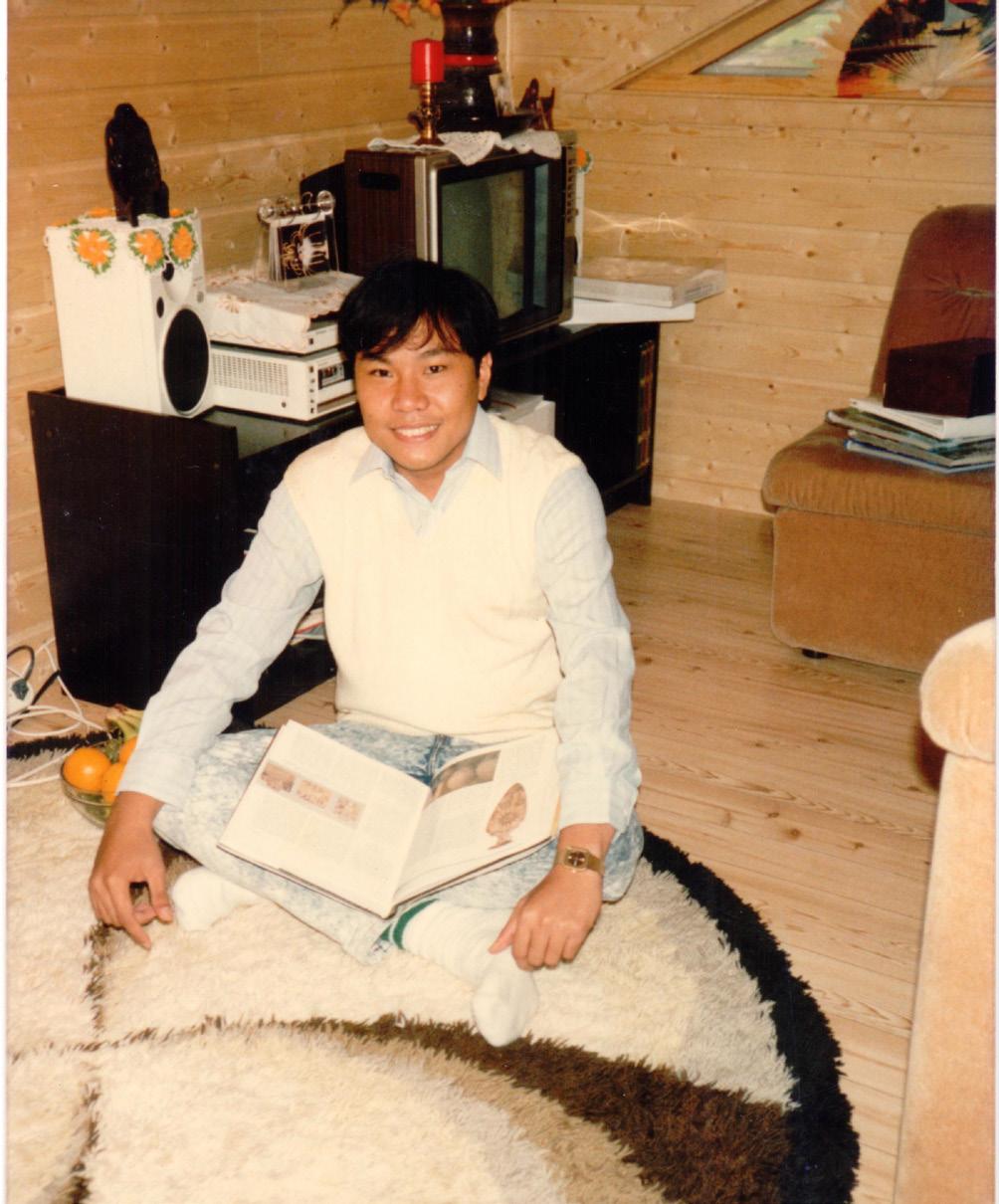
Trondheim, Norway, 1988
Matt Brimble +63 927 721 6622
Matthew@philippine-resources.com
Account Manager
Merian Jay Fallan +63 955 738 0266
merian@philippine-resources.com
Administration
Cecilia Pamular +63 917 308 1971
cecille@philippine-resources.com
Graphic Designer Bogtong Wangga
Journalists
Marcelle P. Villegas
Engr. Edison Mating
Contributors
Patricia A.O. Bunye Fernando Penarroyo
Manila Publishing Office
Suite 6, 2nd Floor
Corinthian Plaza Building 121 Paseo de Roxas
Legaspi Village Makati City, Philippines 1226
Phone +632 8251 5599
Digital Online Edition www.Philippine-Resources.com
With COVID-19 bringing down the economy on its knees and a worsening economic fallout becoming inevitable, Duterte issued Executive Order No. 130 in April 2021, lifting the nine-year moratorium on the granting of new mining permits. Finally in December 2021, the Duterte administration succumbing to economic pressure, lifted the ban on open-pit mining.
It is well to note that at the height of the pandemic in 2021, the mining sector’s contribution to the gross domestic product
I embarked on a geology course upon the persuasion of my parents who wanted me to have a stable and relatively high-paying job. A relative was gainfully employed as a structural geologist in a government corporation and my parents believed that the profession offered numerous opportunities for career advancement.
So, there I was, a wideeyed high school graduate from a small parochial school, enrolled in UP in a freshman block composed of 15 geology
Page 8 >
and 15 engineering majors. The group was a merry mix-up of kids from both exclusive and public schools, and uber-smart guys from Xavier School and Philippine Science High School who ate advanced calculus for breakfast. Our block president became active in university politics and was elected as University Student Council Chair, a prelude to his eventual rise as senator of the republic. Many in our freshmen block pursued their PhDs in geology while surprisingly, a good number became lawyers like me.
On the Cover: Photos is courtesy of
New Leopard DI650i down-the-hole surface drill rig offers long-term productivity and superior stability with robust and reliable main components – seamlessly integrated with state-of-the-art technical solutions. Scalable automation, easy maintenance and outstanding movability are the features that make Leopard DI650i a premium product, which is an honor to own.
Leave your paw print and enjoy the smooth, efficient ride.
Explore the new Leopard DI650i: ROCKTECHNOLOGY.SANDVIK/DI650 i
Amidst the political turbulence and economic chaos brought about by the
assassination of Benigno “Ninoy” Aquino, I obtained my geology degree. Little did I realize that graduation from the university was just the beginning of the real challenge. Employment in the geoscience field depended highly on the price of commodities, particularly metals and oil. We entered the job market when metal and oil prices in the eighties were depressed. Qualifying for a geoscience job in the resources industry was difficult. The options were either being employed as a contractual worker in government or staying in the

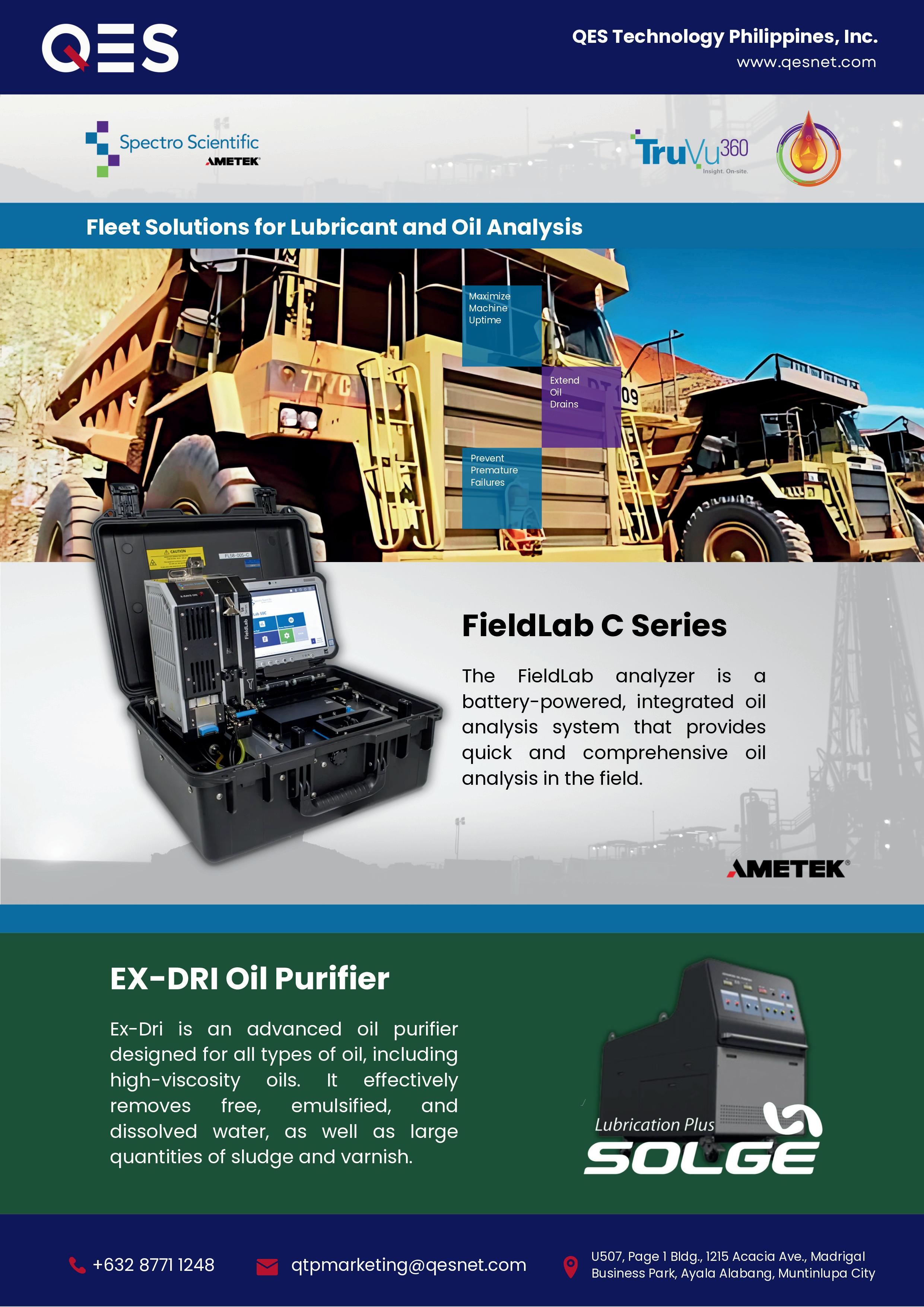
university as a research assistant while pursuing graduate studies. Private companies were not hiring and in fact retrenching their technical people.
In the 1970s, copper prices trended upward and peaked. The country’s copper production continued and boomed until 1980 when output recorded its highest production. Meanwhile, the 1973 energy crisis, also known as the Oil Shock of 1973–74, was a period of skyrocketing energy prices and fuel shortages resulting from an embargo by Arab oil-producing nations in response to U.S. support for Israel during the Yom Kippur War. These periods saw the initial boom and increase in demand for geologists.
However, in 1986, Saudi Arabia grew tired of attempts to stabilize the oil glut in the market by curbing its output and increasing oil production from two to five million barrels of crude oil per day. Between August 1985 and August 1986, crude oil prices plummeted from $28 per barrel to $8 per barrel before stabilizing at $18 per barrel.
During the oil price decline, copper prices also recorded low prices brought about a decline in demand for the metal. The world recession in 1982 – 1984 also pulled down copper prices further dampening demand, which fell more steeply than crude oil.
In the 1980s, the Philippine mining sector started its decline with the closure of several mining companies due to the financial crisis and the occurrence of several mining accidents. Inflation brought about by the debt moratorium crisis in 1983 and unstable political environment, devalued the Philippine peso effecting an increase in the costs of mining production, materials and equipment. Aggravating the situation were the economic crisis and political unrest in the Philippines in the mid-eighties. There were basically limited employment opportunities for
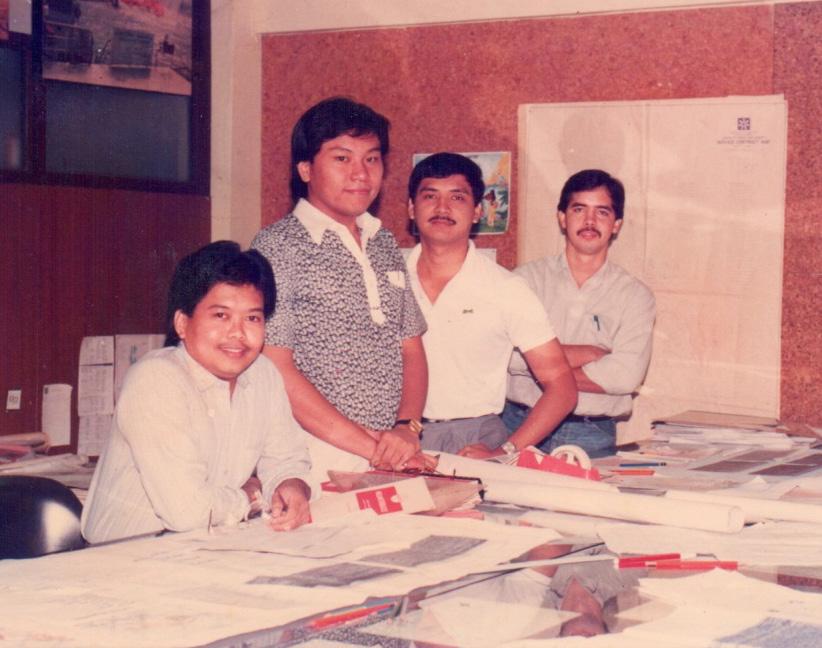
new geology graduates at that time.
As a twenty-year-old and fresh from the university, I was practically forced to accept any technical job offered to me. My family was concerned that I would just be bumming around the house after graduation, so I accepted a job as a contractual cartographer at the Bureau of Energy Development (BED) under the then Ministry of Energy. Friends and classmates chided me as overqualified for the job and described my work as nothing but a glorified draftsman.
Beggars can’t be choosers because there were no permanent positions for new geology graduates who have not even hurdled the board examinations. Thankfully, BED management gave us, the new graduates, leeway to review for the board exams. The senior geologists also provided us with a collection of review materials and past examinations for our guidance. However, human resources cautioned us that we would lose our jobs if we fail the board exams. So, we used our allocated time in the afternoon to study and attended review classes in the evening.
In August of that year, a few months after graduating and getting employed in April, I took the board exams. After passing the licensure exams and
becoming a registered geologist, I was regularized and became a permanent government employee with the title junior science research specialist.
Fortunately, when I entered the BED, there was an existing World Bank-funded project called “Petroleum Exploration Promotion Project”. The Project aimed to rekindle the interest of petroleum companies in exploring for oil and gas in the Philippines by undertaking a nationwide evaluation of the petroleum potential of the country’s fifteen (15) onshore and offshore sedimentary basins. Aeromagnetic and offshore seismic surveys were undertaken and the information generated was integrated with comprehensive regional basin evaluation studies. The more prospective Northwest Palawan and Reed (Recto) Bank areas in the West Philippine Sea were subsequently included in the study. Complementing the Project was a grant from Petro-Canada International Assistance Corporation, which acquired additional seismic data in selected offshore areas.
The Project also aimed to strengthen the exploration knowhow and technical capabilities of the government implementing entities - the BED and the Philippine National Oil Company Exploration Corporation (PNOC-EC). It
was an effective mechanism of training the Filipino technical staff involved in the Project and I was a beneficiary of the knowledge transfer. My colleagues and I were mostly young geologists and geophysicists with very little exploration experience when we joined the BED.
It was in the Project where I initially learned the ropes of petroleum exploration. I was exposed to several aspects of exploration from seismic data acquisition, processing, and interpretation when I was assigned to the geophysics section. It was an effective on the job training for me as I was under the supervision of World Bank foreign consultants and Filipino senior geoscience professionals seconded to the BED from PNOC-EC.
During the marine seismic survey conducted by PetroCanada, I was sent aboard the research vessel to familiarize myself with the seismic data acquisition process. Marine data acquisition was conducted by using seismic vessels outfitted with sources and streamers that are towed behind the ship. I was seasick for the first few days and was advised to stay in the cabin. When I recovered from motion sickness, my job was to assist in the lay-out and design of the
Page 12 >
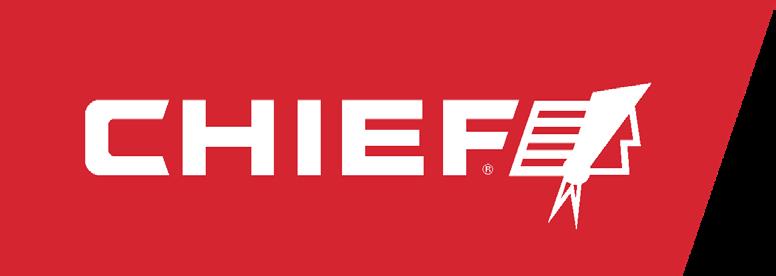
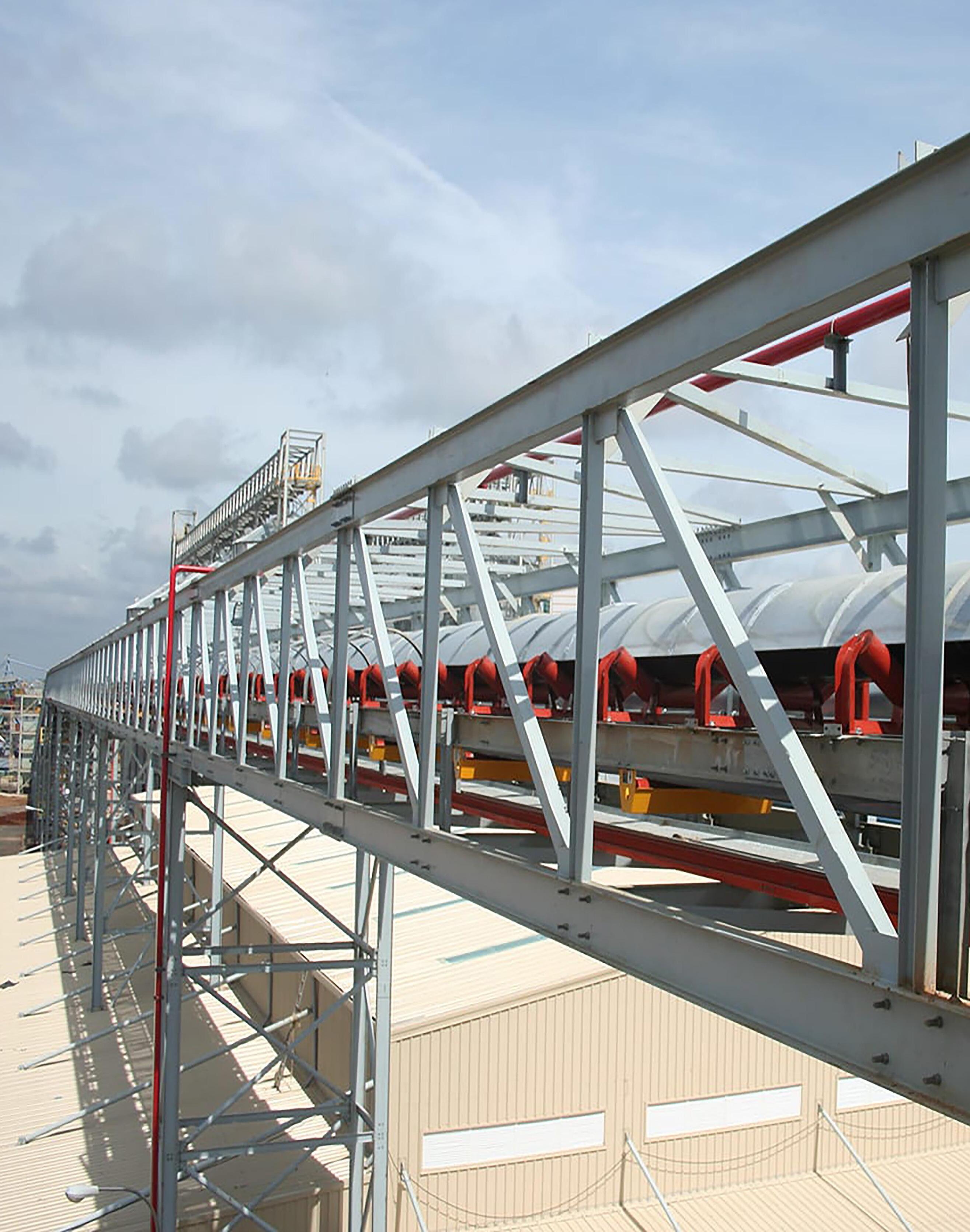




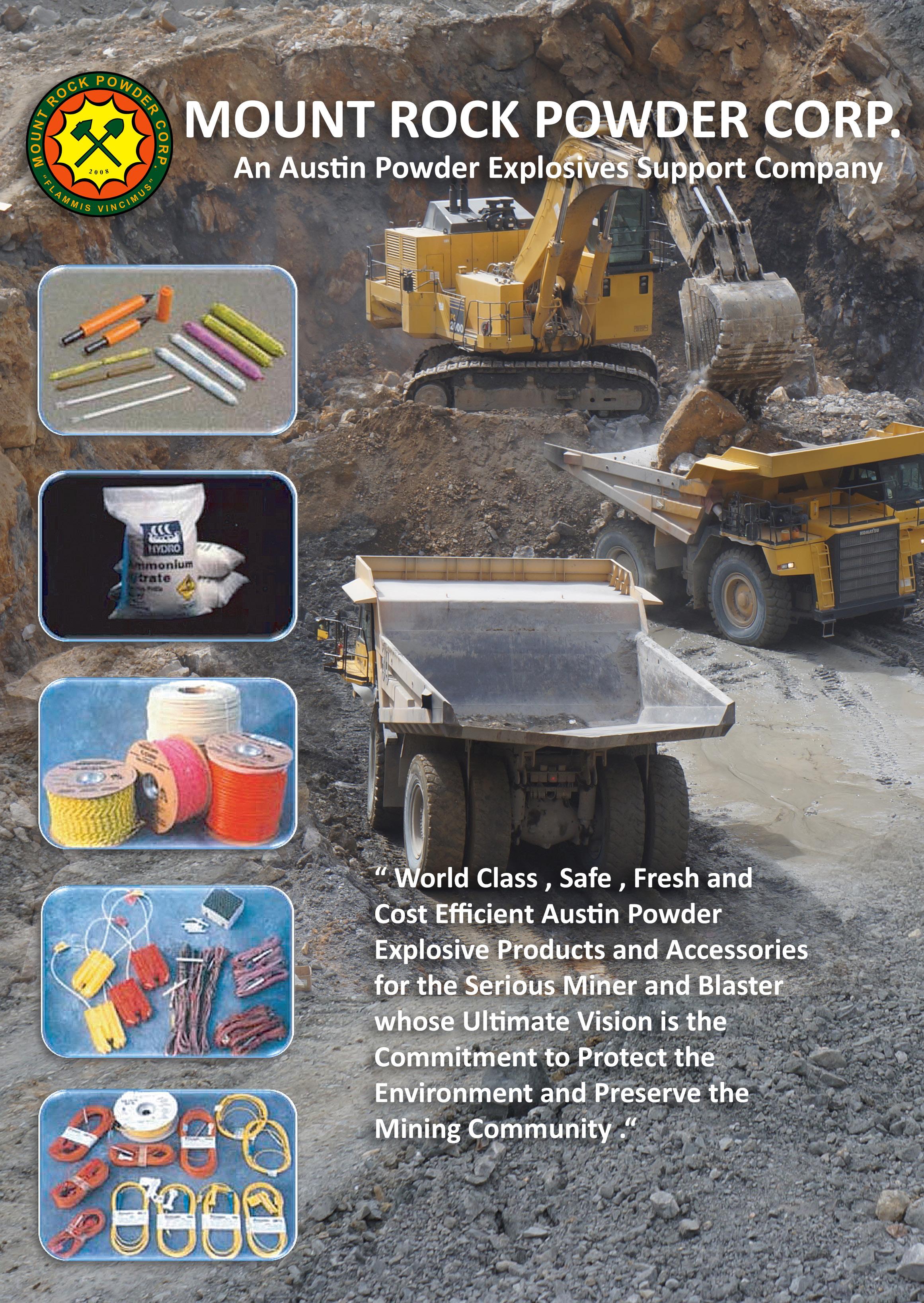

survey lines. I also helped in the quality control of the initial data generated.
It was a spectacular feeling of being out in the open sea. The rhythm of the waves and the wind can help clear the mind and make one feel more connected with nature. I also experienced the sight of so many marine life like dolphins, sharks, flying fish, box jellyfish, and sea birds.
The raw seismic data were then sent to the data processing center. The recorded seismic signals were analyzed to filter unwarranted noise to create an image of the subsurface and enable geological interpretation and identify structures for petroleum accumulation. Under the Project, PNOC-EC set up their own seismic processing center funded by their own loan from the World Bank. Part of my training as a geophysicist was my assignment to PNOCEC’s Data Processing Center to understand how seismic data are prepared for analysis and interpretation. Seismic data were stored in magnetic tapes and once processed were printed on paper sections.
Seismic interpretation was the last stage in seismic exploration and used to infer the geology at certain depths from the ocean bottom. In the 1980s, data were first reproduced from sepia films using ammonia-based blue printing machines. Seismic interpretation was still done manually on paper sections of two-dimension data using colored pencils. At that time, we pressed our face sideways against the paper seismic sections spread across a long table. By looking sideways, we were able to trace subsurface horizons and large structural traps that could hold oil and gas deposits. We also encoded data and made structural contour maps manually without the aid of modern computer workstations and basin modeling software. The structural maps generated are then incorporated with other geoscience data to create drilling prospects. The
exploration geologist would then have to convince higher management that the mapped prospects contained petroleum in commercial quantities.
In addition to mentoring us in the basics in seismic exploration, BED management also allowed us to attend short in-house advanced training courses organized by the World Bank. Foreign experts were engaged and flown to the Philippines to conduct these one-week training courses. The classroom seminars and workshops allowed us to fully understand the theoretical and analytical concepts behind petroleum exploration.
With the change of government after February 1986, and the marked improvement and stabilization of oil prices towards the end of the year, things began to pick up for the upstream petroleum industry. The results of the assessment of the petroleum prospects were assembled in the form of a promotional package contained in 70 sets of a 12-volume report which consisted of a project summary, six volumes of texts and appendices, four atlas volumes and one supplement. The promotion of the Project was finally implemented in 1987 with roadshows conducted by senior government energy officials in major cities in the world to entice foreign oil companies to explore in the Philippines.
Following the conclusion of the World Bank project, management decided to send me abroad to attend a graduate diploma course on petroleum exploration and production. I was sent to Europe for further technical studies at the Norwegian Institute of Technology located in the university city of Trondheim, north of Oslo. Norway is a major petroleum producing and exporting country tapping the vast marine wealth of the North Sea, one of the busiest but treacherous bodies of water. It has an international assistance program for developing countries like the Philippines, which funded the studies and training of young professionals in different

technical fields.
Norway also boasts to have the world’s largest sovereign wealth fund, a government-run investment fund that invests in assets such as stocks, real estate, and bonds. The aim of the fund is to ensure a long-term management of revenue from its oil and gas resources, so that this wealth benefits both current and future generations. Investments are spread across most markets, countries, industries, and currencies to achieve a broad exposure to global growth and value creation and ensure good risk diversification.
Selected geologists from around the world were provided scholarships to study specialized subjects in petroleum exploration and production by the Norwegian aid agency. For ten months I was back at the university, imbibing highly technical subjects together with other international students. I studied with inquisitive mainland Chinese whose country was then starting to liberalize their economy and super competitive Indians who have to pass a battery of government examinations to win the scholarship. There were also other Asians, Africans, South Americans, and Europeans with different levels of experience.
A small Filipino community
existed in Trondheim composed of nurses and their families, and Filipinas who were married to Norwegians. They took good care of Pinoy scholars, and certainly made life bearable in a far and cold country. At that time, the world was not that globalized yet and Norwegians in a small town have very limited encounters with Asians. Except for a few Vietnamese “boat people” refugees who sought political asylum in Norway from their communist government, Norwegians have but a few interactions with young, darkhaired East Asians like me. On several occasions inside the public bus and train, I noticed blonde, blue-eyed descendants of Norsemen staring and smiling at me. Perhaps my “exotic” looks back then were the precursor of the present K-pop phenomena. If you dare to ask me whether I have had a Scandinavian girlfriend, that is best left narrated in another article.
When I returned to the Philippines after my scholarship, it was the time when the Philippines began to reap the fruits of the success of the World Bank Project. During the late eighties to early nineties, the country was on the radar of large petroleum exploration companies
Page 14 >

like Exxon, Shell, British Petroleum, Chevron, Atlantic Richfield, Occidental, and other majors. The release of the Report coincided with the discovery of the Camago-Malampaya natural gas field by Occidental and Shell, and the start of oil production from the West Linapacan by Alcorn Petroleum.
It was a bullish era for the upstream petroleum industry. The BED now renamed as the Office of Energy Affairs, following the reorganization and downgrade of the Ministry of Energy by President Corazon Aquino, was busy managing petroleum service contracts and applications. It was then the opportune time to harness my newly acquired technical knowledge. But the irony in government service is that the moment one begins to climb the career ladder, more administrative work is assigned to the individual. In my case, I was charged with more compliance review work
addressing the technical and financial qualifications of applicants for production sharing agreements and service contracts.
They say that if you want to see the world, then be a geologist. While there are certainly numerous opportunities for graduate studies and employment abroad for geologists, the profession also has inherent occupational and personal security risks. Field geologists often work in remote, harsh, and unpredictable environments, where they may encounter natural hazards, wildlife, accidents, or even violence. They explore frontier areas rampant in banditry, insurgency, and lawlessness.
My best friend in college who entered the BED with me at the same time, met a tragic accident off the waters of Tablas Island in Romblon province during fieldwork. He was a good swimmer, but he lost his young life trying to save another friend and colleague from drowning when

their speedboat capsized in choppy waters. Both died in the accident, and it was such a terrible reminder to the office not to take safety precautions lightly. It was truly heart breaking on my part to inform his parents about his death. A sad day indeed when I was also tasked by the office to retrieve his remains from Romblon and bring him home through a chartered eight-seater plane arranged by the government. Another blockmate from UP who has a PhD also perished in a helicopter crash together with a nationally renowned volcanologist while doing aerial survey work in the Sierra Madre for the Philippine Institute of Volcanology and Seismology. Geology is indeed a fascinating and rewarding field of study, but it also comes with many risks and challenges. Geologists also face pressures, such as long hours, deadlines, and numerous travel which take them away from their family and friends.
Why did I pursue a career in law?
(To be continued)
Fernando “Ronnie” S. Penarroyo specializes in Energy and Resources Law, Project Finance and Business Development. He is also currently the Chair of the Professional Regulatory Board of Geology, the government agency mandated under law to regulate and develop the geology profession. Atty. Penarroyo was recently awarded the 2024 Distinguished Alumnus Award for Geosciences by the UP Alumni Association. For any matters or inquiries in relation to the Philippine resources industry and suggested topics for commentaries, he may be contacted at fspenarroyo@penpalaw.com. Atty. Penarroyo’s commentaries are also archived at his professional blogsite at www.penarroyo.com
The World Bank, Report No. 8891 “Project Completion Report: Philippines Petroleum Exploration Promotion Project (Loan 2201-PHL)”, 29 June 1990, https://documents1. worldbank.org/curated/ en/422601468333040235/pdf/ multi-page.pdf
DMT is a leading mining consultancy and engineering group. Through its network of local offices, it serves clients all over the world. DMT is a major subsidiary of the German based TÜV NORD GROUP which employs more than 10,000 people. DMT’s mining consultancy offices are located in Bahrain, Canada, Germany, India, Indonesia, Kazakhstan, Peru, Russia, South Africa, Turkey and the UK


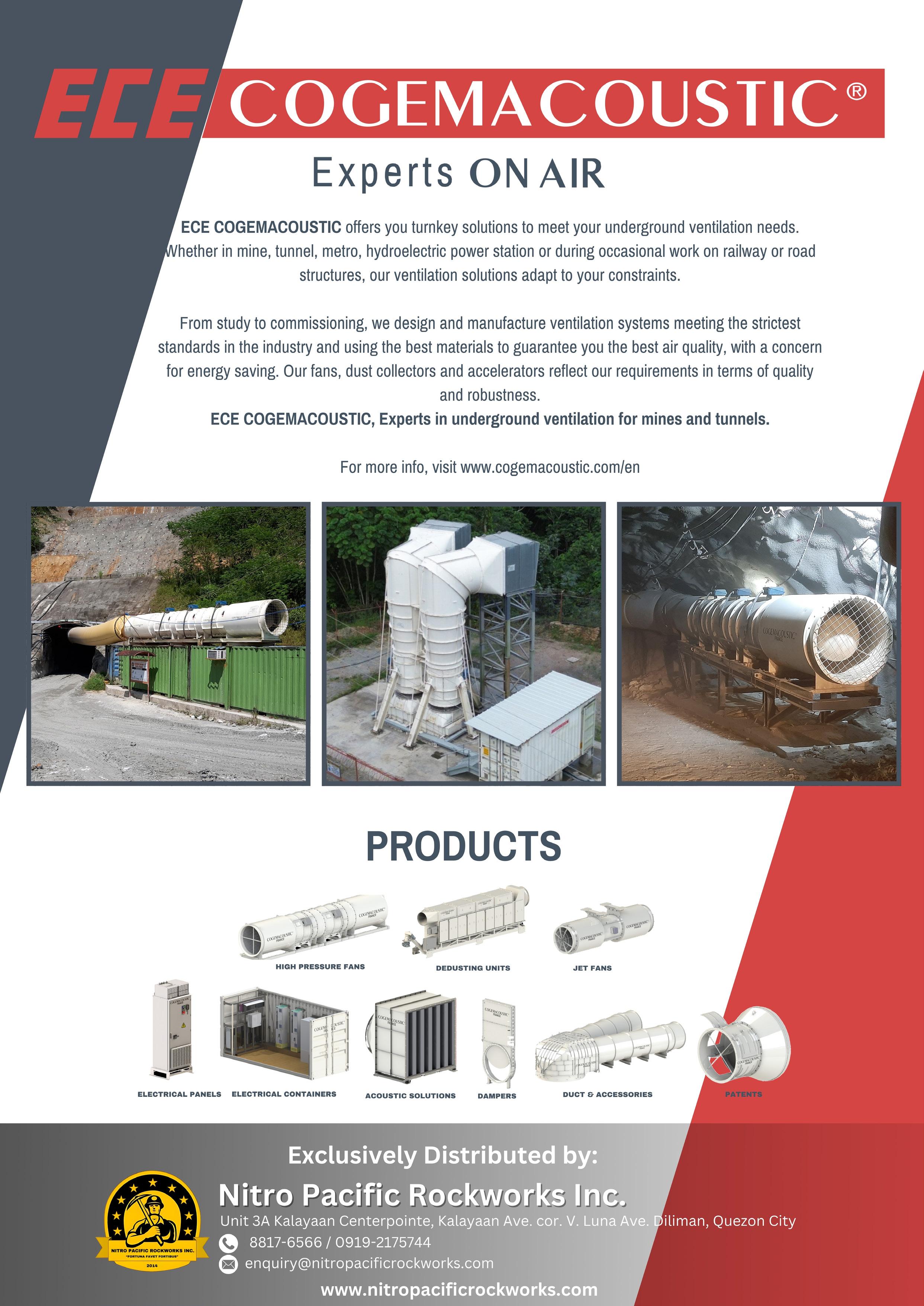
written by: PATRICIA A. O. BUNYE

the keynote of newly appointed Department of Environment and Natural Resources (DENR) Assistant Secretary (ASec.) for Mining Concerns and concurrent OIC Director of the Mines & Geosciences Bureau (MGB) Michael Cabalda.
In his prepared speech, ASec. Cabalda highlighted a number of initiatives including: (1) pushing a proposed Department Administrative (DAO) order articulating a policy framework that would allow the country to gain from our mineral wealth; (2) streamlining the permitting process to reduce the time to 11 months or shorter; and (3) reviewing the Small Scale Mining Act to formalize small scale miners and increase their contributions. These initiatives envision a mining industry that is not only an ore supplier but a critical player in mineral processing and downstream manufacturing.
The more spirited portion of the program was the Q&A where it was apparent that the audience was keen to hear directly from Assistant Secretary Cabalda in his first engagement with industry since his appointment.
Asked how soon the MGB will be able to implement the above policy changes, particularly the reduction of the processing
Patricia A. O. Bunye is a Senior Partner at Cruz Marcelo & Tenefrancia where she heads its Mining & Natural Resources Department and Energy practice group. She is also the Founding President of Diwata-Women in Resource Development, Inc., a non-government organization advocating the responsible development of the Philippines’ wealth in resources, principally through industries such as mining, oil and gas, quarrying, and other mineral resources from the earth for processing.
period for permits, Assistant Secretary Cabalda credited DENR Secretary Maria Antonia Yulo Loyzaga for leading these initiatives, foremost of which is giving the MGB Director the authority to sign documents that previously needed to be cleared. He also spoke about a more active MGB with respect to the pricing of nickel, statistics on safety and environment, among others.
Most encouraging was his assurance “Help me out and I’ll try to deliver and give you what you need.” He added that the “MGB is your partner. We will be with you when you do your work.” His warning “and we will punish you when you don’t” drew laughter from the crowd.
A recurring theme was the need for communication between the government and the private sector and institutionalizing a mechanism for government to address problems raised by industry. A suggestion to hold regular dialogs with industry was well received.
In addition, Asec. Cabalda expressed the need to touch base with his ‘council of elders’ or the MGB old-timers who possess the institutional knowledge and experience to be applied to (not-so-new) issues. This is expected to promote consistency in the MGB’s interpretation and application of issuances across the different regional offices. He likewise reiterated that he intends to build on what MGB,
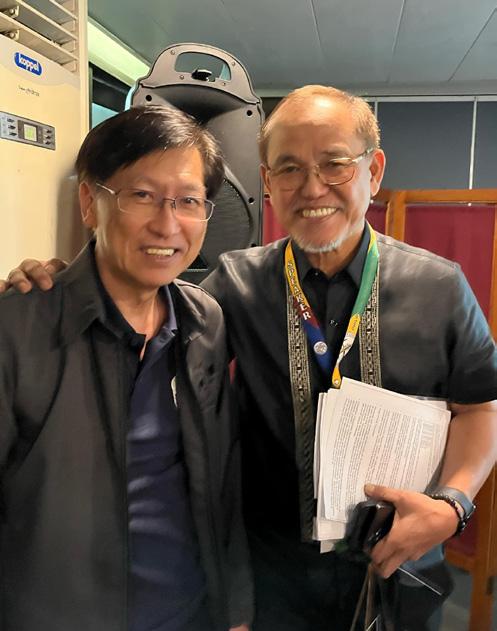
Assistant Secretary/ MGB OIC Director Michael Cabalda and his predecessor Danilo Uykieng.
and the regional directors have done.
Another key strategy is to digitize all records and information to eliminate the current antiquated paper-based system. With information being available online and available in real time, there will be greater transparency, as well as identification of where the bottlenecks are.
As Asec. Cabalda discussed the need for coordination with other government agencies, particularly the National Commission on Indigenous Peoples and the Department of Interior and Local Government, I recalled his comments (prior to his appointment) during the May 2024 “Mining Summit” where he said that there is no need to reinvent the wheel as there is an existing and comprehensive Minerals Action Plan prepared by the Minerals Development Council back in 2004, with specific and detailed
items to address the identified challenges. Even 19 years later, it is replete with implementable action items.
It bodes well that our new MGB Director is approaching his role with openness and candor. The industry can do no less by responding in kind. ***
Postscript: Due to family commitments, I missed the Chamber of Mines’ “Digging Deeper” Policy Forum and will also miss, for the first time in recent years, PMSEA’s Annual National Mine Safety and Environment Conference (ANMSEC).
The ANMSEC has always been an opportunity for DiwataWomen in Resource Development to contribute to the discussion of important mining issues, as well inviting the participation of the ambassadors of countries which are developed mining jurisdictions.
One particularly memorable event for me was our 2012 forum featuring the Deputy Mineral Resources Minister of South Africa, Godfrey Oliphant. He was a fiery and outspoken advocate for mining, despite his once being a member of South Africa’s Communist Party. His story of how he came to realize the important role that mining played in South Africa’s economy was the perfect counterpoint to the student activists who had met him in UP Baguio.

(PART ONE OF TWO)
written by: NOEL B. LAZARO, EVEART GRACE P. CLARO, JUDD YONDER L. REYES, AND MARIELLE D. MARBELLA

In the foothills of Brooke’s Point, Palawan, the air is thick with purpose as workers press seedlings into the earth, each one a small promise for a greener future. Two years into its operation, the Ipilan Nickel Project has planted nearly three million seedlings. Yet, while the commitment to reforestation is clear, the challenge lies not in the availability of seedlings or the manpower to plant them, but in securing suitable land for these young trees to thrive within the municipality’s 85,064.90 hectares.
Afforestation of previously scorched mountainsides and agroforestry initiatives are underway.
By May 2024, mining companies had planted over 55 million seedlings in more than 50,000 mined-out areas, expecting a survival rate near 90 percent. Tree planting can help local communities, but it is not a complete answer.
Mining drives the world’s economy, providing raw materials vital for industries. The World Economic Forum notes that half of global GDP relies on natural resources. But mining comes with heavy costs. A 2020 McKinsey report estimates that mining produces 1.9 to 5.1 gigatons of carbon emissions yearly, largely from coal-bed methane and energy use. In 2022, the Deloitte Economics
Noel B. Lazaro is a director and general counsel at Global Ferronickel Holdings, Inc. His practice spans diverse fields, including environmental litigation. He was an associate at SyCip Salazar Hernandez & Gatmaitan and a partner at Siguion Reyna, Montecillo & Ongsiako. A UP College of Law graduate, he teaches evidence, special proceedings, and special writs at law schools.
Eveart Grace Pomarin-Claro is the Corporate Secretary of Global Ferronickel Holdings, Inc. and the Executive Legal Officer at Platinum Group Metals Corporation. A University of St. La Salle College of Law graduate, she specializes in securities and capital markets, taxation, project finance, and mergers and acquisitions.
Judd Yonder L. Reyes is a research associate and paralegal at Platinum Group Metals Corporation. A Bachelor of Arts in Communication graduate (Magna Cum Laude) from Pamantasan ng Lungsod ng Maynila, she is a completer of the 29th Foundation Course of the Paralegal Training Program of the University of the Philippines - Law Center.
Marielle Marbella is a research associate and paralegal at Platinum Group Metals Corporation. A Bachelor of Science in Life Sciences-Communication Track graduate (Magna Cum Laude) from Ateneo de Manila University, she has a background in journalism and supports the group’s sustainability programs.
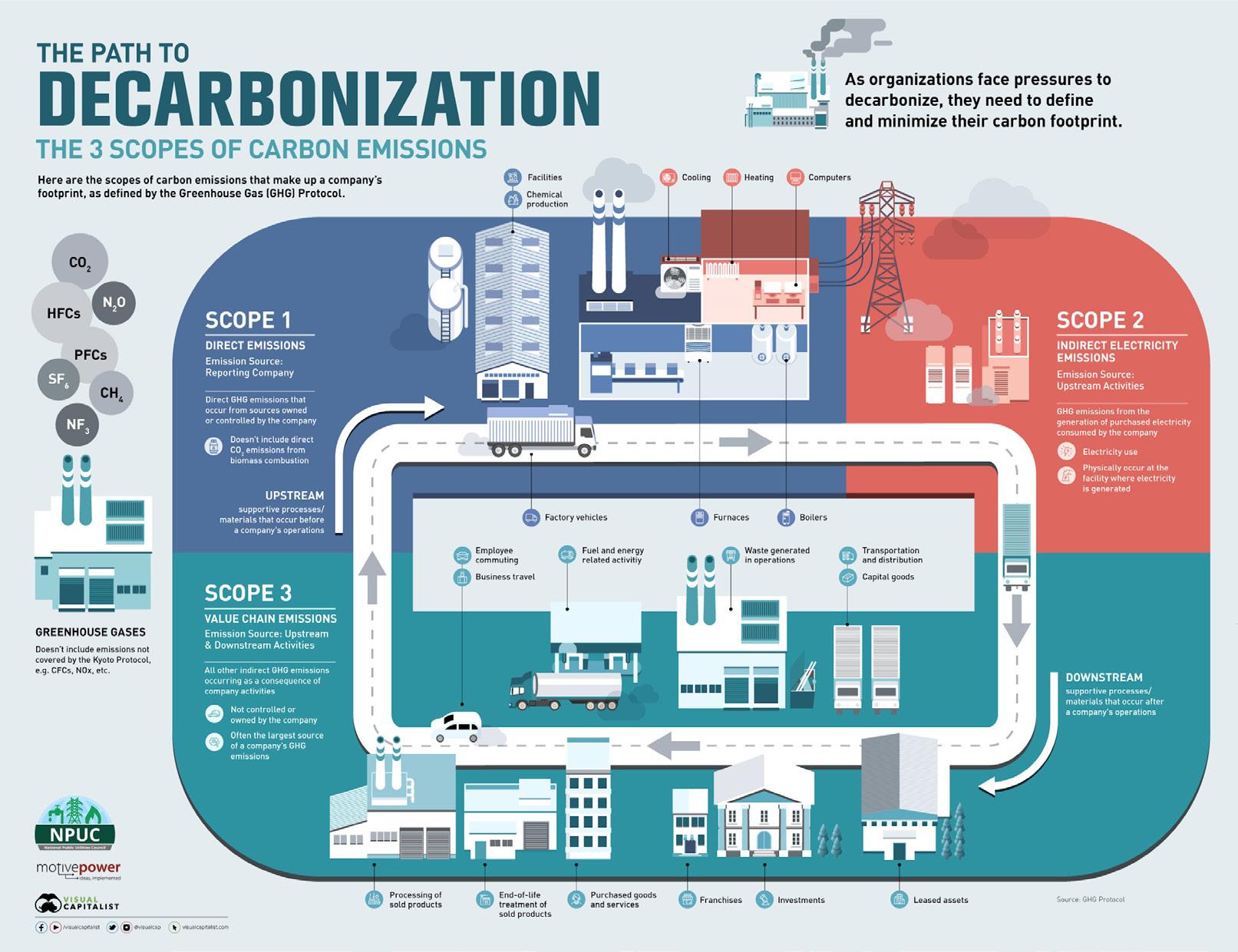
Source: Visual Capitalist (https://www. visualcapitalist.com/)
Institute warned that climate change could lead to global losses of $178 trillion from 2021 to 2070. In the Philippines, the Nationally Determined Contributions (NDC) indicates that the mineral industry will continue to be a major greenhouse gas (GHG) emitter through 2030. This article examines the challenges and opportunities for decarbonization in the Philippine mining sector.
Decarbonization is essential for mitigating climate change by reducing or eliminating carbon dioxide (CO2) and other GHGs. It involves transitioning to cleaner energy sources and adopting sustainable practices to lower pollution. The ultimate goal is achieving “net-zero” emissions, where the amount of GHG released is balanced by the amount removed. Emission control can be achieved through natural methods like tree planting or watershed restoration,
and the costlier technological solutions such as direct air capture and storage. As the global community grapples with the urgent need for sustainable practices under the 2015 Paris Agreement, the Department of Environment and Natural Resources (DENR) has launched a “green transition” initiative. Secretary Maria Antonia Yulo-Loyzaga frames the transition as a “whole-of-so -
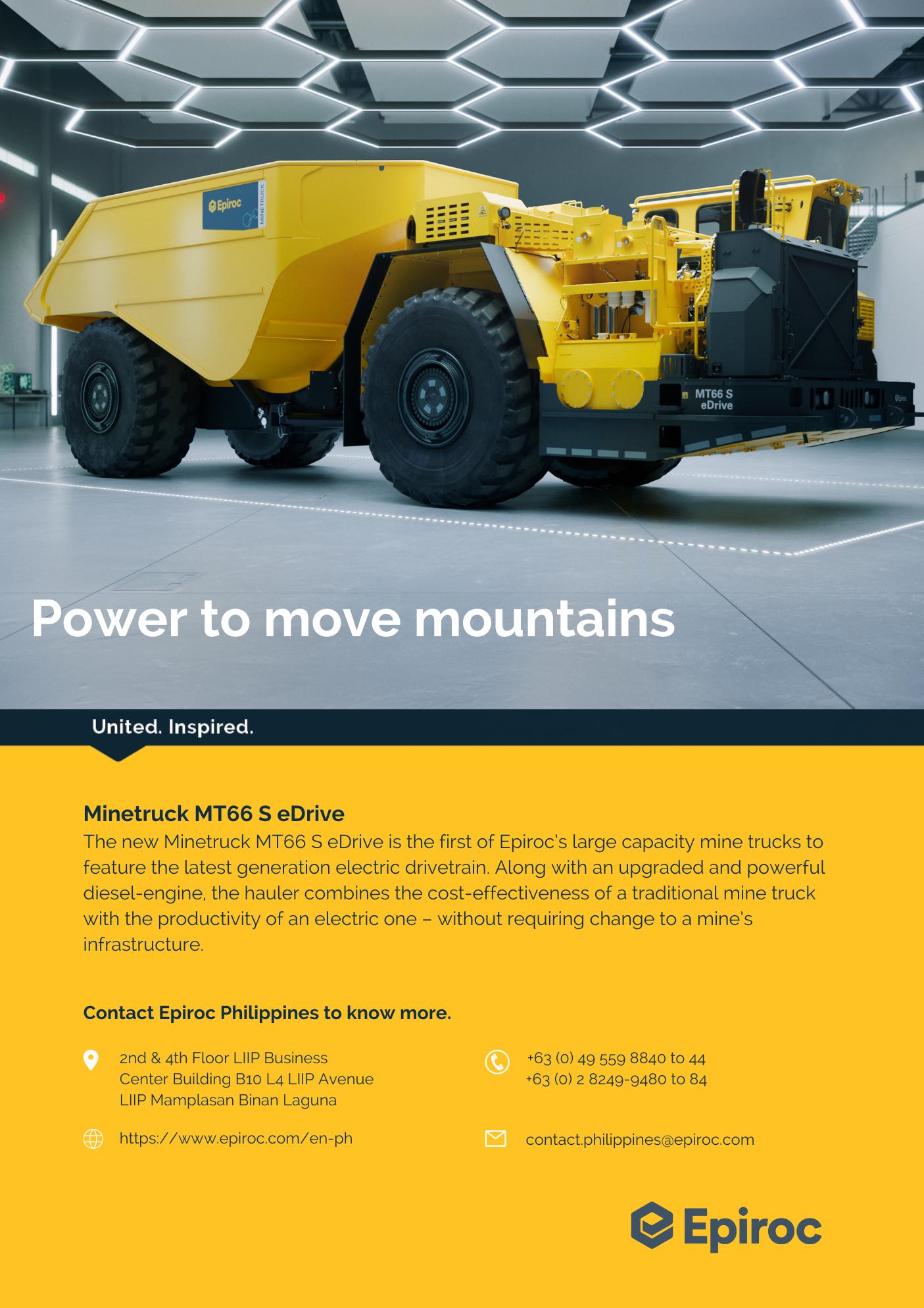
ciety” effort, advocating for science and technology investments alongside social and ecological considerations. Her emphasis on promoting biodiversity, carbon footprint reduction, and effective waste management practices is a step in the right direction.
At the Nordic-Philippine Climate Executive Dialogue held on June 18, she advocated for “nature-based solutions” for carbon reduction, suggesting a preference for simpler, less costly strategies over more complex carbon capture technologies. However, nature-based solutions, while essential, must be part of a broader strategy that includes robust carbon and efficient regulatory frameworks and tech advancements to genuinely meet the country’s pledge to reduce GHG emissions by 75 percent by 2030.
The secretary highlighted the Philippine Ecosystem and Natural Capital Accounting System (PENCAS), which aims to quantify the value of natural resources, including minerals, to socio-economic development and includes addressing the impacts on ecosystems by adopting the mitigation hierarchy in mining operations, which follows the steps of avoidance, minimization, restoration, and offsetting compensation for affected communities. On the other hand, the DENR’s recent release of the Implementing Rules and Regulations for the Extended Producer Responsibility Act of 2022, which mandates large companies to manage plastic waste, is a positive development.
The drive for modern infrastructure—encompassing electrification, renewable energy, automated systems, and AI-powered monitoring—represents a critical yet challenging evolution. In this context, electric vehicles (EVs) offer cleaner alternatives that reduce reliance on diesel machinery, which, according to a 2023 Mining Technology report, emits high levels of nitrogen oxides (NOx) and sulfur dioxide (SO₂). EVs are
also safer and quieter, contributing to lower fire risks.
However, such transformations often require substantial investments that can be prohibitively high. Thus, the call for effective incentives is crucial, but details remain vague. For Atty. Dante R. Bravo, president of Global Ferronickel Holdings, Inc. (FNI) and Philippine Nickel Industry Association, Inc. (PNIA), the industry “needs clarity in terms of incentives for mineral processing” and “competitiveness given the size of investments required.”
The dialogue around margin-based royalties and windfall profit taxes is envisioned to help build a more equitable arrangement.
The Chamber of Mines of the Philippines (COMP) has made a significant stride by launching the first phase of its Towards Sustainable Mining (TSM) initiative among its 19 members. This global standard for environmental, social, and governance (ESG) performance provides mining companies with essential tools to manage risks responsibly and adopt best practices. As the only ASEAN nation to adopt TSM, the Philippines sets a noteworthy precedent in the region.
The initiative focuses on vital areas such as health and safety, outreach to Indigenous Peoples, crisis management, tailings and water management, biodiversity conservation, and climate change. During the “Mining Philippines: Digging Deeper 2024” conference on October 17, four of eight randomly selected companies received the highest ratings across five key TSM protocols.
However, concerns remain regarding the scalability of these practices across the 56 largescale metallic and 59 non-metallic mines, along with over 3,000 small quarries in operation. The voluntary nature of TSM and its reliance on self-assessment raise doubts about its effectiveness. Inconsistent adherence, particular -
ly among non-members, could diminish the initiative’s overall impact.
This situation underscores the need for a more structured approach that transcends self-regulation. Regulators and legislators should take cues from TSM to develop a governance framework beyond existing mining laws and ISO benchmarks, potentially incorporating training and resource access.
TSM raises the compliance bar, but its success depends on overcoming limitations and fostering inclusivity.
Investing in carbon rights is touted to be a more ingenious approach to offset carbon emissions. Generating a new source of income helps to meet financial objectives while also advancing global carbon reduction goals.
The proposed Low Carbon Economy Investment Act (House Bill 7705) aims to advance the Philippines’ transition to a low-carbon economy. This legislation requires major GHG emitters to formulate decarbonization plans limiting global temperature increases to below 2°C. It also introduces a carbon pricing mechanism that imposes costs on emissions exceeding set thresholds, thereby creating a decarbonization fund. This fund is intended to be reinvested in sustainable, low-carbon initiatives, offering considerable opportunities for businesses and investors committed to sustainable development.
Concurrently, the Carbon Rights Act (House Bill 10635) is envisioned to overcome obstacles to investing in carbon forestry and related projects. This legislation clarifies ownership of carbon rights and establishes processes for their transfer, thus enabling better integration into global carbon markets. For investors, particularly those focused on nature-based solutions, this act opens new avenues for investment in essential carbon projects intended to achieve global emission reduction goals.
Carbon trading involves the exchange of emission rights and credits that permit organizations to emit specific volumes of CO2. Companies can purchase credits to increase emissions or sell them to reduce emissions. This system allows mining companies to support biodiversity and restore ecosystems while generating revenue.
Atty. Analiza Rebuelta-Teh, DENR Undersecretary for Finance, Information Systems and Climate Change, recently disclosed that the Department of Finance is creating a framework for carbon finance while the DENR is working on the rules for carbon credits.
These legislative initiatives signify notable progress, yet substantial challenges loom. The effectiveness of the Low Carbon Economy Investment Act hinges on precise baseline emissions data, rigorous enforcement, and vigilant monitoring; without these, companies may underreport emissions or sidestep decarbonization commitments. In addition, the viability of the carbon pricing mechanism depends on businesses’ capacity to adapt, requiring time to develop essential infrastructure and mitigate oversupply issues that have plagued other markets. Public backing for carbon pricing presents difficulties, particularly if it results in higher consumer costs; thus, clear communication of its benefits is essential.
Furthermore, while the Carbon Rights Act aims to attract investment into carbon projects, potential investors may confront legal ambiguities, bureaucratic hurdles, and a lack of transparency. Ultimately, the Philippines must compete with other nations for carbon project investments, necessitating demonstrable benefits, a stable regulatory framework, and proactive policies to avoid the pitfalls faced by early carbon markets in the European Union.
Addressing these hurdles will be crucial for their successful implementation and maximizing the benefits of a transition to sustainable practices.
(To be continued…)

written by: MARCELLE P. VILLEGAS
[Oct. 17, 2024] The Westin Manila -- Digging Deeper: A Mining Philippines Policy Forum is a oneday conference that tackles the most pressing legal and regulatory issues of the mining industry today.
On his Welcome Address, Atty. Michael T. Toledo, Chairman at Chamber of Mines of the Philippines, emphasized the need to address key challenges in the country’s mining sector. Toledo outlined the obstacles hindering the country’s mineral processing industry and called for immediate reforms to boost investor confidence and secure the industry’s long-term future.
He mentioned that these challenges have driven mining investors away from the Philippines and must be resolved to realize the common goal of the Marcos administration and the mining sector.
These are: (1) long-term policy consistency, (2) the long and complex approval process for exploration permits and mineral agreement applications, (3) business continuity risks from LGUs and communities, and (4) tax uncertainties and lack of adequate benefits to invest.
He pointed out that recommendations were already submitted to the President during a meeting in Malacañang recently. The recommendations are:
“First, assure long-term policy consistency via the drafting of a robust mining policy that would, among other things, clarify the role of national and local government units and specify the approach to Indigenous community management,” he said.
“Second: Simplify and expedite approval processes for mineral agreements by reducing application steps, eliminating redundancies, and imposing clear-cut timelines, in close coordination with government agencies with which our industry interacts. We also recommended the implementation of an online register of pending applications.”

“Third: Minimize business continuity risks from local ordinances
the status of mining companies as government contractors and exporters to be consistent across national and local laws; (2) rationalizing LGU power to issue ordinances that prohibit mining or specific mining methods within their jurisdictions; and (3) requesting ARTA to identify and fix redundancies between national laws and local ordinances, and empowering it to suspend the implementation of those inconsistent with the Ease of Doing Business Act and the LGU Citizen’s Charter.”
Finally, he stated, “Our fourth recommendation is: Address uncertainties in tax policy and investment incentives
Establishing a stable and predictable mining fiscal regime (2) Including a ‘financial stability clause’ in all mineral agreements to guarantee continuity of mining operations and to assure the sanctity of contracts, regardless of material adverse change in government policies that would prevent mining contractors from performing their obligations

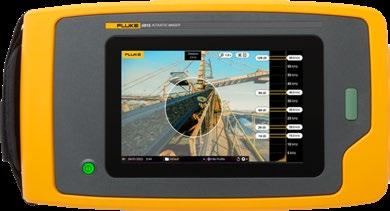
Enhance your safety and prevent downtime with the new Fluke acoustic technology. It allows user to see compressed air leaks, detect dangerous partial discharges, and detects potential mechanical problems at mine site.
Get your equipment’s and cables’ insulation resistances in check to keep you safe. You can combine a digital insulation tester with a full-featured, true-rms digital multimeter in a single unit to enhance your productivity for both troubleshooting and preventive maintenance.

www.fluke.com/en-ph


When is the last time you have done a earth ground test inside your facilities, power pylons, or buildings? Poor grounding not only contributes to unnecessary downtime, but exposes you to the risk of electric shock. Test your electrical grounding or bonding condition today.
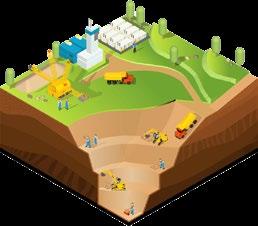


aims to reduce the approval time for mining permits from the current 7 years to just 2 years.
“When you start to evaluate applications, there are always technical and legal aspects and it depends on the person evaluating that. We want to track where these tracks are getting stalled,” he said.
David said that like the ECCs, the application always starts in the Regional Offices. He noted that the system is still imperfect, so there’s a need to iron out some kinks.
However, he gave assurance that the digital application process prevents some indiscretions that causes delays in the mining applications.
The DENR also introduced a parallel processing system, where permit approvals can be initiated without waiting for other regulatory bodies, such as local government units (LGUs) or the National Commission on Indigenous People (NCIP), to finalize their own approvals.
In a separate discussion during the forum, COMP announced that four of its operating members have achieved performance levels on par with global best mining practices, as measured by the Towards Sustainable Mining (TSM) standard.
Filminera Resources Corp.’s Masbate Gold Project received the highest verified ratings of AAA in TSM’s Biodiversity Conservation Management across all of this Protocol’s 3 Indicators. Philex Mining Co.’s Padcal Project received a rate of AAA in all 6 Indicators under Tailings Management.
TVI Resource Development Phils., Inc. was rated AAA in 3 of the 4 Indicators under Water Stewardship. Taganito Mining Co. received the highest scores in 4 of the 5 Indicators under Safety & Health, as well as in all 5 Indicators under the IP and Community Outreach and Social Development Management.
Toledo said, “TSM provides us a roadmap with which to measure our performance on important areas that our stakeholders, especially our host
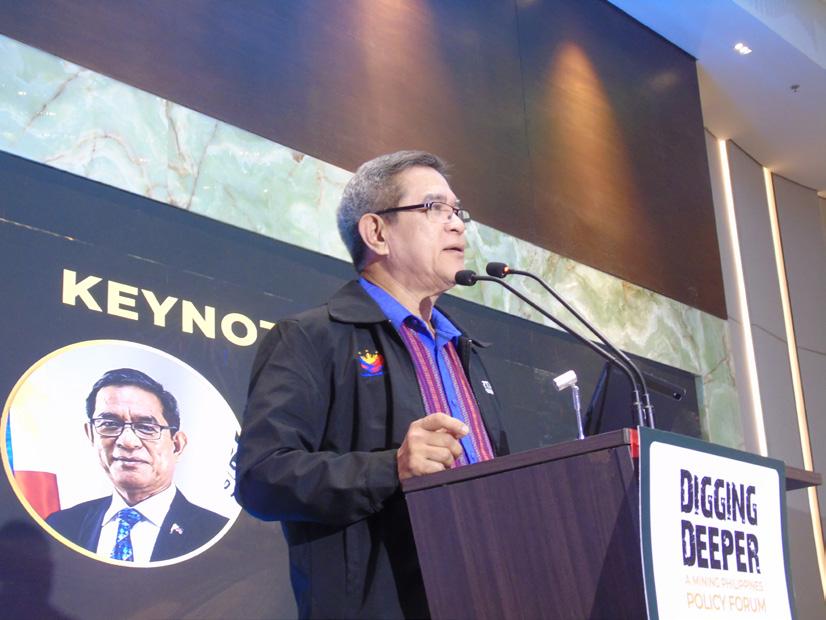

communities, care about. We now know how to achieve global mining best practices, and our members will constantly strive to reach the highest ratings towards better ESG performance, and consequently, improved relationships and bottom line.”
The 4 companies were among the 8 COMP operating members that were randomly selected this year to undergo external verification of their self-ratings for their 2023 TSM performance. The other 4 companies that were subjected to verification are Platinum Group Metals Corp. Surigao Project, Carmen Copper Corp., FCF Minerals Runruno Project, and Cagdianao Mining Co.
All of COMP’s 19 members with active mine sites submitted their TSM self-assessment results earlier this year. The 11 other self-rated mines will be verified in 2025 for their 2024 performance.
Most of the verified mines showed good assessments in IP Community Outreach & Social Development Management, as well as Safety & Health. However, there is a need to improve in the Water Stewardship and Climate Change Protocols.
TSM was established by the Mining Association of Canada in 2004 and adopted by COMP in 2017.
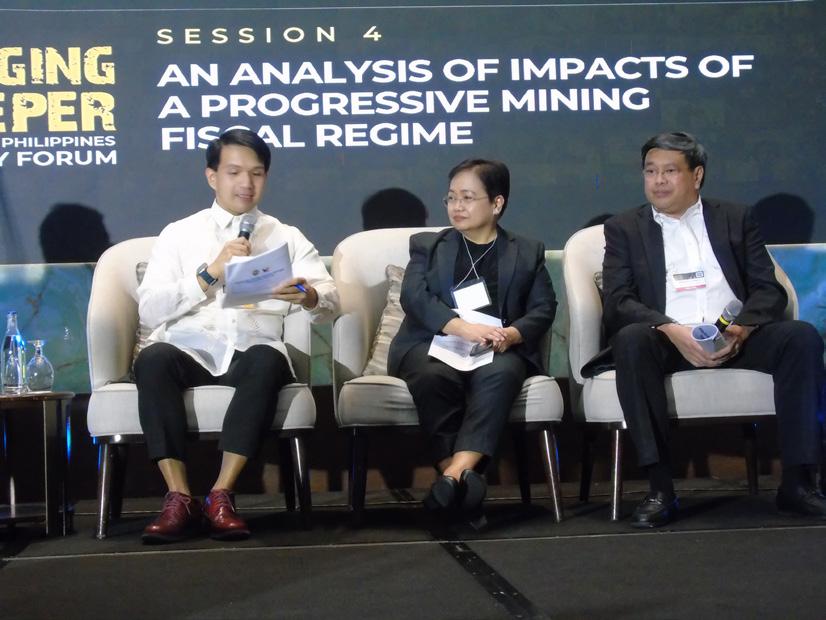

From the media release of COMP, TSM is defined as a set of tools and indicators to drive performance and ensure that key mining risks are managed responsibly, and best practices are used at members’ facilities. It is currently being implemented in 15 mining jurisdictions worldwide.
This year marks the first year of COMP’s full implementation of the program. The association of the Philippines’ biggest large-scale metallic mining firms had been preparing for TSM since 2018. Their preparation also entails the Filipinization of TSM Protocols and Indicators, the formation of a multi-sector advisory panel, the accreditation of external verifiers, and the development of the TSM online submission app.
The external verification reports for the 8 mines can be found in the COMP website.
Acknowledgement:
Thank you to the Chamber of Mines in the Philippines.
Thank you to Mr. Rocky Dimaculangan, Vice President for Communications & National Coordinator for Towards Sustainable Mining
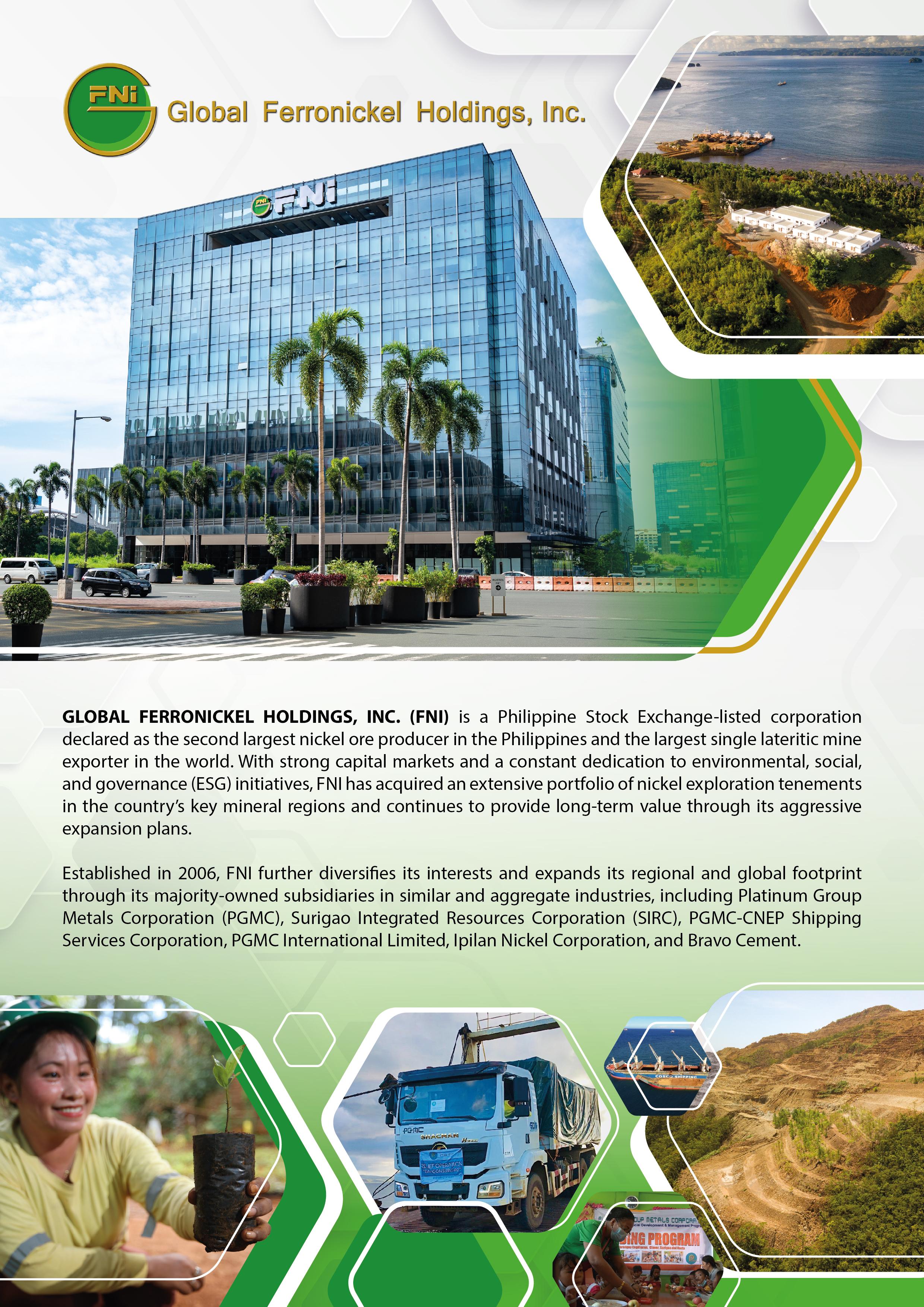
written by: MARCELLE P. VILLEGAS
Last Oct. 7th, the Philippine Mining and Exploration Association’s (PMEA) Monthly Membership Meeting had a full house as members were eager to meet and welcome the newest, concurrent OIC Director of MGB, Engr. Michael V. Cabalda. He is also the Assistant Secretary for Mining Concerns, Mines and Geosciences Bureau, DENR.
Mr. Joey Nelson Ayson, PMEA President, reported the PMEA Matters and Industry Updates. This was followed by Mr. Cabalda’s keynote speech.
The open forum had a lively exchange of questions, ideas, and forecast on what to expect in the near future in terms of MGB’s plans and actions in supporting the mining industry.
Present during the meeting were Atty. Danilo Uykieng (OIC Director, MGB), Mr. Rufino Bomasang (former Undersecretary of Dept. of Energy), Mr. Joel Muyco (former MGB Director), Ms. Tata Corpuz (The Australian Trade Commission or Austrade), Mr. Rocky Dimaculangan (Towards Sustainable Mining, Chamber of Mines of the Philippines), and more.
In his address to PMEA Members, titled “Challenges and Opportunities of the Philippine Mining Industry”, Mr. Cabalda highlighted the vital role of the mining industry in driving the Philippines’ economic recovery and transitioning toward sustainable practices. He also expressed the current administration’s commitment to revitalizing the mining sector amid increasing global demand for critical minerals.
“…The current administration is placing significant emphasis on revitalizing the mining sector. This is not only because of its immense potential, but also due to its key role in driving the country’s economic recovery.”
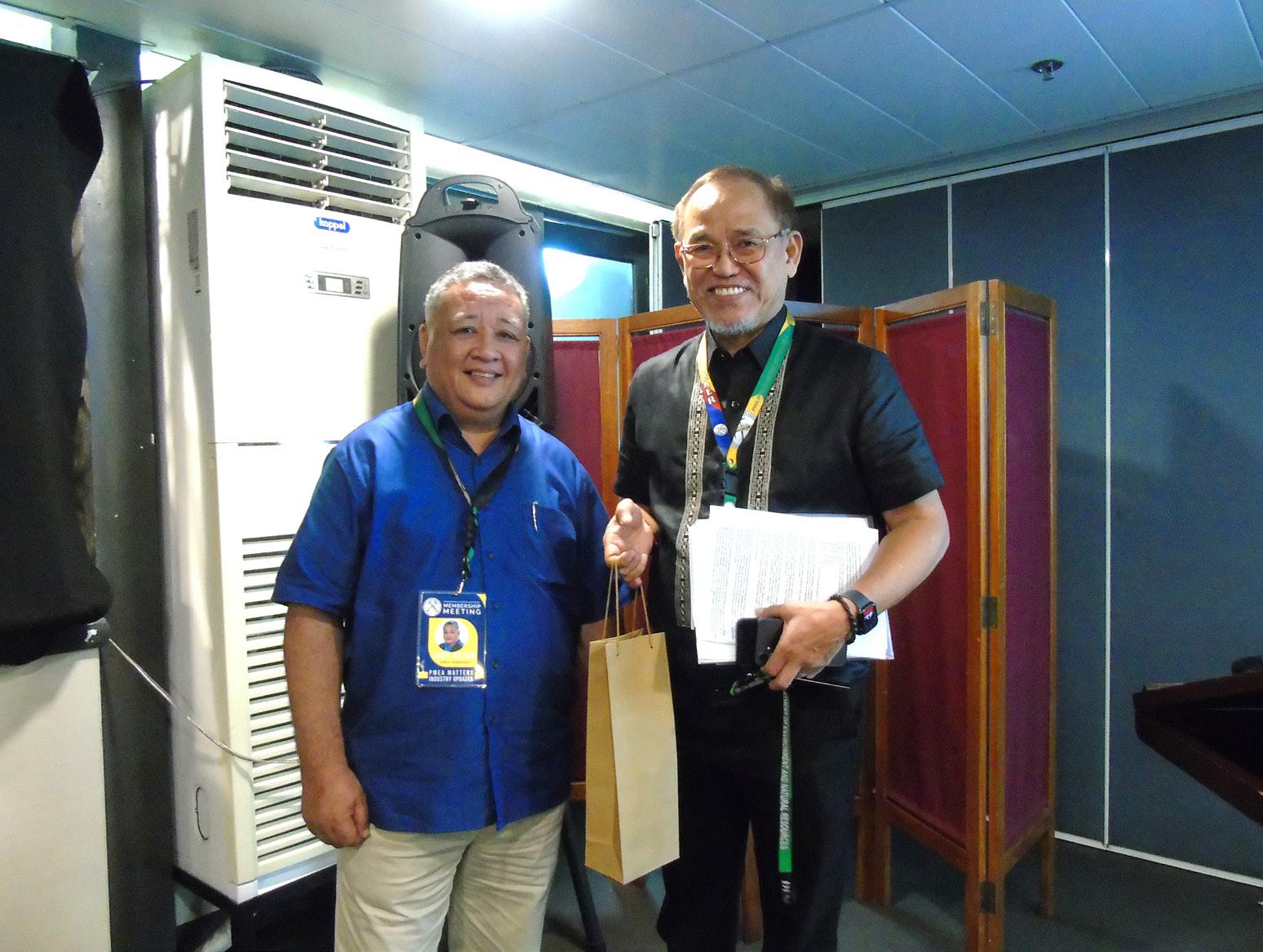
“This strategic move comes at a pivotal time as the whole world embarks on the journey towards net zero carbon emissions and a clean energy future. The increasing global demand for critical minerals places significant responsibility on the mining industry beyond ensuring the delivery of the useful programs and services.”
“MGB remains steadfast in its commitment to promoting sustainable and responsible mining practices.”
“Central to this is the Bureau’s ongoing efforts to establish a policy framework that would allow the country to gain more from our mineral wealth. This would include streamlining of the permitting process.”
He pointed out that MBG aims to accelerate the permitting process, thus reducing approval time from 8 to 11 years to as little as 11 months.
“We are working to ensure that our policies reflect the needs of the current administration and the realities of the industry,” he stated.
Additionally, he acknowledged the need for a thorough review of the “long overdue” Department Administrative Order (DAO)
and improvements in People’s Small Scale Mining Act to foster inclusivity and economic contribution from local miners.
He urged stakeholders to embrace innovation and sustainability, stressing that the future of the mining industry lies not just in resource extraction but in advancing mineral processing and downstream manufacturing.
Mr. Cabalda concluded by calling for collaboration in building a resilient mining sector that supports both economic growth and environmental stewardship.
“Together, we can navigate the complexities ahead and establish a mining industry that is a cornerstone of our nation’s progress.”
“As we move forward, the challenge is not merely to extract resources, but to harness them in ways that elevate both our economy and our communities.
The path ahead may be complex, but with our shared commitment to innovation, sustainability, and responsible mining, we can navigate these challenges successfully.”
[Makati City] Oct. 7, 2024 –PMEA
In GHD, we seamlessly integrate our services to achieve significant and lasting benefits to the mining business of our clients.
Tailings storage facility design
Geology and geophysics
Hydrogeology study
Geotechnical investigation
Hydrology study
Civil infrastructure design
Renewable energy system design
Structural design
Environmental impact assessment and monitoring
Mine closure planning
Construction management and supervision
Digital twin
ESG and strategic sustainability initiatives development
Asset management framework development

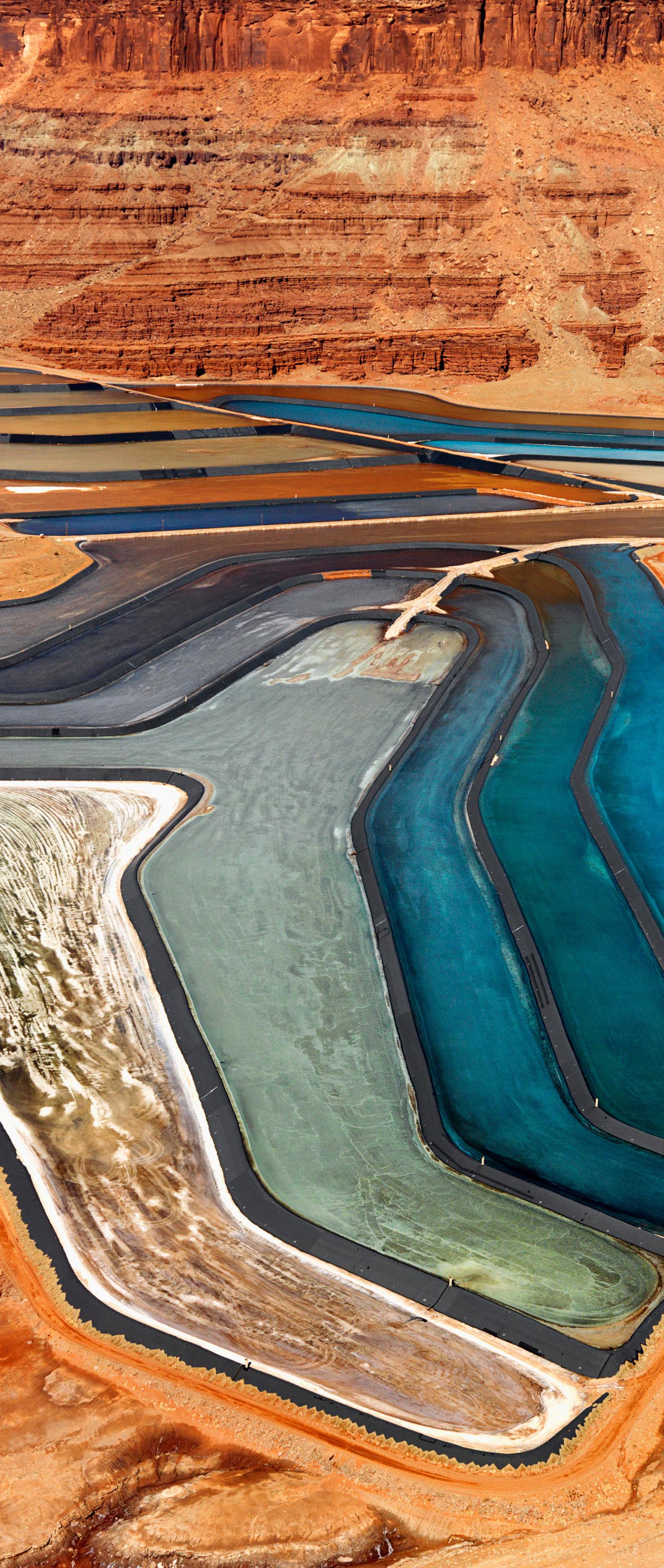
In closing, he said, “Let us continue to work together to build a mining industry that serves as a cornerstone that the nation’s progress conflicting at all the economic recovery, but to a cleaner and more prosperous future.”
Later in the meeting, there was an open forum and Q&A session where many participated in sharing their thoughts and questions to the guest speaker.
One of the participants in the discussion was Mr. Rufino Bomasang who is the Chairman of Upgrade Energy Philippines, Inc. Given his background as former Undersecretary of Department of Energy, Mr. Bomasang gave an informative talk about the mining industry’s role in the global energy transition. He read an excerpt of his speech during the Powertrends 2024 International Exhibition and Conference, held last Oct. 3-4, at New World Makati Hotel.
He read, “The transition is now well underway and according to the International Renewable Energy Agency, RE accounted for two thirds of new power generating capacity in 2020 and countries around the world are setting ambitious targets for RE deployment.”
“However, major constraints remain, one of which is the shortage of minerals (e.g. nickel, cobalt, lithium, copper and rare earth elements, etc.) needed for batteries and expanded electricity infrastructure. They are essential components in modern technology, RE systems, electric vehicles (EV, and high-tech manufacturing.”
“In a recent interview with Sherry Duhe, CEO of Newcrest, Australia said ‘The mining industry needs to bring online the equivalent of 17 more Escondidas (the world’s biggest copper mine) just to meet global demand for copper under the energy transition.’”
Moreover, Mr. Bomasang noted, “The Philippines, with its vast untapped resources of nickel and copper, is potentially in a position to help facilitate the implementation of the global energy transition by expanding
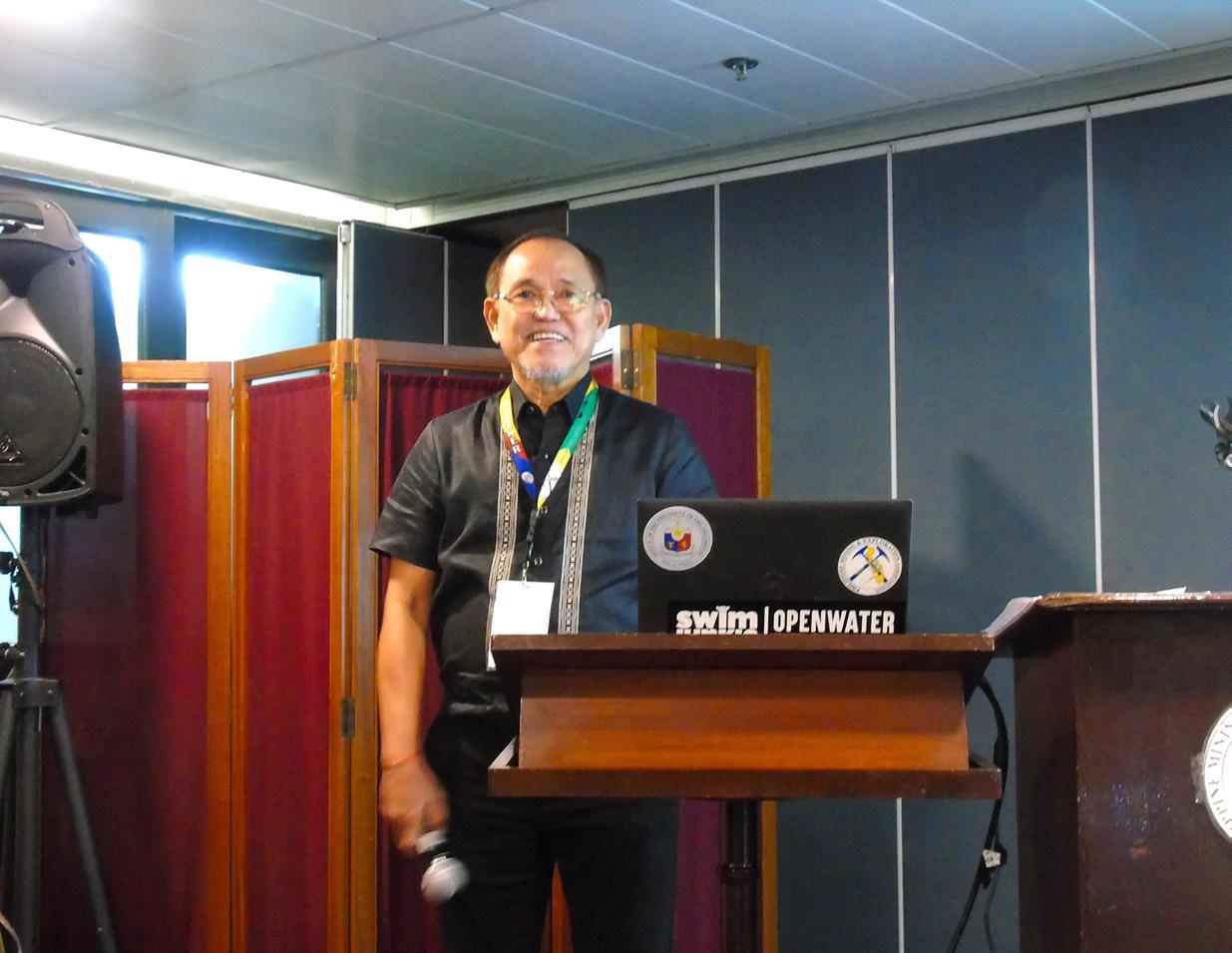
its production of said minerals to help address the shortage of critical minerals, which, if not addressed, could delay achievement of the UN’s ultimate objective of net zero emissions by 2050.”
“For the Philippines, the said expansion of critical minerals creates tremendous economic and strategic opportunities and benefits while further enhancing its energy security, provided it can effectively address key challenges and constraints to said expansion.”
He mentioned that among the regulatory and governance issues, some of the major issues are corruption, inconsistent regulations, inadequate enforcement of environmental and labor standards, and uncontrolled illegal mining.
“Can the Philippines actually address the various challenges and constraints and thereby realize the tremendous economic and strategic opportunities, while enhancing national energy security? I am optimistic the Philippines can with the current supportive policies of the Marcos administration government, which hopefully will be sustained under succeeding administrations.”
He clarified that this optimism is due to the fact that there has been a growing new paradigm of responsible mining in the Philippine mining industry since the promulgation of the Mining Act of 1995.
“We in the Professional Regulatory Board of Mining Engineering have actually witnessed said new paradigm

in our recent mine visits. We have witnessed progressive rehabilitation in surface mining operations, particularly in nickel mines, modern more tailings disposal systems in copper mines, upliftment of the lives of surrounding communities, including those of indigenous communities, and extensive reforestation being conducted by the mining companies.”
“I particularly saw Semirara Coal Mine propagating marine life through a hatchery. Not surprisingly therefore the last ASEAN awards for best mining practice and best mineral processing practice were won by Rio Tuba in Palawan and Oceana Gold in Nueva Vizcaya, respectively.”
“All of these bode well for the future of the Philippine mining industry, the realization of the economic and strategic opportunities and benefits for the entire country, and enhanced energy security from the expansion of its nickel and copper production,” said Mr. Bomasang.
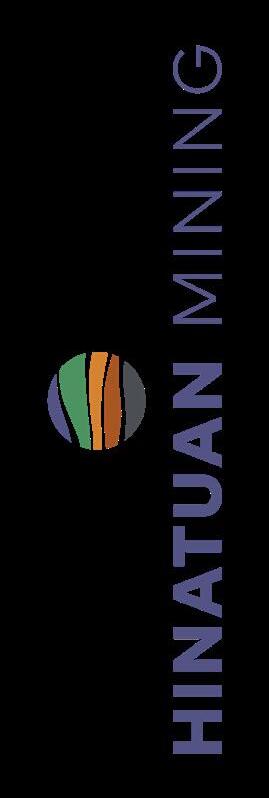

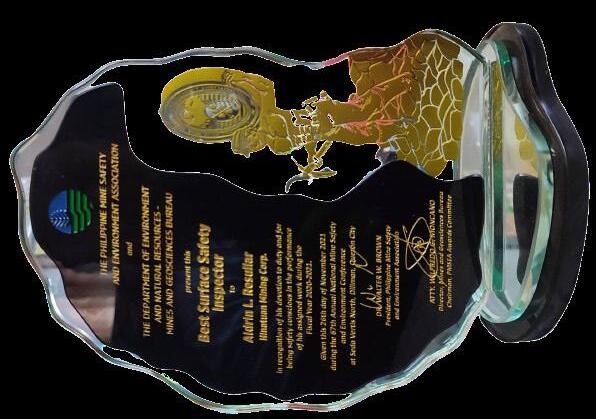
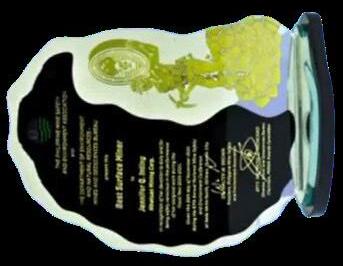



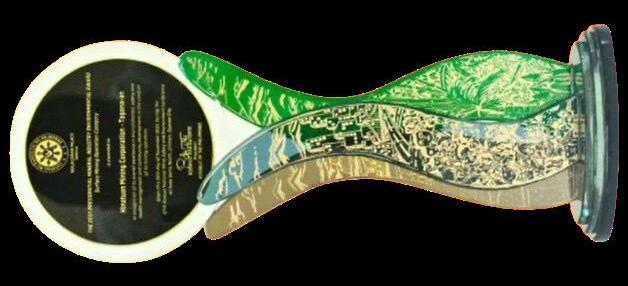
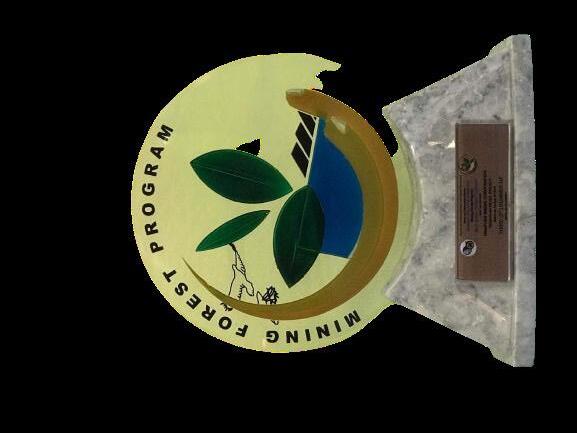


written by: MARCELLE P. VILLEGAS

During a mid-year mining event by the Philippine Mining Club, guest speaker, Dante R. Bravo, discussed the Philippine mining industry’s growth, particularly nickel, amidst global trends on green technologies. Bravo is a member of the Board of Trustee of the Chamber of Mines of the Philippines and President of the Philippine Nickel Industry Association, Inc. (PNIA). He is also the President of Global Ferronickel Holdings, Inc.
Despite a 28% drop in nickel prices from July 2023 to July 2024, with forecasts ranging from $16,954 to $18,635 per pound for fiscal year 2024, long-term demand is projected to rise due to electric vehicles and clean energy technologies. The industry is adapting ESG principles and standardizing practices to attract foreign investments, with
potential partnerships from countries like Canada, Australia, and USA. Challenges include regulatory hurdles, but the Philippines aims to enhance its global competitiveness through policy reforms and strategic collaborations.
Bravo discussed the increasing demand for critical minerals caused by the shift towards green technologies and digitalization.
“As the world transitions towards green technologies and digitalization, the demand for critical minerals like lithium, cobalt, and nickel, is increasing rapidly. These minerals are essential for the production of electric vehicles and renewable energy technologies,” he said.
“Despite the rising demand, the global mineral market is experiencing significant fluctuations due to various macroeconomic and geopolitical factors. Recently, we have observed a general decrease in metal prices globally. This could be attributed to a number of factors.”
Emphasis on the importance of sustainable mining practices, with mining companies adopting ESG principles to reduce environmental impacts and ensure transparency.
On his keynote speech, he said that China currently dominates the market for critical minerals, with advanced technology and public finance.
The Philippine government’s efforts to open up the mining indus

Intertek Minerals is proud to be the largest in-country provider of mineral testing services in the Philippines.
As the Philippines continues to experience growth in its mining industry, access to reliable, efficient, and comprehensive mineral testing services is more critical than ever.
Intertek is a leading Total Quality Assurance provider to industries worldwide.
+1000 locations
+100 countries
try for foreign investments are seen as a positive development.
The rise of net zero goals in major economies creates opportunities for the Philippines to widen its market for critical mineral exports.
Bravo reported that nickel prices have dropped significantly by 28% from July 23 to July 2024, with a forecasted range for fiscal year 2024 between $16,954 and $18,635 per pound.
The decline in nickel prices is attributed to increased supply from countries like Indonesia, the ban on Russian and UK metals, and trade tariffs.
Despite the current price drop, long-term demand for nickel is expected to increase due to the growing demand for electric vehicles and stainless steel.
Bravo projects a potential nickel deficit by 2030, driven by the increasing demand for clean energy technologies.
Bravo emphasizes the importance of ESG principles in the mining industry, highlighting the need for environmental stewardship and social responsibility.
He stated, “There is a heightened focus on sustainable mining practices. Mining companies globally are increasingly adapting environmental social and governance, or ESG, principles, to mitigate environmental impacts, improve social outcomes and ensure confidence transparency. This shift towards sustainability is crucial for maintaining the social license to operate and for the long-term viability of the mining sector.”
“But mainly right now, if you want to have a good investment, you have to comply with the ESG standards. So, I believe that the industry is truly passionate about ESG, and I look forward to friendly competition among us players on how best we can meaningfully contribute to our communities and enhance our environment.”
He noted that the integration of ESG practices is seen as a strategic imperative, not just a regulatory requirement. Mining companies in the Philippines are actively implementing ESG principles, including the Sustainable Development Goals (SDGs) and ISO 14001 management systems.
The extractive industries transparency initiative mandated by the Department of Finance ensures transparency at the multilateral level.
Bravo presented the findings of the Fraser Institute’s 2023 mining survey, which ranks the Philippines 72nd out of 86 mining jurisdictions. The low ranking is attributed to historical challenges, including the constitutionality of the mining law, the global financial crisis, and a moratorium on mineral agreements.
Despite these challenges, the development of the local mining industry is critical for both the national and global economies.
Further in his address, Bravo emphasized the importance of positioning the Philippine nickel industry for long-term success and sustainability.
“Despite our industry’s current standing against our foreign neighbors, the future remains bright for local mining industry, major countries globally have reached out to our local industry in the hopes of rooting sustainable and significant trade relationships.”
He noted that appointing a champion for the nickel industry, such as Secretary Frederick D. Go, is crucial for advocating for the industry and influencing regulators. He stated that the Philippines must remain persistent in its efforts to attract more investments and position itself as a key player in the global market.
Sustained collaboration and political will are essential to translate signals into firm commitments that will make the mining industry truly competitive.
Bravo said, “There is a grow -
ing interest in the Philippines, particularly because this administration has opened up the mining industry for more foreign investments. Now, with the continuous support of the government in our local communities, we continue to ramp up production to meet our foreseen increase in demand brought about by increased productivity in China and the net zero goals.”
Last October 17 at Digging Deeper 2024: A Mining Policy Forum, Bravo said a rebound will be felt next year with La Niña or prolonged wet season finally ending. This year, nickel production is expected to fall short of expected targets primarily because some companies stopped production due to inclement weather. He said a spike in demand is expected in 2025 due to the global demand for transition metals, buoyed by the boom in e-vehicle production, including batteries.
Mines and Geosciences Bureau (DENR-MGB) reported the value of production metal reached P249.05 billion in 2023, up by 4.8% from P237.66 billion in 2022 with gold accounting for nearly half of the total production value or P106.64 billion, a 17% increase from P91.05 billion in 2022.
Nickel ore was valued at P65.84 billion, up by 7% from a year ago. Nickel ore and other nickel byproducts were valued at P113.37 billion, accounting for 45.52% of the total production value, while copper was valued at P25.41 billion (10.2%), and the combined output of silver, chromite, and iron at P3.63 billion (1.46%).
Metals production declined 6.7% in value during the first half amid soft nickel prices, according to the MGB.
The Philippine government, under the Marcos Jr. administration, is counting on mining to play a crucial role in the country’s post-pandemic economic recovery. The mining industry contributed 249.05 billion to the national economy in 2023, with nickel, gold, and copper production as the leading minerals. As the industry looks to the future, addressing policy and operational bottlenecks will be key to unlocking its full potential.


Versatility and optimal lifting performance
For almost a century, Manitowoc Cranes has been a premier crane manufacturer. We pride ourselves in providing the most complete range of lifting solutions and services to our customers. Manitowoc Cranes off the most innovative and highest quality products in the market, with the best dealer and service network to support them.
Manitowoc Cranes product line up:
• Grove all-terrain cranes
• Grove rough-terrain cranes
• Grove truck-mounted cranes
Support Services:
• Parts & Services
• Maintenance
• Manitowoc lattice-boom crawler cranes
• Potain tower cranes

written by: MARCELLE P. VILLEGAS
On October 7th, Philippine Mining and Exploration Association (PMEA) President, Joey Nelson R. Ayson, reported PMEA Matters and Industry Updates during the association’s Monthly Membership Meeting in Makati.
He mentioned that according to DENR-MGB, the metallic production on the first half of 2024 is Php114.77B. In contrast, last year’s metallic production is Php123.01B (H1 2023). This is due to lower gold and nickel production and lower nickel prices. The estimated royalties within mineral reservations are Php81.33M, from 20 nickel mines and 1 chromium mine. The estimated excise tax is at Php2.84B. (Au mines - Php1.14B or 40.07%, Cu mines - Php0.99B or 35.17%, Ni mines - Php0.65B or 22.82%, and Cr/Fe mines - Php0.05B or 2.22%)
On the first half of 2024, the top producers in gold are PGPRC (2933 kg), OGPI (1536 kg), APEC Maco (1340 kg), FCF (1312 kg), MMPRC Co-O (741 kg), and BSP Purchases (3883 kg -- excludes purchases from Benguet, OGPI, Hexat). Total gold produced is 14,187 kg.
For copper, the top three producer are CCC (92,555 DMT), OGPI (26,468 DMT), and Philex Padcal (23,027 DMT). Total copper production is 142,050 DMT.
For nickel direct-shipping ore (DSO), the top producers are Rio Tuba (3,053,599 DMT), Taganito (1,783,398 DMT), Nickelace/Verum Terra (987,224 DMT), Carrascal Nickel/CTPCMC (961,359 DMT), and CTPCMC Adlay & Dahican (826,851 DMT). Total nickel production is 13,372,483 DMT.
For silver, the top producers are TVI Balabag (10,446 kg), APEX Maco (4919 kg), PGPRC (2888 kg), and OGPI (2168 kg). Total silver production is 23,268 kg.
For chromite, the top producers are Taganito HPAL (37,887 DMT) and Techiron (35,125 DMT). Total chromite production is 73,013 DMT.
For iron, the top producer is Ore

Asia Mining (31,798 DMT). Total iron production is 31,798 DMT.
Finally, for mixed nickel-cobalt sulfide, the top producers are Taganito HPAL (25,823 DMT) and Coral Bay HPAL (13,636 DMT). Total production for mixed nickel-cobalt sulfide is 39,459 DMT.
DENR-MGB UPDATES
Staff Movement
-- Engr. Mike Cabalda was appointed as DENR Assistant Secretary (co-terminus) on August 27, 2024.
-- DENR SO 2024-568 assigning Mike Cabalda as ASEC for Mining Concerns and Concurrent OIC MGB Director
-- DENR SO 2024-567 assigning Engr Ted Sandoval as OIC Asst. MGB Director
Draft Policy Enhancement for the EIA Process of Mining Projects (Proposed DAO)
-- Canada TAP EDM Project
-- Consultations held at DENR on Sept. 26-27, 2024
-- PMEA has sent its comments, but proposed DAO intends to:
1. Require ECC during exploration
2. Involvement of EMB in the SDMP/
CDP with experts to do reviews (costs charged to??)
3. Increasing buffer zone from 20m to 30m
4. Requiring IP consent before issuing EP
5. Estimate GHG emissions and mitigating measures for >25,000 mt CO2
6. Gender and Human Rights to be included
7. Strategic Environmental Assessment for mining projects within biodiversity zones
8. Assessment of mine closure plans by experts if there are residual structures/post closure monitoring
MGB MIMAROPA New Office
Their new office is located at Basic Petroleum Building, 104 Carlos Palanca Street, Legaspi Village, Makati City.
Exploration for Critical Minerals (LGSD)
-- Ni, Cu, Co, Cr, Fe, Au, REE, PGMs
-- Establishment of new mineral reservations
-- Ongoing geological assessments; environmental resource mapping and conduct of public hearing to follow
-- REE Exploration (Phase 1: 20172025)
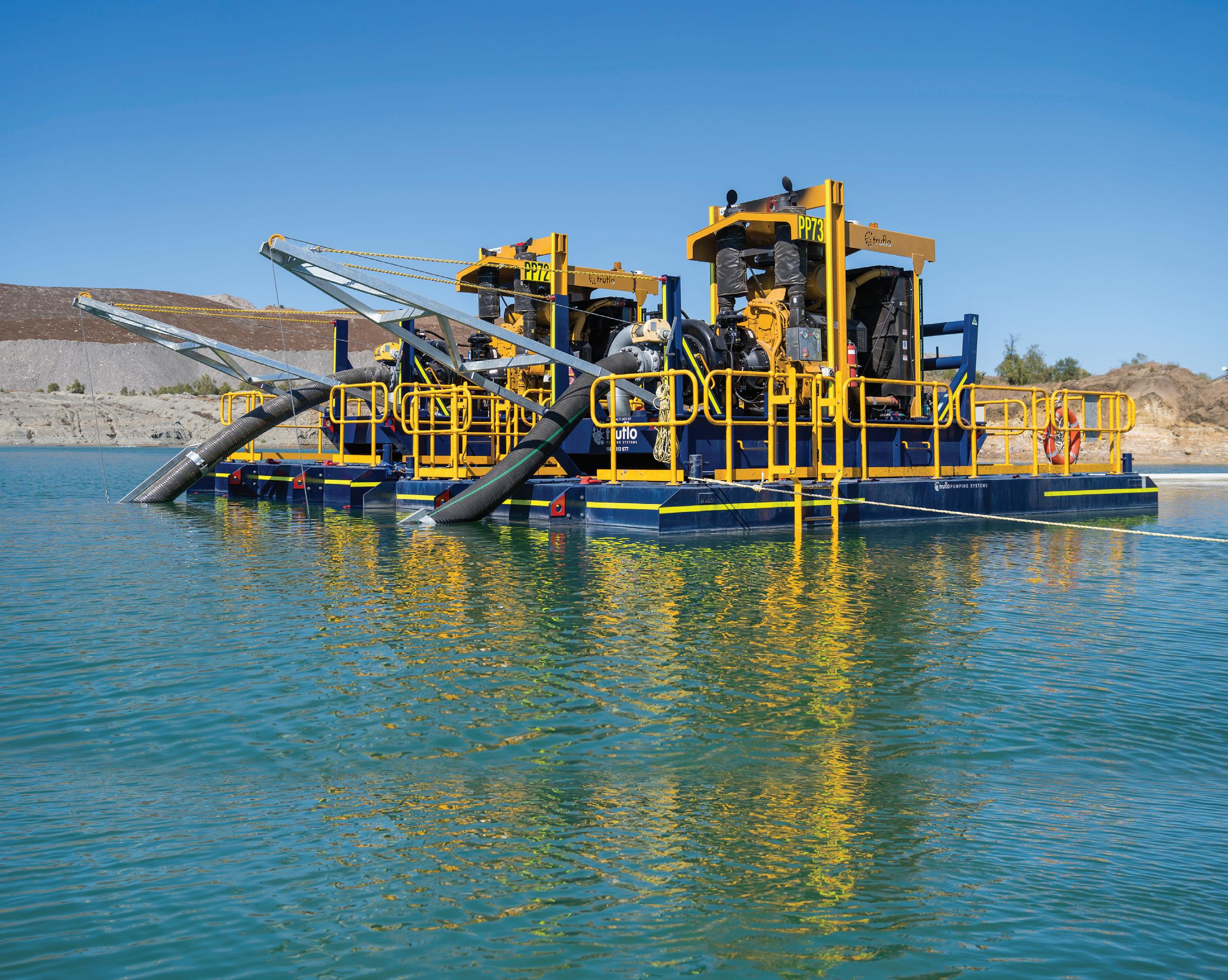

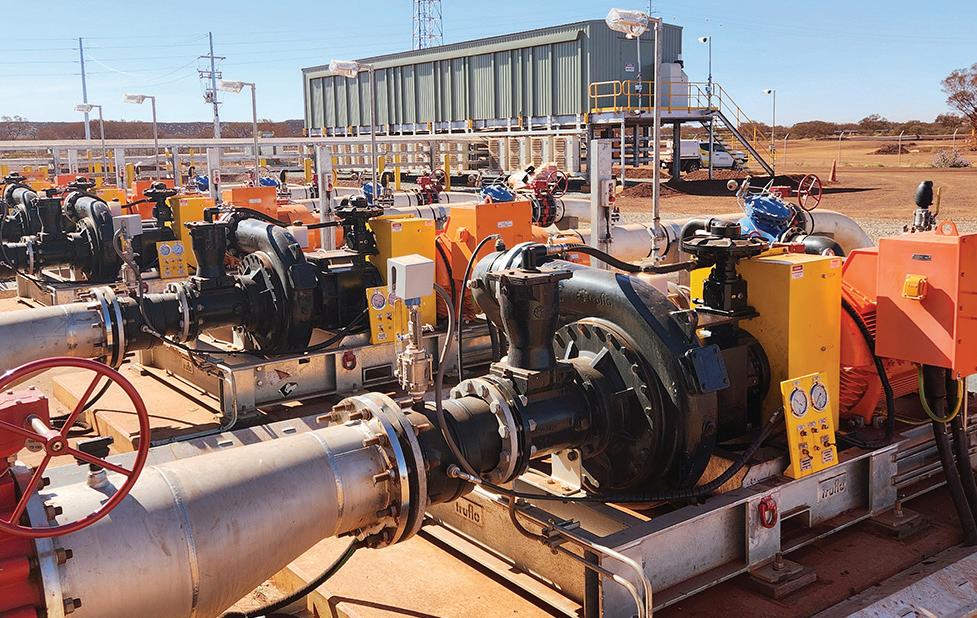

< Page 36
Extraction of Critical Minerals (MTD)
-- Pilot-Scale Production of Nickel Pig Iron from Low Grade Laterite Ores
-- Significant amount of Sc in the slag
Critical Minerals in Seabed (MGSD)
-- Deep sea (2,500-4,000m depth) –manganese nodules and crust
-- Shallow marine (40-100m depth) –magnetite sand, placer metals and quarry sand materials
-- Draft Guidebook for offshore mining applications, evaluation and operations monitoring
Towards Sustainable Mining (TSM)
-- 19 companies submitted self ratings with 8 companies undergoing external verification
-- Verified results were discussed in detail in October 17, 2024 at Digging Deeper – A Mining Philippines Policy Forum.
National Unified IEC Program (NUIECP)
-- Survey of participating organizations show overall satisfaction with campaign management and impact
-- Generated a total PR value equivalent to almost PhP 1B – nearly 2,000% of target
Presidential Mineral Industry Environment Awards (PMIEA)
-- 42 entries have been received by MGB Regional Offices
-- Results of initial screening (for field validation) (Quarry – 11 of 16; Surface Mining – 13 of 17; Mineral Processing – 3 of 8; Underground Operations – 0 of 0; Exploration – 0 of 1)
PwC Audit
-- Phase 1 on organizational set-up completed
-- Phase 2 on processes completed and final report to be prepared
Senate Bill 2826 (Enhanced Fiscal Regime for Large Scale Metallic Mining Act)
-- Introduced by Sen JV Ejercito- Royalty of 5% of gross output within mineral reservations and 5-tier margin-based for those outside
-- 5-tier windfall profit tax- 40% share of LGU to be remitted directly to concerned LGU
-- Local business tax shall not exceed 50% of 1% of total gross output
-- Ring fencing – contractor treated as a separate taxable entity with respect to each tenement
Proposed Amendments to RA 7076
-- Revision of HB 6408 as proposed by National Coalition of SSM in the Phil, ALU-TUCP, ILO, MGB
-- Establishing a “Minahang Bayan”,
limited validity of mining contracts, definition of SSM
BSP Gold Sale
-- 24.95 tons Au sold in H1 2024; reducing total Au reserves to 134.06 tons
-- Average Au reserves from 20002024 is 187.99 tons
Anti-Red Tape Authority
-- Included responsible mining in 2024 as among its focus sectors for re-engineering and streamlining
-- Discussions with MGB, NCIP, LGU have identified the challenges and corresponding initiatives for streamlining the permitting process and service requirements including permits issued by LGUs
-- Invitation extended to Private Sector Advisory Council (PSAC) for the conduct of Whole of Government Re-engineering and Process Streamlining Workshop for the Mining Sector (Oct. 08, 2024)
-- Discussions to focus on: 1. Mining’s contribution to national economy
2. Fostering a stable and conducive environment for domestic and foreign investments 3. Regulatory frameworks, challenges and best practices in mining
Reference: [1] Ayson, Joey Nelson (Oct. 7, 2024).
PMEA Monthly Membership Meeting – PMEA Matters and Industry Updates.

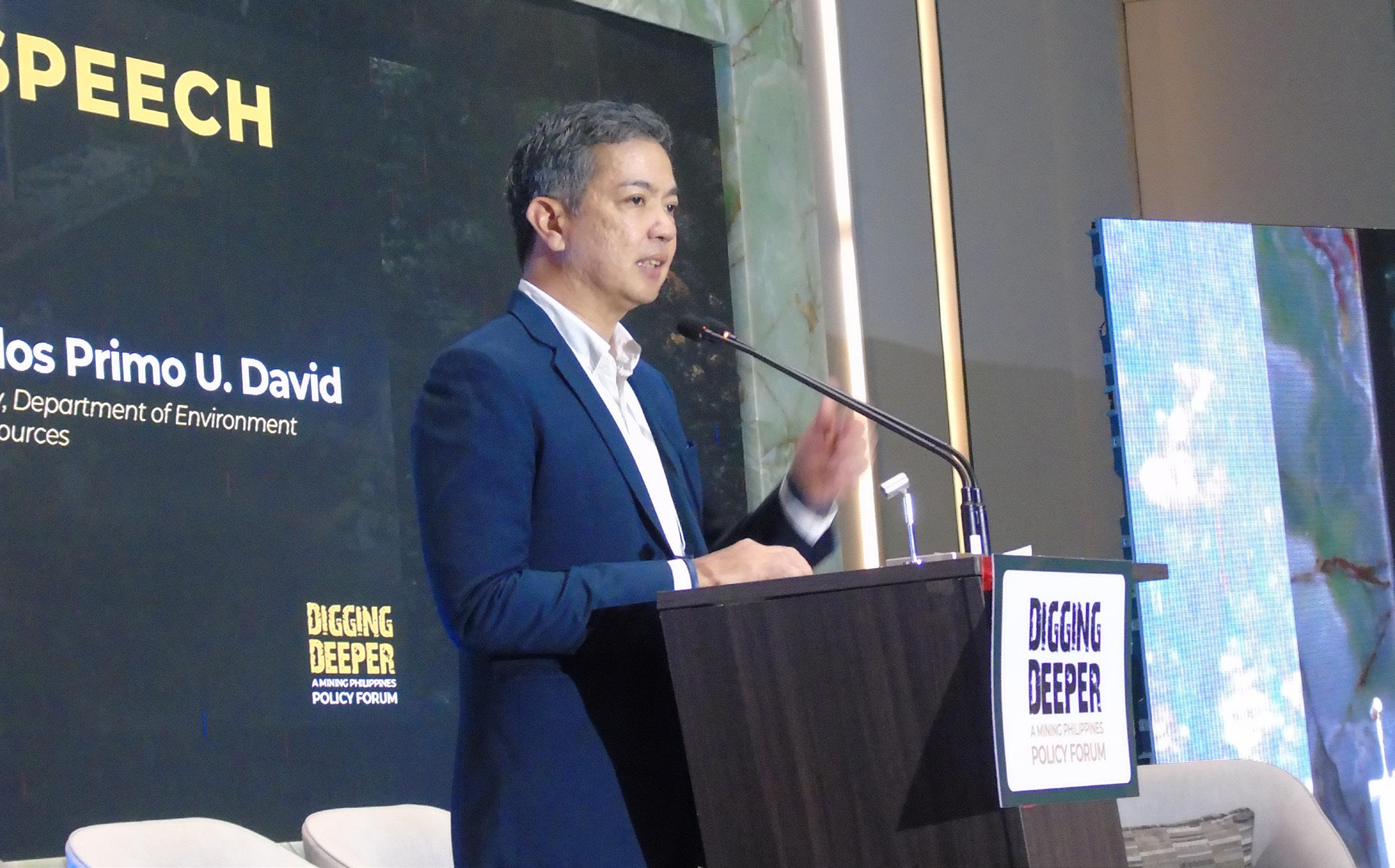
An Executive Order (E.O.) that will define and establish a policy on mining royalty is being drafted by the Department of Environment and Natural Resources (DENR), to be passed for approval by Malacañang.
At a recent Mining Philippines event, Digging Deeper: A Mining Policy Forum, Prof. Carlos Primo David, DENR Undersecretary for Integrated Sciences, spoke on behalf of DENR Secretary Maria Antonia Yulo-Loyzaga. The event was organized by the Chamber of Mines of the Philippines with an objective to discuss current policy issues affecting the minerals development sector.
David is an expert in environmental science and is a licensed geologist.
During an ambush interview, he mentioned to journalists that the mining E.O. would be presented before the Office of the President to address some of the conflicting provisions in the National Commission on Indigenous Peoples (NCIP), Local Government Code.
He also pointed out the issue of
conflicting interpretations of the law on mining royalty which needs to be addressed through the E.O.
He clarified that such conflicting interpretations of the mining royalty, and complexities with LGUs and Indigenous Peoples and Indigenous Cultural Communities often cause mining investors to be on a “waitand-see” attitude.
He also noted that the E.O. is still a draft.
“For any royalty, you will have to put a ceiling. Because if there is no ceiling, it can be 1%, 2%, 10%, or up to 100%. That is something that we have to address,” he said.
He mentioned that what the law specifies right now is the minimum.
The E.O. is not intended to replace any legislation.
“Any legislation needs another legislation, but the E.O. should correct some of the issues such as conflict with the I.R.R. and other provisions of the law, such as in the NCIP.”
For this matter, the DENR, the Office of the Secretary, and the Department of Finance (DOF) are
collaborating on the drafting of the E.O.
David added that eventually, when a fiscal regime is passed by Congress, the E.O. is set aside.
Additionally, during the Mining Philippines event, he stated that the DENR’s initiative to launch digital application processing in 3 mining regions will reduce the waiting time for the approval of mining permits from 6 to 7 years to at least 2 years. The digital application will include the CARAGA region and Davao.
The introduction of the digital application process will also help the DENR monitor the workflow and track the bottlenecks in the mining permit applications in various DENR Regional Offices. Managing the process digitally will, in the long run, propel the mining operations.
Reference: [1] (Oct. 17, 2024). Media release from Digging Deeper: A Mining Policy Forum. Chamber of Mines of the Philippines.
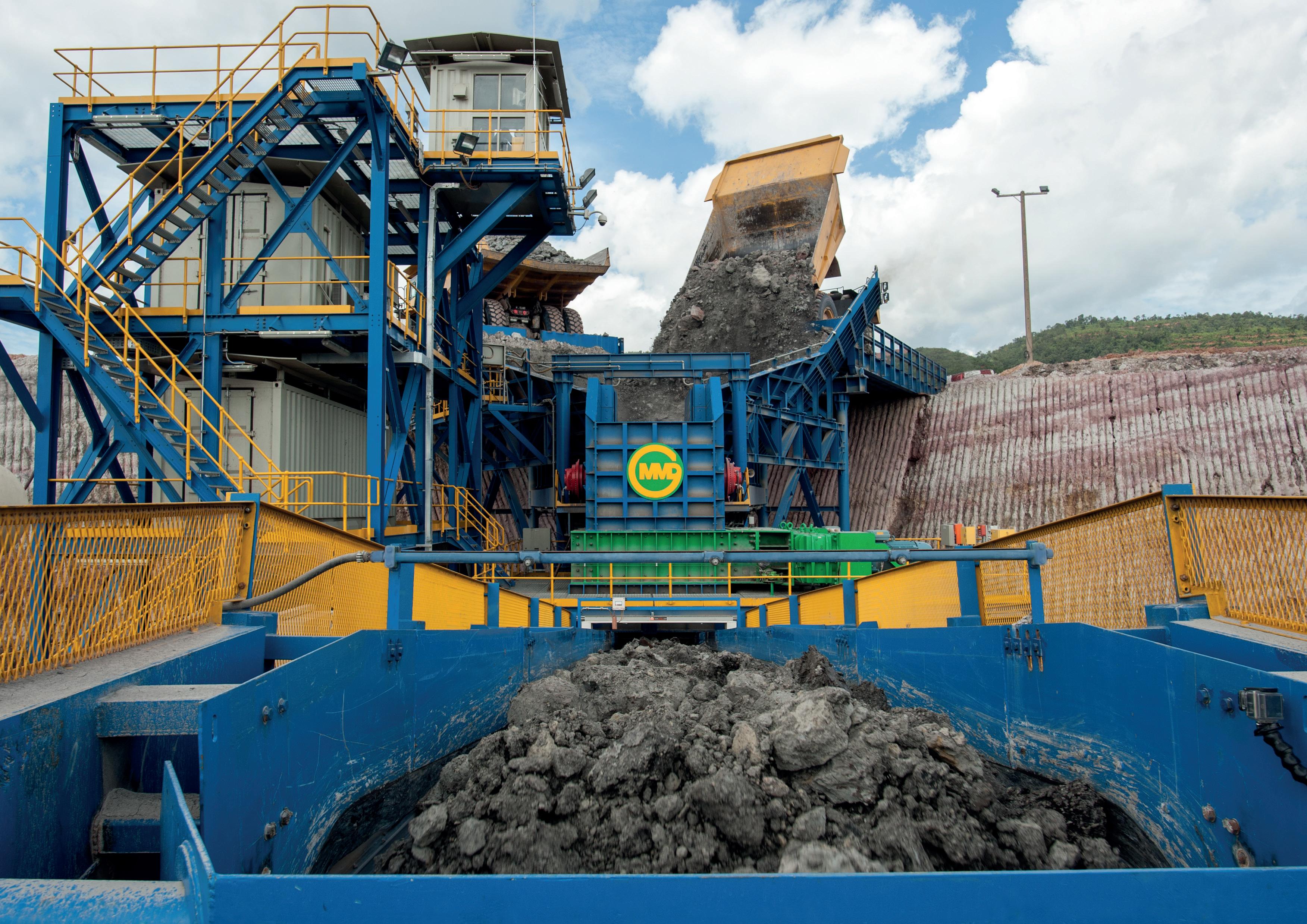

For over 45 years, we have successfully provided pioneering Sizer technology to many industries worldwide. Our tailored mobile, semi-mobile and fixed Sizer stations as well as our latest in-pit innovations, are reliable and efficient answers to reduce the complexity of today’s modern mining challenges.
As a turnkey provider, we have the specialist knowledge and equipment to offer comprehensive services and support. From conceptual planning and design through to manufacture, installation and aftersales service. We are your partner throughout your sustainable journey.



Here’s something to look forward to this December.
The Geological Society of the Philippines (GSP) officially launched GEOCON 2024 at the PNOC Networking Hall. As the country’s leading geological conference, the launch provided an exclusive preview of the upcoming conference, set to take place on December 4 and 5, 2024.
GEOCON 2024, a landmark conference, aims to shape the future of the geosciences in the Philippines, with a focus on sustainable solutions. GEOCON 2024 is expected to serve as a critical platform for fostering innovation, collaboration, and dialogue among professionals in the industry.
The initial gathering was attended by approximately 60 prominent figures from the geological sector—including members of the GSP Board of Trustees, industry leaders, government representatives, academic experts, and representatives from the private sector.
This launch marked a significant moment for the geological community, with key stakeholders gathering to celebrate the advancements in the field of geosciences in the Philippines.
The highlight of the launch was the unveiling of the conference’s theme: “The Filipino Geologists – Bridging Geoscience, Technology, and Industry for a Better Philippines.” This theme reflects the essential role of Filipino geologists in addressing the nation’s environmental, economic, and societal challenges. Additionally, the theme shows importance of harnessing geoscientific knowledge and technological advancements to develop sustainable solutions that benefit both local communities and future generations.
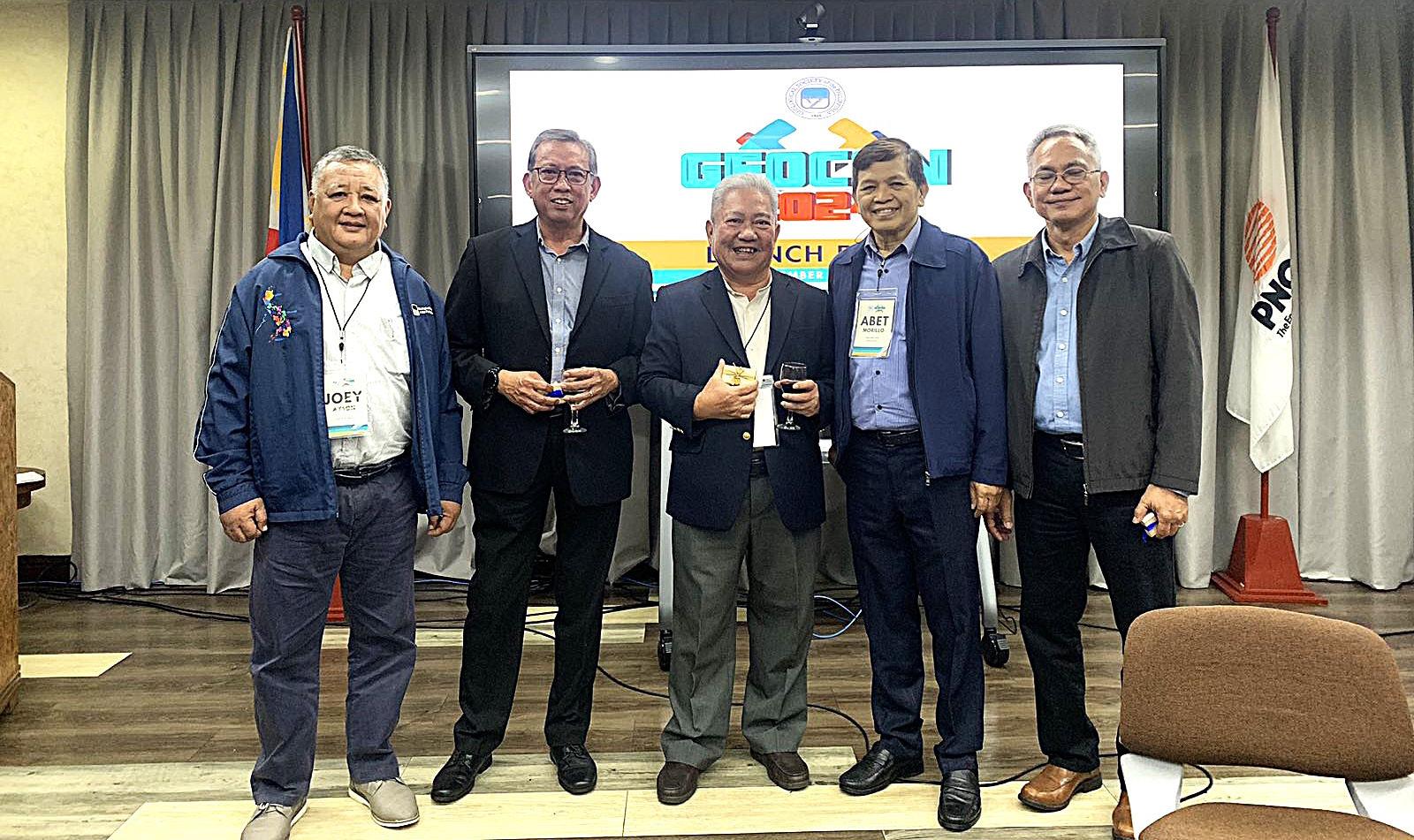
In his opening remarks, GSP President, Mr. Joey Nelson R. Ayson, expressed optimism for the upcoming conference. “GEOCON 2024 is more than just a platform for sharing scientific ideas. It is a call to action for geologists to commit to sustainable practices that protect our planet. Our theme reflects this dedication to responsible environmental stewardship.”
Department of Energy
Undersecretary, Mr. Alessandro O. Sales, was also present at the launch. In his keynote speech, he who pointed out the importance of collaboration between the geological community, government agencies, and industry leaders.
Usec. Sales noted that such partnerships are crucial for tackling the country’s most pressing environmental issues and fostering a more resilient future.
Discussions during the launch centered on the evolving landscape of the geosciences within the Philippine context. Atty. Fernando Peñarroyo, Chairperson of the Professional Regulatory Board for Geology, graced the occasion, providing valuable insights into the expanding role of geologists in national development.
The GSP extends a warm invitation to all individuals and organizations involved in the geosciences field to participate in GEOCON 2024. This pivotal

event serves as a platform for collaboration and knowledge sharing, encouraging collective action to propel the profession forward and contribute to a sustainable future for the Philippines.
For more information on GEOCON 2024, including registration and sponsorship opportunities, please visit https:// geolsocphil.com/ or contact the GSP Secretariat at secretariat@ geolsocphil.org and the GEOCON 2024 Organizing Committee at gsp. geoconreg@gmail.com.
Reference: Media release by Ms. Janice A. Wayan, Chair GSP PR Committee
Photo credit: Geological Society of the Philippines
Acknowledgment: Thank you to Mr. Joey Nelson R. Ayson and GSP PR Committee

Space is at a premium at the bottom of the pit. WebGen™ 200 Surface eliminates traditional scheduling constraints.
WebGen™ 200 Surface reduces exposure to geological hazards by minimizing the need for revisiting blastholes. With wireless detonation, all explosives are isolated within the blasthole, eliminating the risk of vehicle interactions with explosive components. Making it safe to transform a loaded blast into a productive haul road. orica.com/wireless
GET MORE FROM YOUR BLASTING WITH WIRELESS TECHNOLOGY
Lightning
written by: MARCELLE P. VILLEGAS

The Philippine Mining Club Luncheon held on September 20, 2024, featured a panel of high-profile speakers, each presenting their expertise and insights on the future of the mining industry. The event, co-hosted by Nickel Asia Corporation, Xcalibur Smart Mapping, and the Australian Embassy in the Philippines, brought together key players to discuss the latest trends, innovations, and challenges in mining and resource exploration. One of the guest speakers was Mr. Jose Bayani Baylon. He is Nickel Asia Corporation’s Chief Sustainability Officer and Senior Vice President for Sustainability, Risk, Corporate Affairs, and Communications. Mr. Baylon is known for his interesting discussions and witty remarks as he debunks common misinformation about mining. As a leading advocate for sustainable mining practices, Baylon’s lecture focused on the industry’s evolving role in balancing economic growth with
environmental stewardship.
Mr. Craig Annison, a highly experienced geophysicist from Xcalibur Smart Mapping, followed with a presentation on “Airborne Geophysical Mapping for Exploration, Development, and Management of Natural Resources.” Mr. Annison shared his technical expertise in deploying cutting-edge geophysical technologies to enhance resource discovery and management. He discussed how these innovations are reshaping the landscape of mineral exploration.
Representing the diplomatic sector, Honorable Luisa Rust, the new Senior Trade and Investment Commissioner of the Australian Trade and Investment Commission (Austrade) at the Australian Embassy in the Philippines, took the stage to discuss the critical role of trade and investment in fostering closer ties between Australia and the Philippines, particularly in the mining sector. Hon. Rust highlighted key opportuni -
ties for collaboration and investment that could drive economic growth in both nations.
The Luncheon was moderated by Atty. Roderick R.C. Salazar III, Senior Partner at Fortun Narvasa & Salazar, who served as the emcee. Atty. Salazar, known for his expertise in corporate law and mining policy, provided insightful commentary throughout the event, ensuring the discussions remained engaging and informative.
During the Luncheon, Xcalibur Smart Mapping discussed how mining companies may benefit from their advanced technologies. With over 100 years of experience and more than 50 million linear kilometers of geophysical data collected across six continents, Xcalibur Smart Mapping is the largest airborne geophysical group in the world. Operating out of 16 offices, including key
(L-R) Emcee: Atty. Roderick R.C. Salazar III, Mr. Jose Bayani Baylon, Hon. Luisa Rust (Senior Trade and Investment Commissioner of Austrade), Mr. Craig Annison (Geophysicist, Xcalibur Smart Mapping)
















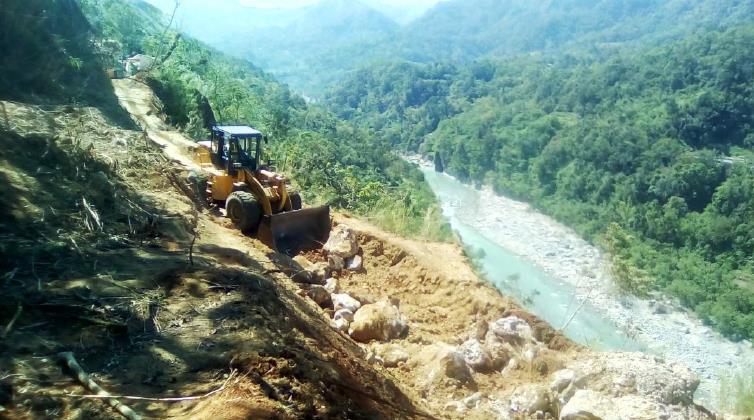


locations such as Perth, Madrid, Houston, and Toronto, Xcalibur provides services for the exploration and production of minerals, oil and gas, groundwater, geothermal energy, natural hydrogen, and other natural resources. The company’s advanced technologies also support environmental and engineering studies.
“Our core values of safety, sustainability, technological innovation, and operational excellence are central to our operations. This ensures that we execute projects efficiently and responsibly.”
Xcalibur Smart Mapping is currently involved in major natural resource mapping projects across Asia and Oceania, with an impressive portfolio. Notable projects include extensive surveys in Australia, Papua New Guinea, Mongolia, Japan, India, and Saudi Arabia, utilizing state-of-the-art airborne geophysical technologies such as magnetic, radiometric, gravity gradiometry, and electromagnetic mapping.
Between 2007 and 2009, Xcalibur completed a 290,000-line-kilometer airborne geophysical survey in Papua New Guinea. The data from this project significantly increased foreign investment in the country’s mineral sector, because it provided critical insights into the nation’s mineral resources and geological potential.
Xcalibur’s expertise spans a wide range of cutting-edge airborne geophysical technologies, including magnetics, radiometrics, electromagnetics, and gravity gradiometry. These technologies have been applied to a variety of exploration areas, such as geothermal energy, mineral deposits, and aquifers. In addition, the company’s use of innovative proprietary systems, such as TEMPEST AEM and FALCON AGG, provided high-resolution mapping of mineral-rich areas and other natural resources, leading to more accurate exploration results.
The presentation also showcased the success of their XMAG and HELITEM systems, which have been used to identify key mineral deposits, including critical minerals such as palladium, platinum, copper, cobalt and nickel, rare earth elements, and precious metals such as gold.
Beyond its technical prowess, Xcalibur is also making strides in its corporate social responsibility efforts. Through the Xcalibur Foundation, the company has launched several social development projects aimed at supporting education, training,
and cultural development in vulnerable communities. Initiatives include football and basketball academies in Uganda and DR Congo, as well as women’s empowerment and employment programs in Spain.
“Xcalibur is deeply committed to shaping a better future through our social initiatives, using education and sport as tools to uplift children, young people, and women in vulnerable situations,” according to Craig Annison’s presentation.
As the demand for natural resources continues to rise globally, Xcalibur Smart Mapping’s data-driven approach helps de-risk investments and focuses exploration in areas with high potential. By providing essential sub-surface data, the company ensures that natural resources are responsibly managed and efficiently discovered.
“Our work is critical for making informed decisions in natural resource exploration. We are proud to play a role in advancing global resource development while maintaining our commitment to sustainability.”

written by: JAKE TAN, PRODUCT MANAGER, FLUKE SOUTH EAST ASIA PTE LTD
In the mining industry, safety isn’t just the responsibility of a select few—it’s a shared duty that extends to everyone in the organization. In Asia’s laborintensive mining environments, ensuring the safety of every worker is paramount. One key aspect of this responsibility is managing electrical safety, a crucial factor that can literally save lives.
This article highlights why electrical safety is so important in mining and explores practical steps to help prevent accidents, minimize risks, and foster a safety-first culture within your organization.
When it comes to mining, safety covers a wide spectrum—from personal protective equipment (PPE) to ensuring workers are properly trained and that safe work practices are consistently followed. In a high-risk industry like mining, where equipment failure can lead to devastating accidents, a commitment to safety at every level is essential.
A single accident doesn’t just put lives at risk; it can disrupt operations, trigger investigations, and cause significant financial losses. Prioritizing safety is not only about protecting workers— it’s about safeguarding your business and its future.
Among the many dangers in mining—heavy machinery, toxic gases, and hazardous environments—electrical safety stands out as an area that demands focused attention. Electrocution and arc flashes, which release a sudden explosion of intense heat and light, pose great risks. Even a seemingly low current of 30 milliamperes (mA) can cause respiratory paralysis, which can be fatal in some cases.

In remote mining areas, where automation and Internet connectivity are limited, human vigilance becomes critical. Coupled with routine maintenance and proactive measures, everyone playing their part to maintain safety significantly reduces the risks posed by electrical hazards.
systems to prevent the build-up of dangerous gases, safeguarding workers from respiratory difficulties that can be fatal. This is enabled by breakthrough acoustic technology in Flukeii915, which helps operators take proactive steps to visualize issues that can arise, such as bearing problems in conveyor systems.
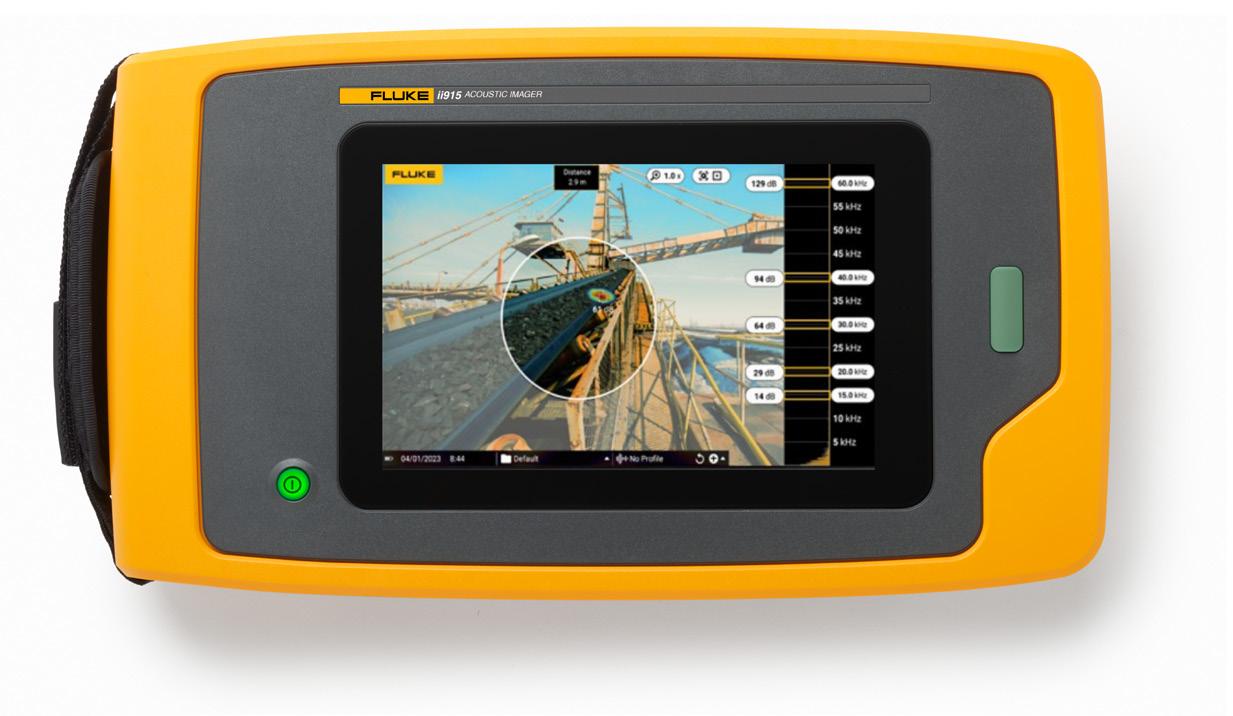
Faulty electrical systems add another layer of danger. Faulty wiring or poor grounding can spark fires or cause electrocution if not properly addressed.
Another critical part of managing electrical safety is maintaining proper ventilation
This device can also locate the presence of partial discharges in onsite power substation and air leaks in the pneumatic systems of mobile assets.
Electrical safety doesn’t happen by accident—it requires a

Weir is a global leader in mining technology. We recognise that our planet’s future depends on the transition to renewable energy, and that transition can only happen with the metals and minerals our mining customers deliver.
With signature brands including ESCO®, WARMAN®, ENDURON®, GEHO®, CAVEX®, LINATEX® and MOTION METRICSTM, we combine our deep customer insights, world class engineering, materials science expertise and intelligent automation to deliver innovative end-toend mining technology solutions that help our customers move less rock, use less energy, use water wisely and create less waste — accelerating the path to smart, efficient and sustainable mining.

comprehensive, hands-on approach. Using the right tools and conducting thorough inspections are key steps in mitigating risks. Specialized tools, like digital multimeters and thermal imaging cameras, help identify overheating components and other electrical problems before they become lifethreatening issues.
Simple, routine walkthroughs between scheduled maintenance can also catch potential problems early, such as loose connections or faulty wiring. Early detection improves safe work conditions and prevents unplanned downtime.
Electrical safety in mining isn’t something to take lightly—it demands a structured, proactive approach. Here are some essential steps to enhance electrical safety on your site:
1. Use the right tools for equipment testing Each piece of electrical equipment should be tested with tools that meet IEC 61010 standards for safety. Ensuring that the electrical category rating of the testing tools matches the nominal voltage ratings of the equipment being inspected helps make accurate assessments. For example, Fluke 1587 is an insulation digital multimeter that is designed for low voltage equipment.

2. Test power cables for insulation resistance
Both new and used power cables
and equipment, including motors, should be regularly tested for insulation resistance before being put into service. Specialized devices can be used, like Fluke 1555, which can measure up to 10 KV. This device ensures that, with regular inspection, cables remain properly insulated.
3. Perform regular inspections
Routine inspections using tools like thermal cameras can help spot early signs of electrical or mechanical problems without the need to stop operations. Identifying these issues early prevents costly repairs and potential accidents.
4. Detect faulty currents Residual Current Devices (RCDs) are vital for identifying faulty currents. RCDs automatically shut down power if they detect a fault, preventing electric shocks and potential fires. These devices must be tested regularly to ensure they function correctly. Installation testers such as Fluke 1663 are purpose built to test RCDs and ensure they trip the circuit when a fault is detected.
5. Ensure proper grounding Grounding and bonding of electrical equipment are critical to preventing electrical shocks and fires. Poor grounding can result in electrical hazards and electrical interruptions to equipment. It is crucial to test grounding resistance both inside and outside your facilities. International standards such as IEEE Institute of Electrical and Electronics Engineers (IEEE) and National Electrical Code (NEC) have recommended values for reference.
Creating a culture of safety isn’t a one-person job; it requires the participation of everyone, from entry-level workers to senior management. Safety training should begin on day one for new hires and be continually reinforced through refresher courses for all employees.
Staying updated on the latest safety standards, industry regulations, and best practices
ensures that your organization remains compliant and vigilant. The more informed your workforce, the safer your operations will be.
Preventive safety measures do more than save lives—they also boost productivity and reduce operational costs. Wellmaintained equipment lasts longer and consumes less energy, which helps lower expenses. And by avoiding accidents, companies can sidestep the costly downtime that results from investigations and halted operations. In addition, proactive safety practices help prevent environmental hazards such as gas leaks, creating a healthier work environment.
Electrical safety is a cornerstone of mining operations, and while many companies already have protocols in place, there’s always room for improvement. By committing to proactive maintenance and implementing comprehensive safety measures, where every worker takes ownership of safety, you protect your workforce while maximizing the efficiency and longevity of your equipment.
Let’s work together to make electrical safety a top priority because, at the end of the working day, everyone deserves to go home safe.
Fluke Corporation is the world leader in industrial test and measurement tools, network troubleshooting equipment, and precision calibration instruments. From industrial electronic installation, maintenance, and service to precision measurement and quality control, Fluke tools help keep business and industry around the globe up and running.
To contact Fluke South East Asia Pte Ltd, send us an email at fsea. info@fluke.com or scan the QR code to explore our full range of mining solutions.

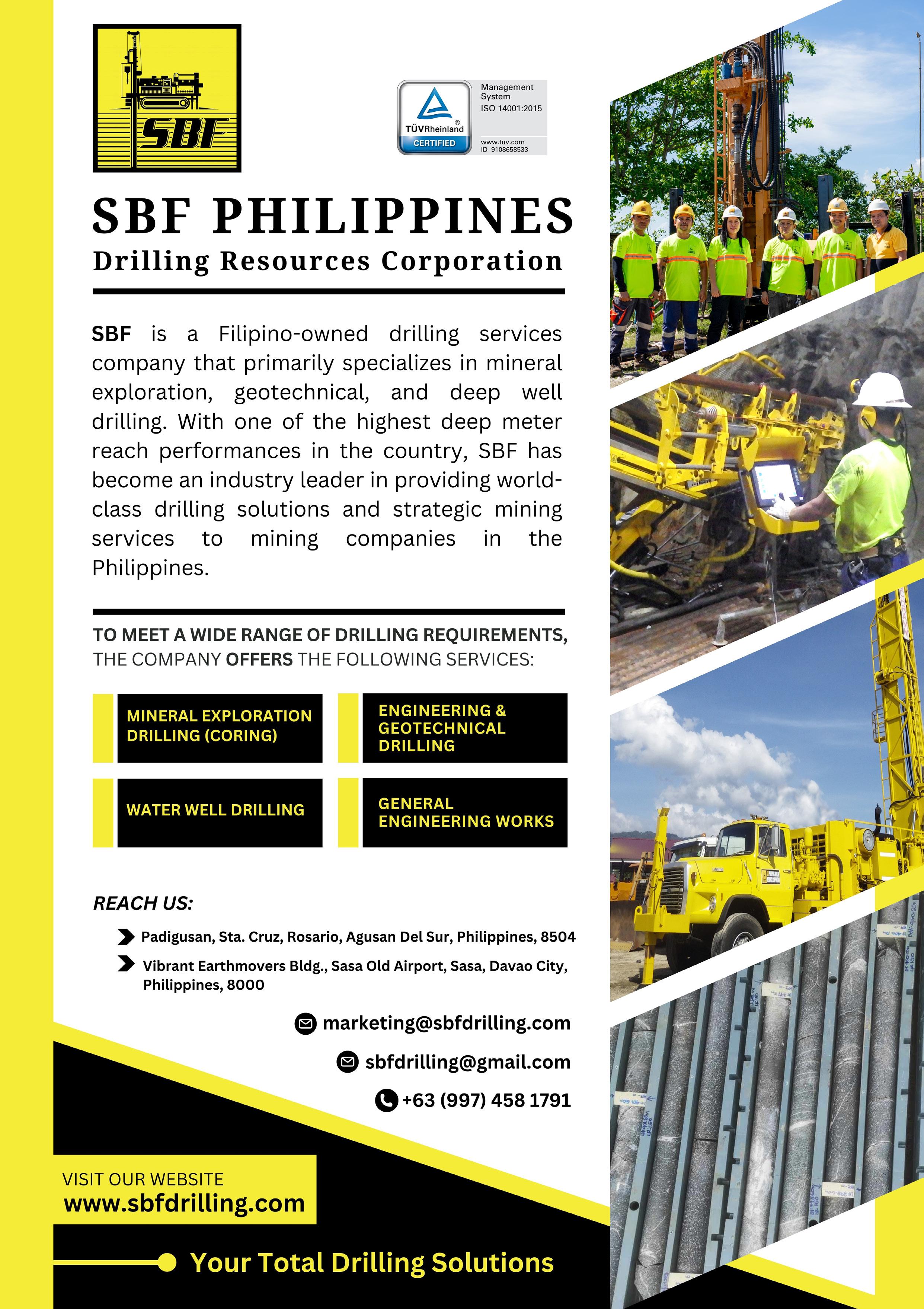
THOM HANNA, PG, HYDROLOGIST AND TECHNICAL DIRECTOR
EXAMINES
Mining water projects involve a number of hydrogeologic, logistical, and economic considerations. Because of their complexity, water wells for dewatering, high-wall and underground depressurization, and water supply often call for design options not commonly used in potable water applications.
Well efficiency is a design parameter especially important in dewatering applications due to high operational costs caused by space limitations and challenging logistics for power supply and water transportation in an active mine. Wells used in mining operations are often not optimized for efficiency because they are designed as a “one size fits all” for the economy of materials, and relationships between well design, drilling methods and fluids, and well development are overlooked.
Selecting proper well screens is one of the most important parameters for well efficiency. Screens keep the filter pack in place while allowing water to flow into the well, and the access to the formation and filter pack during well treatment. Often, screens with slot size and open area too small for the filter pack are selected, resulting in low flow velocities and productivity. In most aquifers, wells completed with wirewrap screens are more efficient than slotted pipes, louvered or bridge slot screens.
Strength and material are other important when selecting well screens for mining environments and harsh conditions. The cost of screen materials will vary, and selection is based on the anticipated service life of the well. Table 1 provides a matrix of screen attributes for screen type selection.
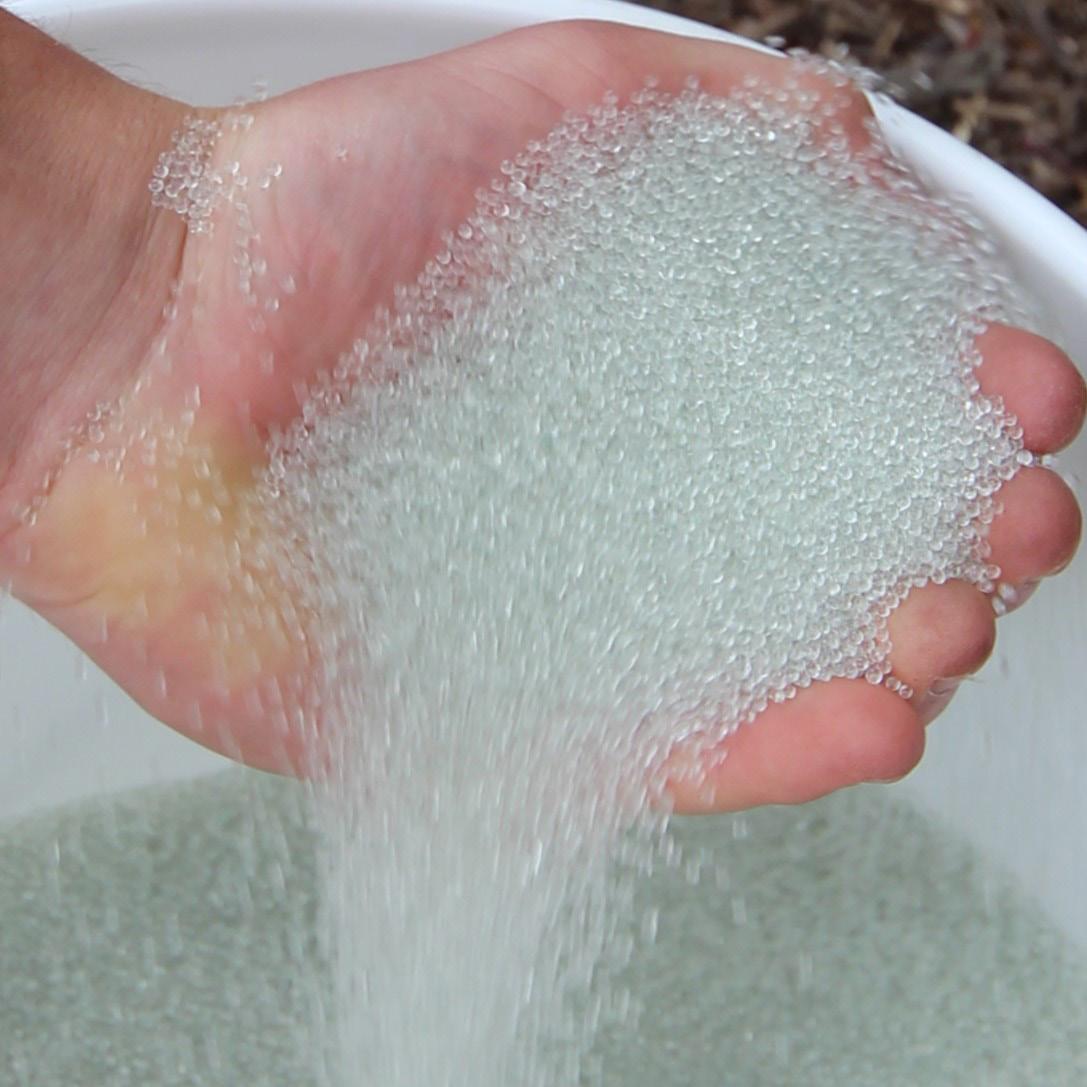
Wire- Wrap Steel
Pre-pack wire-wrap
P = poor, G = good, E = excellent
Pre-pack wire-wrap well screens consist of a standard screen assembly with a layer of resin-coated gravel around it supported by a second screen (dual-screen pre-pack). Due to that construction, they present higher collapse and tensile strength. The resin-coated gravel layer provides a barrier to formation sand production, eliminating the need for an external filter pack and simplifying wellcompletion operations.
Besides the well screens, the filter pack will also impact the efficiency of a well. Water well filter packs often use sand, but ceramic or glass artificial materials are also used. Due to its more regular shape and roundness, artificial pack material results in a more uniform pore throat opening. Also, artificial
pack material has a uniform and smooth surface that inhibits biofilm formation by reducing the sites available for bacteria deposition and growth. Glass filter packs, such as Johnson Screens’ Shur-PakTM Glass Bead Filter Pack, are more cost-effective than ceramic for water well applications.
INCREASED
Muni-Pak screens have been used in several mining applications globally. Table 4 summarizes two very different applications for water supply and dewatering. The mines were remote in both applications, and good filter pack material was not readily available.
Johnson Screens provides the innovation the Water Well industry requires with the tradition you want.
Our st ainless steel screens incorporate the reliability and resiliency that only the company that invented and perfected the continuous Vee-Wire® technology for over a century can provide.
They are an important part of the complete portfolios of water well solutions and products Johnson Screens can offer for dewatering and water wells for mining applications.


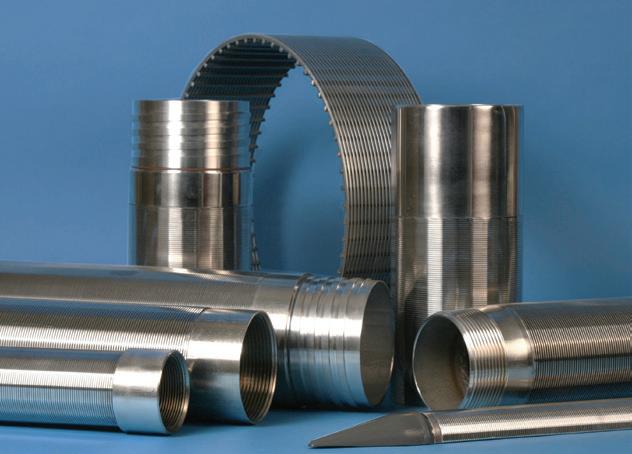
New Location Sales & Manufacturing
155 Fison Ave W, Eagle Farm QLD 4009
Tel: +617 3867 5555
Johnson Screens is one of the largest manufacturers of stainless steel screening solutions in the world. Our continuous-slot profile wire technology offers a high open area which reduces the opportunity for plugging due to particulates making only two-point contact with the slot, making our stainless steel screens the ideal solution water well applications, including municipal and industrial, domestic, and environmental monitoring installations. Available in 304/316 stainless steel and a wide range of specialty materials for more corrosive installation environments, Johnson Screens stainless steel filtration solutions are the premier brand for water well applications around the world!
Our Complete Water Well Solutions include stainless steel and PVC Well Screens and Casing, Pump Pipe and Accessories, and also Well Cleaning Chemicals and Filter Pack.
Email: info.au@johnsonscreens.com
Learn More about our solutions at
Table 4 Overview of two Muni-Pak applications in mining
Hecla Mining Company
Greens Creek Mine
Attribute
Juno, AK
USA
Well Use Water Supply
Aquifer Type
Installation
Active Streambed w/sands gravel and cobles
The Greens Creek infiltration gallery is completed in a high-volume creek where spring runoff and shifting streambeds could expose the well screens, resulting in sand pumping. The pre-pack screens provided superior strength and filtration in the event of a migrating stream bed. The infiltration gallery is more efficient than the one it replaced and has operated efficiently since 2009.
The dewatering well at Shore Gold was completed in the Mannville Formation, a fine-grained, friable sandstone with silty interbeds. The aquifer is highly fractured and unconsolidated, making borehole integrity and filter pack installation problems. The well is screened from a depth of 195 to 365 m, for which Muni-Pak screens were selected due to tensile strength requirements. The well was developed sand-free.
Muni-Pak screens are a unique solution that combines the advantages of pre-pack screens and glass filter packs for mining applications. Using Shur-Pak glass beads as the filter media reduces the likelihood of filter pack damage by biofilm and encrustation, lowering overall well-maintenance costs. Besides, Muni-Pak’s dualscreen construction is four times stronger than standard rod-based screens, and filter pack placement is not required, reducing costs and enhancing well efficiency.
Shore Gold
Star Diamond Project Saskatchewan Canada
Lake Resources
Kachi
Argentina
Proto-type Dewatering DLE
Mannville Sandstone/finegrained poorly consolidated
Unconsolidated fine sands and silts
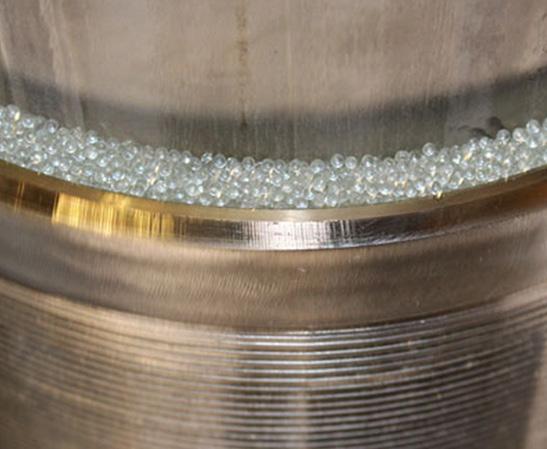

Thomas “Thom” M. Hanna, PG, is Hydrologist and Technical Director for Johnson Screens. Hanna has authored or co-authored many publications, including The Operational Stage of the
Well, the third edition of Groundwater & Wells, and numerous technical papers.
Johnson Screens, a brand of Aqseptence Group, is the leading global provider of screening and auxiliary solutions. For 120 years, we have provided the innovation the Water Wells industry requires with the tradition customers want. Our complete portfolio of water well solutions includes screens and casing, drop pipes, chemicals, filter packs and accessories. Learn more about our solutions for the most challenging water well applications by visiting our website, www.johnsonscreens.com/waterwells, or contact us at info.au@ johnsonscreens.com
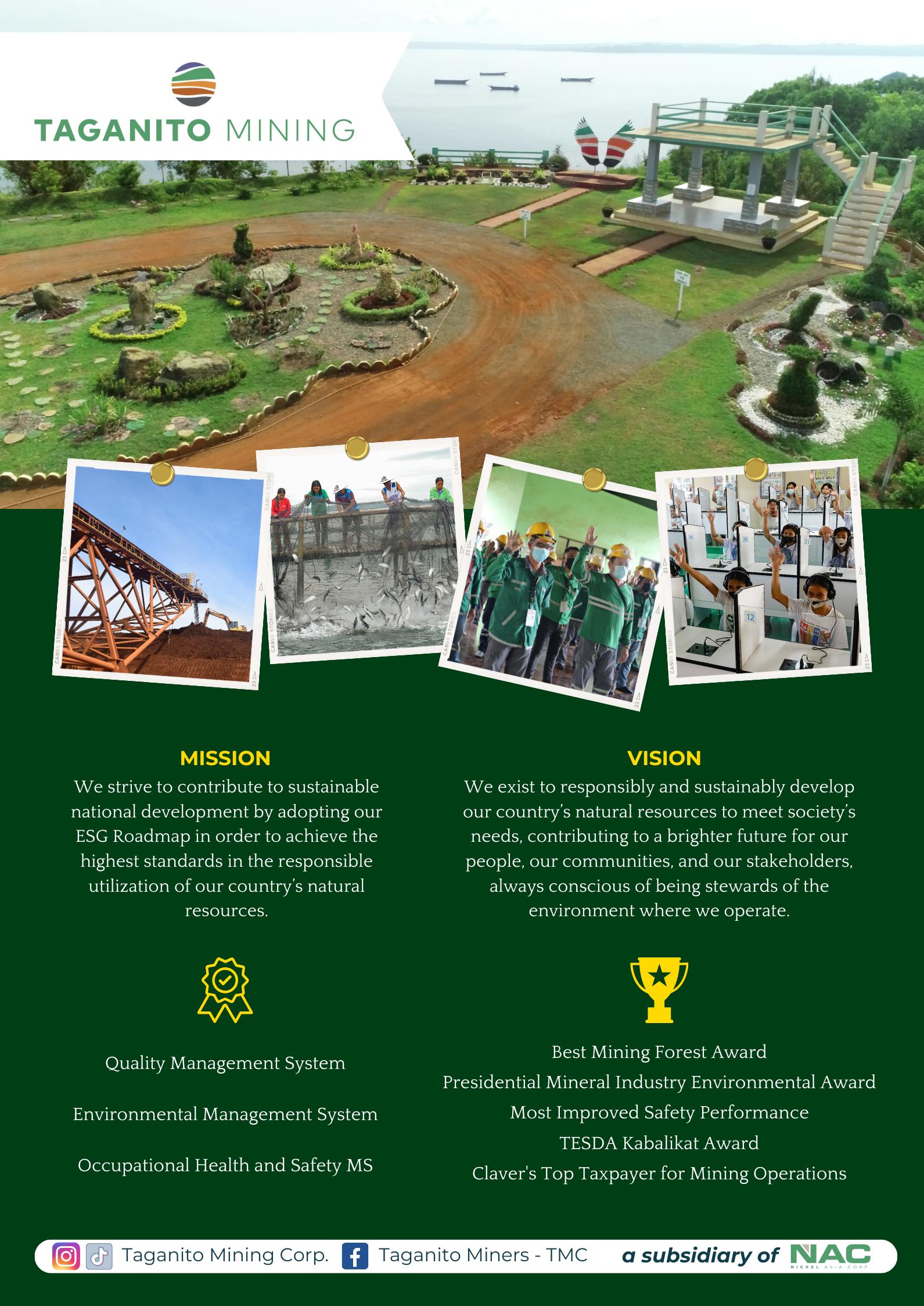
written by: AMER CHRISTIAN TOLENTINO
Underground mines are getting deeper while commodity grades are reducing. This dual challenge places immense pressure on the mining industry, pushing companies to seek innovative solutions for maximizing profitability despite these adverse conditions. To solve this, mine planners must run recursive and repetitive calculations that usually take significant time to finish. These calculations are essential for evaluating various operational scenarios, and with today’s computers, optimizing mine designs has never been easier. The integration of advanced algorithms and powerful computational tools enables the mining industry to address complex problems with unprecedented efficiency. Mine optimization’s main aim is to achieve optimal profit by maximizing the extracted ore value while minimizing the possible extraction costs.
Initially, mine optimization algorithms were developed for open-pit mines. Lerchs-Grossman (LG), which was developed by Ingo Grossman and Helmut Lerchs in 1964, laid the groundwork for further developments in mine optimization, culminating in software applications that enable more economical and efficient mining operations. The LG algorithm was implemented into an open pit optimization software by Jeff Whittle in 1984 which was later called GEOVIA Whittle.
There are however different complexities and challenges in optimizing underground mines as compared to surfaces, particularly in stope design. While the principles of maximizing profits and minimizing costs remain the same, the complexities of optimizing stope designs arise from the myriad underground mining and stoping methods that require different stope shapes and parameters to consider. Whilst open-pit Planners typically handle a limited number of pit shapes, stope optimization must accommodate a larger number of discrete mineable stope shape possibilities.
Manual methods for stope design involve a labor-intensive process. Engineers design possible stopes one at a time, calculating the volume and
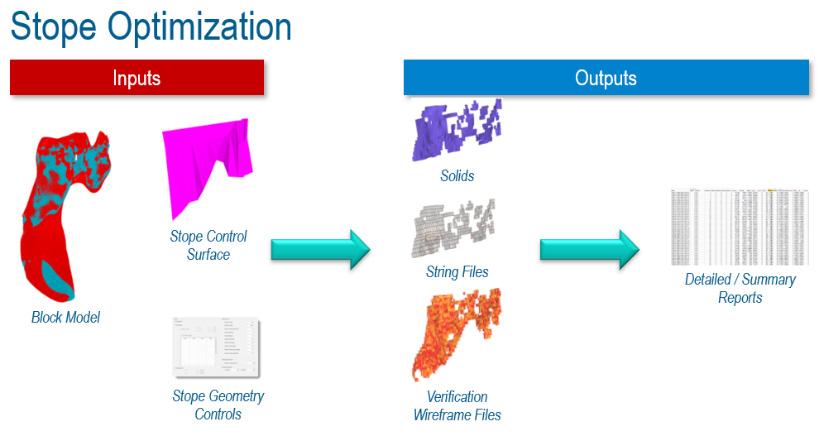
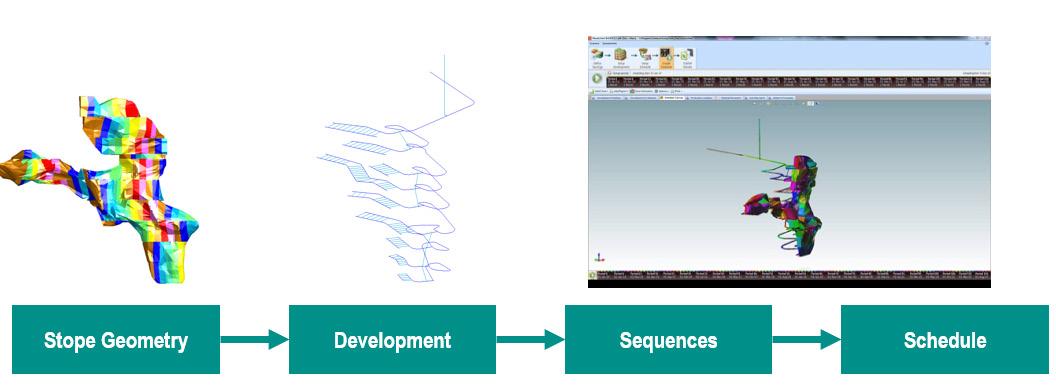
grade while factoring in metal selling prices, recovery rates, mining costs, and stope geometry parameters, often using spreadsheets. This approach can be time-consuming and inefficient, especially given the number of scenarios involved.
To address these challenges, many algorithms were proposed to produce optimal stope shapes, one of which is the Stope Shape Optimizer (SSO), which was developed by Alford’s Mining Systems in 2011. This algorithm has been integrated into GEOVIA Surpac mine planning software. The SSO creates economical stope shapes by using grade and tonnage values stored within a block model, alongside deposit dip from optional stope control surfaces. It then considers a range of economic and geotechnical parameters, including metal prices, costs, mining widths, and exclusion zones in its calculation. The current version of the SSO can optimize any shape of orebody, from narrow veins to massive formations with dips ranging from horizontal to steeply dipping and even vertical orebodies. It
can accommodate a variety of mining methods, including caving, open stoping, and drifting methods.
By integrating SSO into GEOVIA Surpac, the stope shape algorithm can now be seamlessly added to an existing underground mine planning workflow while still using Surpac’s industry-tested and reliable mine design and geological modelling and estimation functionalities. There is no longer a need to convert files, as the SSO works directly with Surpac’s block model and solids models for optimization runs.
Beyond compatibility, GEOVIA has introduced additional tools such as the Stope Shape Optimizer Multiple (SSOM) and Stope Shape Optimizer Bulk (SSOB). SSOM allows users to define multiple project files and run them in batches, facilitating efficient management of multiple project optimizations. On the other hand, SSOB enables users to conduct multiple optimization runs while incrementally varying the value of a parameter for each run.

As the Philippines continues to experience growth in its mining industry, access to reliable, efficient, and comprehensive mineral testing services is more critical than ever. Intertek is a leading Total Quality Assurance provider to industries worldwide. Our network of more than 1,000 laboratories and offices in more than 100 countries delivers innovative and bespoke Assurance, Testing, Inspection and Certification solutions for our customers’ operations and supply chains. Intertek Total Quality Assurance expertise, delivered consistently with precision, pace and passion, enabling our customers to power ahead safely.
Intertek Minerals is proud to be the largest in-country provider of mineral testing services in the Philippines. With our extensive capabilities, we offer the advantage of faster turnaround times and locally tailored solutions to meet specific client needs. Our comprehensive services ensure that clients receive accurate, reliable results while minimising delays and maximising efficiency in their
< Page 56
The results of SSO include a series of economical stope shapes that are directly compatible with GEOVIA’s mine scheduler, GEOVIA Minesched. This end-to-end solution encompasses modeling, estimation, and design using Surpac’s native functions, optimization with SSO, and then sequencing with Minesched. With the integration of SSO into Surpac, it can also be easily paired with another of Dassault Systèmes’ software solutions, Simulia Isight This pairing allows for the production of a hill of value study, further extending the value added to the mine planning operation.
In conclusion, mine optimization is an essential strategy for the modern mining industry, particularly in the face of deeper orebodies and declining commodity grades. The integration of advanced computing technology has transformed how engineers and mine planners approach
operations.
In line with our commitment to supporting the Philippine mining sector, Intertek Minerals is participating in the 70th Annual National Mine Safety and Environment Conference and Exhibition in Baguio City, as well as the upcoming GeoCon 2024 conference. These events offer an opportunity to showcase our mineral testing services and expertise.
With a comprehensive range of mineral testing services that support every stage of the mining life cycle, Intertek Minerals’ local capacity provides a full suite of offerings—from geochemical analysis and metallurgical testing to environmental monitoring and trade-related services.
Our highly skilled professionals and advanced facilities allow us to respond quickly to client needs and deliver actionable insights that support operational excellence across the mining value chain.
optimization by enabling them to perform complex calculations with unprecedented efficiency. Mine optimization will remain important as the mining industry continues to adapt to changing economic conditions. Through continued innovation and the application of cutting-edge technology, today’s mines can ensure their sustainability and profitability in an increasingly competitive market.
References:
1. Mokos, Peter, Ian Glover, and Shane Clauson (2022). AMS Stope Shape Optimiser Manual.
2. Zia, Shoaib. “A Guide to GEOVIA Stope Optimiser in Surpac“. 3DS Blog, August 5, 2020. https://blog.3ds.com/ brands/geovia/a-guide-to-geovia-stopeoptimizer/
3. Poblete, Christian. “The Quest for the Best Plan in Strategic Mine Planning”. 3DS Blog, August 18, 2020. https://blog.3ds.com/brands/geovia/ the-quest-for-the-best-plan-in-strategicmine-planning/
Intertek Minerals delivers a full suite of services to support mining operations, from exploration to production. Our solutions are designed to meet the evolving needs of the mining sector and include:
• Sample preparation
• Geochemical analysis utlising XRF and ICP for a range of commodities.
• Fire assay
• Trade related services
With decades of experience and a commitment to continuous innovation, Intertek Minerals is the partner of choice for mining companies seeking to achieve optimal results.
Intertek is dedicated to supporting mining companies in their pursuit of safer, more efficient, and sustainable operations. Our deep local knowledge, complemented by our global network, ensures that we are well-positioned to support clients in the mining industry.
For more information about our services and how Intertek Minerals can support your mining operations, at www.intertek.com/minerals.
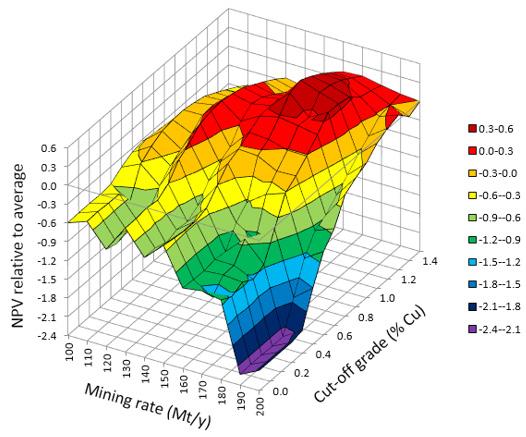
4. Alford, Chris and Brian Hall. “Strategy Optimisation for Underground Mines”. Alford Mining Systems, October 2014. https://alfordminingsystems.com/ wp-content/uploads/2014/12/Strategy_ optimisation_for_underground_ mines.pdf
written by: RAVEN DARYLLE MAE SUAREZ
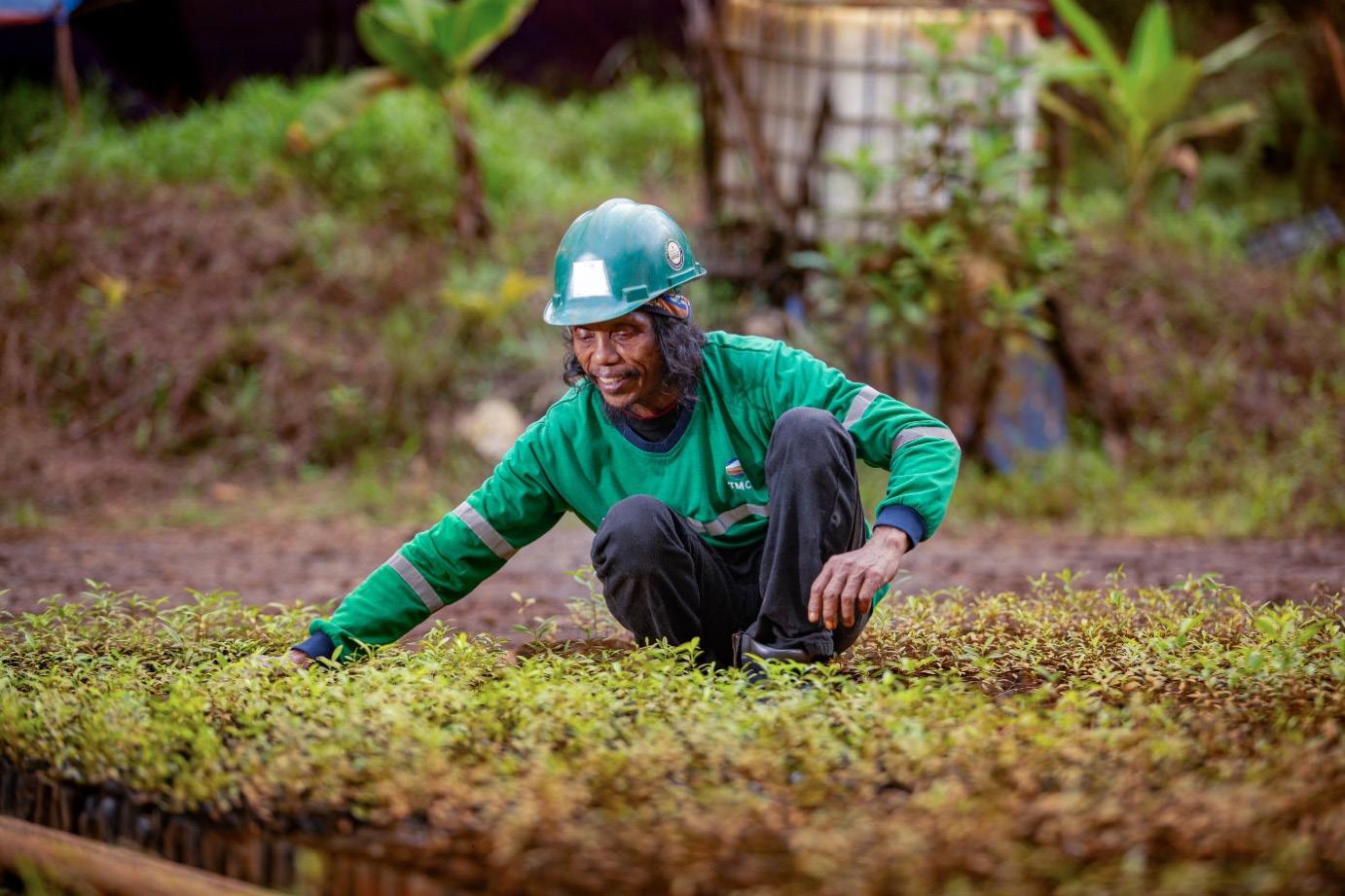
Taganito Mining Corporation’s (TMC) progressive rehabilitation and reforestation programs showcase the company’s commitment to environmental restoration, as seen through the experiences of its dedicated workers, which involve various teams and specialists.
Joy Cago, a nursery aide responsible for collecting, nurturing, and preparing seedlings at the Central Nursery, ensures that the seedlings are in good shape before their scheduled planting.
Joy, who has worked as a nursery aide since 2014, collects seedlings of native tree species such as Mangkono, Lauan,
Bitaog, and other tree species.
The seedlings are carefully cultivated until they are ready to be planted in the mined-out areas, a process that can take months of care and attention. Annually, nearly one million seedlings are produced in TMC’s four nurseries.
TMC’s approach to rehabilitation goes beyond simple tree planting; it integrates this effort into a broader environmental control and mitigation strategy, ensuring that for every hectare of mined-out land, an equivalent or greater area is rehabilitated.
Once the seedlings mature, reforestation aides take over, planting them in rehabilitated areas
and ensuring they survive harsh conditions and thrive for years to come. This collective effort has led to the planting of over 7 million seedlings as of June 2024, with continuous monitoring to ensure the growth of healthy forests.
TMC’s workers take pride in their roles, knowing they contribute to a healthier ecosystem. Their stories reflect a deep passion for their work, demonstrating that mining and environmental protection can coexist.
Through their efforts, TMC has made significant strides in creating a sustainable and responsible mining operation, ensuring a lasting positive impact on the environment.
Mixed Reality (MR) solutions have revolutionized how infrastructure projects are designed, managed, and executed. With the integration of advanced software tools, professionals in the civil engineering field can leverage Bentley Systems’ suite of applications to enhance infrastructure project outcomes.
KEY COMPONENTS
Reality Modeling
• iTwin Capture: Capture real-world conditions through high-resolution imagery and 3D photogrammetry technology. Convert point cloud data into detailed 3D models, enabling accurate representation of existing conditions.
• LumeRT: Create realistic rendering and visualizations that assist stakeholders in understanding project scope and potential impacts.
Infrastructure Design
• OpenRoads Designer: A comprehensive design tool for highways and roadways that integrates various engineering disciplines. With powerful 3D modeling capabilities, OpenRoads Designer allows engineers to create accurate road designs, assess site conditions, and collaborate in real time.
•OpenBridge Designer: Use specialized tools for designing complex bridge structures with real-time collaboration capabilities. OpenBridge Designer enables engineers to create detailed 3D models of bridge structures, perform structural analysis, and ensure compliance with design codes.
Construction Simulation
• SYNCHRO 4D: Integrate 3D models with project schedules to visualize construction processes over time. By combining Building Information Modeling


(BIM) with scheduling data, Synchro 4D enables project teams to simulate construction activities, identify potential clashes, and optimize workflows.
The NLEX-SLEX Connector Project is a vital DPWH infrastructure initiative in the Philippines, aimed at improving traffic flow and connectivity between major
thoroughfares. Developing roads in a dense urban center presented challenges, including right-ofway issues and limited space for construction equipment. The implementation of Bentley Systems’ mixed reality solutions in this project provides insights into the transformative power of technology in infrastructure development.
The project boosted productivity by 15% and equipment logistics by 40% through mixed reality and Digital Twin technology. The

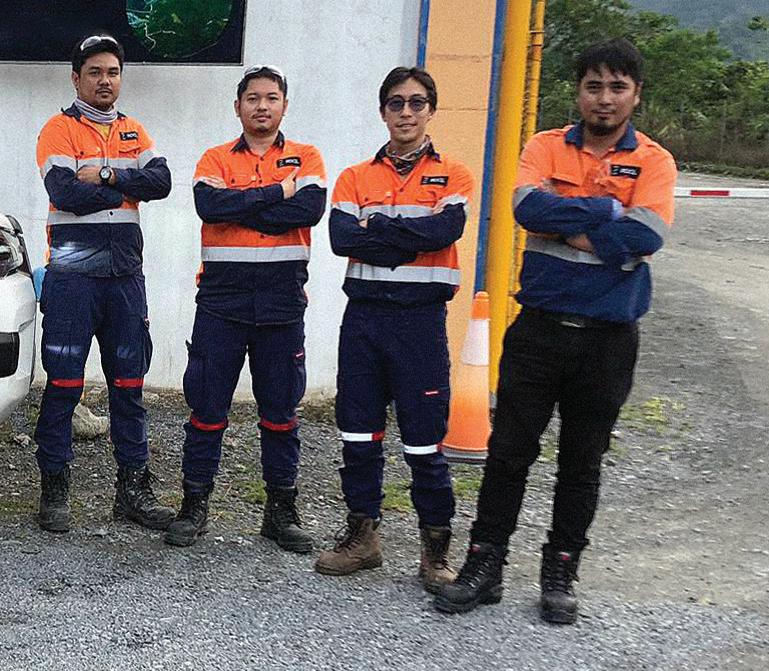
new road reduces travel time by one hour, saving approximately 315 million kilograms of carbon emissions annually, highlighting the Philippines’ commitment to sustainable infrastructure.
This project proudly stands as the winner of the prestigious Year in Infrastructure 2024 - Going Digital Awards, held this October in Vancouver, Canada. This recognition not only highlights the innovative use of cutting-edge technologies but also underscores the Philippines’ commitment to advancing its infrastructure capabilities. The NLEX-SLEX Connector Project exemplifies the nation’s drive towards modernization and sustainability in transportation.
Winning this international accolade reflects the collaborative efforts of the Department of Public Works and Highways (DPWH), Infrasys, and Bentley Systems, showcasing their dedication to excellence and innovation. This achievement serves as a beacon of pride for the Philippines, demonstrating how advanced digital solutions can transform infrastructure development, improve connectivity, and enhance the quality of life for Filipinos. It positions the country as one of the leaders in adopting modern engineering practices, inspiring further investments and advancements in the infrastructure sector.
Infrasys plays a crucial role in the successful delivery of the NLEX-SLEX project by ensuring that Bentley’s software is effectively implemented. Infrasys’ contributions include:
• Software Provisioning: Supplying the necessary Bentley software tools for the project, ensuring the DPWH has access to the latest technology.
• Training and Support: Conducting comprehensive training sessions for DPWH engineers to equip them with the skills needed to utilize Bentley’s software effectively.
• BIM Modeling Guidance:
Assisting DPWH in modeling
Building Information Modeling (BIM) to align with project specifications and requirements, enhancing collaboration and efficiency.
• Design Visualization:
• Utilize mixed reality headsets to visualize the project in a real-world context.
• Allow engineers and stakeholders to walk through the virtual model of the road connector, providing an intuitive understanding of design elements.
• Construction Monitoring:
• Implement augmented reality (AR) tools to overlay construction plans onto the physical site, guiding workers and ensuring accuracy.
• Use MR to track construction progress against the project timeline, identifying delays or deviations in real time.
• Maintenance Planning:
• Create a digital asset management system that leverages the Digital Twin for ongoing maintenance and operational efficiency post-construction.
• Utilize simulations to assess the impact of various maintenance strategies over the lifespan of the infrastructure.
• Technological Integration:
• Ensure compatibility between existing systems and Bentley’s software to maximize efficiency.
• Invest in training and upskilling for personnel to effectively utilize mixed reality tools.
• Data Management:
• Implement robust data management practices to handle the vast amounts of data generated during reality modeling and Digital Twin integration.
• Address data privacy and security concerns, particularly
when dealing with real-time data from sensors.
• Stakeholder Buy-In:
• Facilitate stakeholder education on the benefits of mixed reality and Digital Twin technologies to ensure commitment and collaboration.
• Present case studies and successful applications to demonstrate value.
Bentley Systems’ mixed reality solutions represent a significant advancement in infrastructure project delivery. The NLEXSLEX Road Connector Project serves as a powerful example of how these technologies can enhance planning, design, and construction processes. The involvement of Infrasys, through its provision of Bentley software, training, and BIM modeling guidance, underscores the collaborative effort essential for driving successful project outcomes.
By leveraging reality modeling, construction simulation, and Digital Twin implementations, civil engineering professionals can significantly improve efficiency and reduce costs while fostering better stakeholder engagement. As the industry evolves, embracing mixed reality will be crucial for achieving sustainable and resilient infrastructure solutions. This forward-thinking approach not only supports the immediate goals of infrastructure development but also positions the Philippines as a leader in innovative engineering practices.
Incorporating mixed reality into the lifecycle of infrastructure projects not only leads to better outcomes but also paves the way for future innovations in civil engineering. This transformative approach is the future of Philippine infrastructure, enabling a more integrated workflow and enhancing the quality and durability of projects. By prioritizing these advanced technologies, the country can address its infrastructure challenges while promoting sustainability and economic growth.
Local cement manufacturers are prepared to meet the rising demand for housing in the Philippines, thanks to increased domestic production capacity, according to the Cement Manufacturers’ Association of the Philippines (CEMAP).
CEMAP President Reinier Dizon highlighted significant growth in local cement production, driven by expansion projects and investments from new players in the industry, in a recent press conference.
“The domestic cement industry’s capacity has expanded from 27 million tons in 2014 to 50 million tons in 2024,” Dizon said.
In July 2024, Japanese cement producer Taiheiyo opened a new plant in San Fernando, Cebu, with a PHP12.8 billion investment.
Meanwhile, during the ASEAN Summit in Laos, President Ferdinand R. Marcos Jr. oversaw the awarding of a green lane certificate to Thai fiber cement manufacturer Shera, which invested PHP2.9 billion in the country.
Dizon expressed optimism about the local industry, particularly due to the government’s Pambansang Pabahay Para sa Pilipino Housing (4PH) Program. As of August, the Marcos administration had initiated 170,000 housing units across 55 projects nationwide.
In addition, the private sector launched 2,145 new residential units in the third quarter of 2024, according to Leechiu Property Consultancy (LPC). LPC also noted that the recent rate cuts by the Monetary Board are likely to spur new project launches and higher take-up rates.
Dizon also emphasized that Republic Act 11981, or the Tatak Pinoy Act, which promotes the use of locally made products, is expected to further strengthen the domestic cement industry’s growth.
CEMAP recently participated in the 32nd National Developers Convention, organized by the Subdivision and Housing Developers Association (SHDA) in partnership with the Department of Human
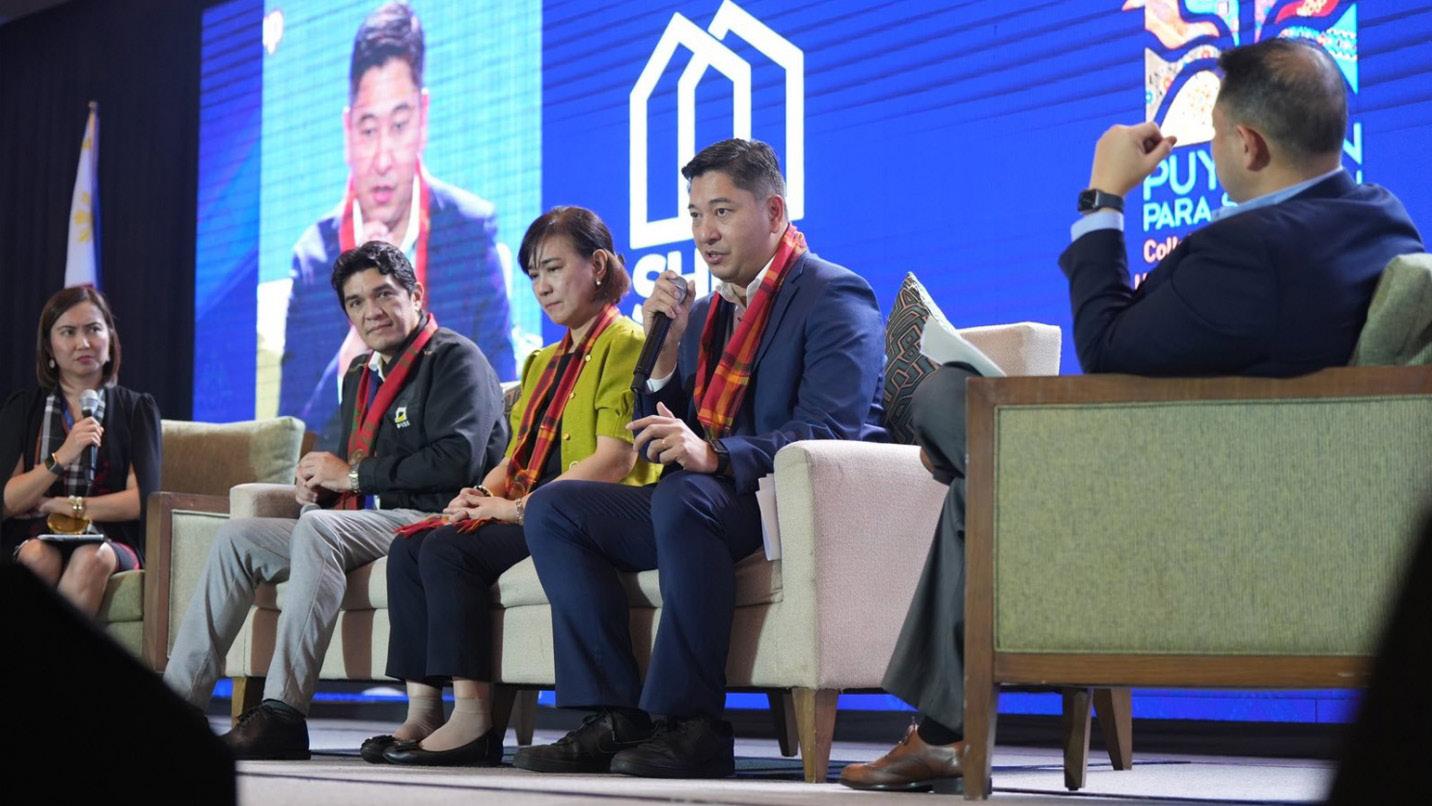
Settlements and Urban Development (DHSUD) in Davao City.
With the theme “Puy-Anan Para Sa Tanan: Collaborating Towards A Unified Housing Roadmap,” the event brought together key industry players to strategize and address challenges in the housing sector.
Dizon stressed the importance of cement in housing and infrastructure, stating, “The local cement industry is equipped to support the SHDA by ensuring product availability, quality, consistency, logistical cost savings, and sustainability.”
Prices of construction materials remain stable in Metro Manila, data from the Philippine Statistics Authority (PSA) show.
The PSA said the year-on-year growth of construction materials wholesale price index (CMWPI) in the National Capital Region remained at 0.3 percent in September 2024. In September 2023, its annual growth rate was registered at 2.2 percent.
Compared with their respective annual growth rates in August 2024, annual increments were observed in the indices of reinforcing steel at 1.0 percent in September 2024 from a 1.2 percent annual decrease in August 2024, and tileworks at 0.4 percent in September 2024 from a 1.2 percent annual decrease in August 2024. Meanwhile, a slower annual drop
was recorded in the index of cement at 1.9 percent in September 2024 from 2.1 percent annual decline in August 2024.
Moreover, a zero percent annual rate was noted in the index of metal products in September 2024 from a 0.3 percent annual drop in August 2024.
Compared with their respective annual growth rates in August 2024, slower annual increments were observed in the indices of the following commodity groups during the month: hardware, 0.5 percent from 0.9 percent; doors, jambs, and steel casement, 1.1 percent from 1.2 percent; electrical works, 0.9 percent from 2.9 percent; painting works, 0.5 percent from 1.2 percent; and PVC pipes, 0.9 percent from 1.4 percent.
Annual decreases were also recorded in the indices of plywood at

0.4 percent in September 2024 from 0.4 percent annual increase in August 2024, and fuels and lubricants at 0.8 percent annual drop in September 2024 from 3.5 percent annual increase in August 2024.
The indices of the rest of the commodity groups either retained their respective August 2024 annual rates or had zero percent annual increase during the month.
Infrastructure spending by the National Government declined by an annual 11.1% in August 2024 as heavy rains hampered the implementation of public works projects, the Department of Budget and Management (DBM) said.
In its latest report posted on its website on October 30, the DBM said infrastructure and other capital outlays fell to P108.6 billion from P122.1 billion a year earlier.
Month on month, infrastructure spending dropped by 13.1% from P125 billion in July, BusinessWorld reported. The government aims to spend 5-6% of gross domestic product on infrastructure this year.
The DBM attributed the drop to lower disbursements by the Department of Public Works and Highways (DPWH) due to “adverse weather conditions which slowed down project implementation.”
Rizal Commercial Banking Corp. Chief Economist Michael L. Ricafort said recent typhoons had caused heavy floods that delayed infrastructure projects.
The DBM also cited “delays in the submission of billing documents by contractors, which affected the timelines for the processing and release of payments for ongoing projects.”
There were also adjustments in project timelines as some major
infrastructure projects experienced delays or were rescheduled, it said.
About P22 billion worth of outstanding checks as of end-August had not yet been encashed by contractors, the DBM said.
“Likewise, capital expenditures were down year on year sans the bigticket releases for local counterpart funds for the various foreign-assisted projects of the DoTr (Department of Transportation),” the DBM said.
As of Aug. 31, key allotment releases included P13.3 billion under the DoTr for capital outlays.
This was allocated “mostly to cover the loan proceeds requirement for the implementation of the Davao Public Transport Modernization Project and for the payment of right-of-way expenses relative to the implementation of the Metro Manila Subway Project Phase I and NorthSouth Commuter Railway System,” the DBM said.
About P3.7 billion was also released to the Department of Information and Communications Technology at the end of August as part of the funding requirements for the government’s Free Internet Wi-Fi Connectivity in Public Places program.
In the January-August period, infrastructure and other capital outlays rose by 14.2% to P845.3 billion from P740.3 billion a year ago.
The DBM expects infrastructure spending to improve after the issuance of P15.1 billion worth of allotments to the DPWH in September. This will mainly cover the government’s counterpart requirements for various foreign-assisted projects this year, such as the Metro Manila Subway, North-South Commuter Railway System and Davao Public Transport Modernization Project.
About P10 billion will be allotted for the revised modernization program of the Armed Forces of the Philippines.
Mr. Ricafort said agencies would likely ramp up infrastructure spending before the midterm elections in 2025.
“For the coming months, government spending especially on infrastructure and other projects could be accelerated in preparation for the midterm elections, especially before the election ban, which could be a major source of economic growth.”
Nigel Paul C. Villarete, senior adviser on public-private partnerships at the technical advisory group Libra Konsult, Inc., said the government should implement catch-up plans as bad weather could affect construction schedules.
“Midyear to later months will have much more deviations in spending due to the onset of the rainy season, which has a significant effect on construction schedules,” he said in a Viber message.
In its continued efforts to boost the Philippines’ construction sector, the Department of Trade and Industry (DTI) has signed a memorandum of understanding (MOU) with the Society of Construction Law Philippines (SCLP) on October 17.
DTI Fair Trade Group Assistant Secretary Agaton Teodoro O. Uvero emphasized that this collaboration is designed to elevate the industry’s competitiveness and harness its potential as a key driver of national economic growth.
Under the memorandum, the DTI-Construction Industry Authority
of the Philippines (CIAP) and SCLP will launch an information campaign and training programs centered on construction laws and standard contract conditions, such as CIAP Document 102.
Moreover, the partnership will create standardized construction contract templates to address the diverse stakeholder needs. It will also champion critical essential policy reforms, including the prompt passage of the Security of Payments Act and the other legislative measures outlined in the Philippine Construction Industry Roadmap 2020-2030.
These reforms are intended to foster an environment conducive to innovation and investment security, DTI said in a statement.
Assistant Secretary Uvero underscored the significance of organizing events and dialogues to share best practices and evolving trends, reinforcing progress across the construction industry on a broader scale.
The joint commitment aligns with the collective vision of the DTI-CIAP and SCLP for a more effective and responsive construction sector capable of adapting to emerging industry challenges.

written by: MARCELLE P. VILLEGAS
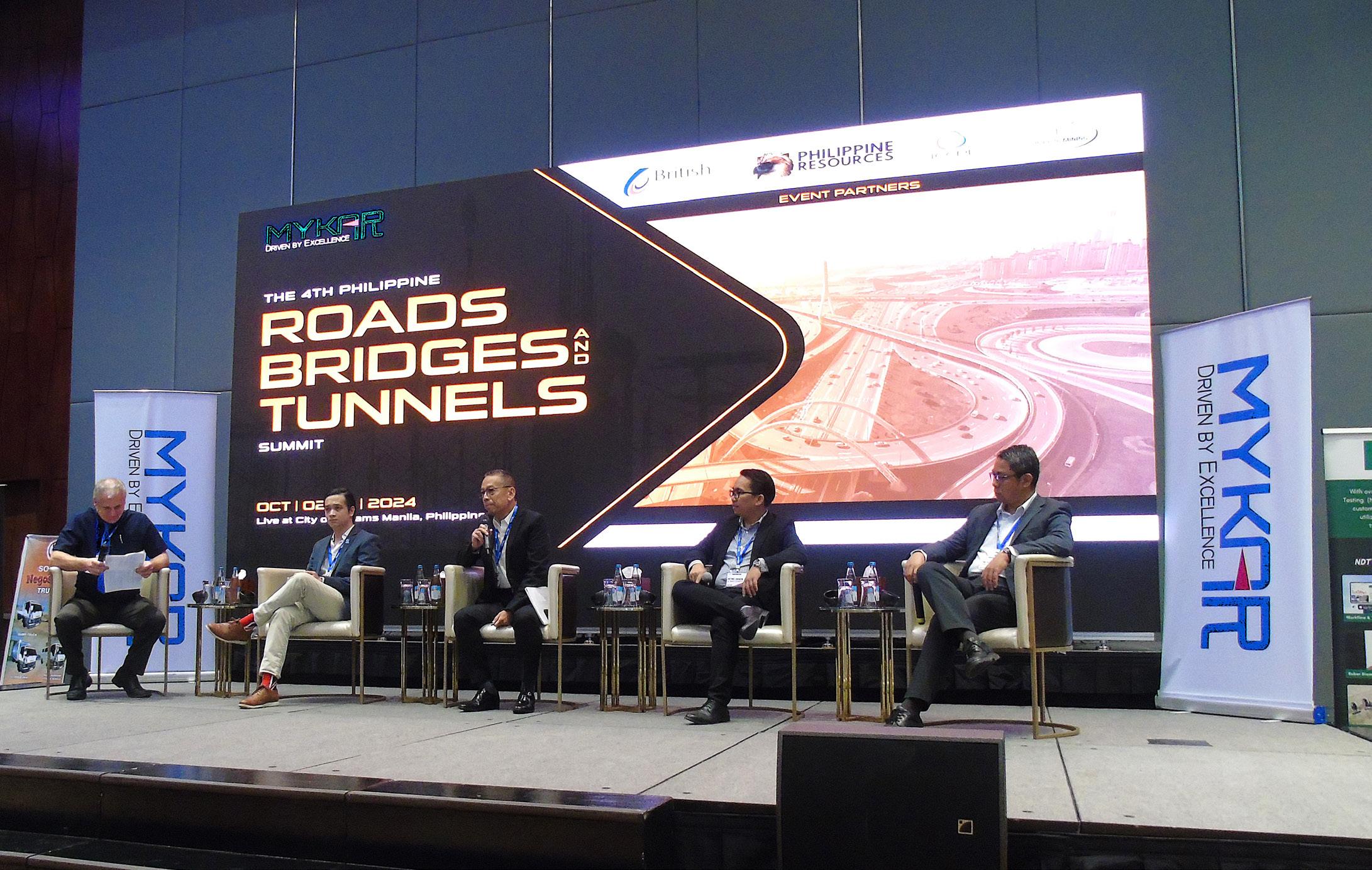
[Oct. 2-3, 2024] City of Dreams Manila, Parañaque -- The 4th Philippine Roads, Bridges, and Tunnels Summit is a well-received and successful infrastructure event. It brought together key stakeholders in the infrastructure sector, as the Department of Public Works and Highways (DPWH) prepares to allocate a staggering Php822.22B for 2024. [1] This substantial budget underscores the administration’s commitment to enhancing physical connectivity across the archipelago.
The event was organized by Mykar Events Consultancy, an international business facilitator dedicated to Asia and emerging economies through research, conference, community, and publishing.
During the summit, attendees were from top construction firms, contractors, investors, government representatives, and leading technology providers. The event’s objective is to provide a favorable
networking venue for potential collaborations, where participants may discuss opportunities, challenges, action plans, and updates related to the Philippines’ most significant infrastructure projects.
In recognition of the critical role of technology in infrastructure development, the Philippine Government emphasizes the adoption of cutting-edge advancements to create sustainable, climate-resilient, and world-class projects. During the summit, presenters and exhibitors from the private sector also shared innovative and tested solutions to address the country’s infrastructure problems.
The 4th Philippine Roads, Bridges, and Tunnels Summit also aims to shape the future of the nation’s infrastructure landscape.
Mr. Ian Lim, General Manager of Mykar Events Inc., graced the event with his warm Welcome Speech. He is also the emcee. The summit started with a Sponsor Presentation titled “Asphalt
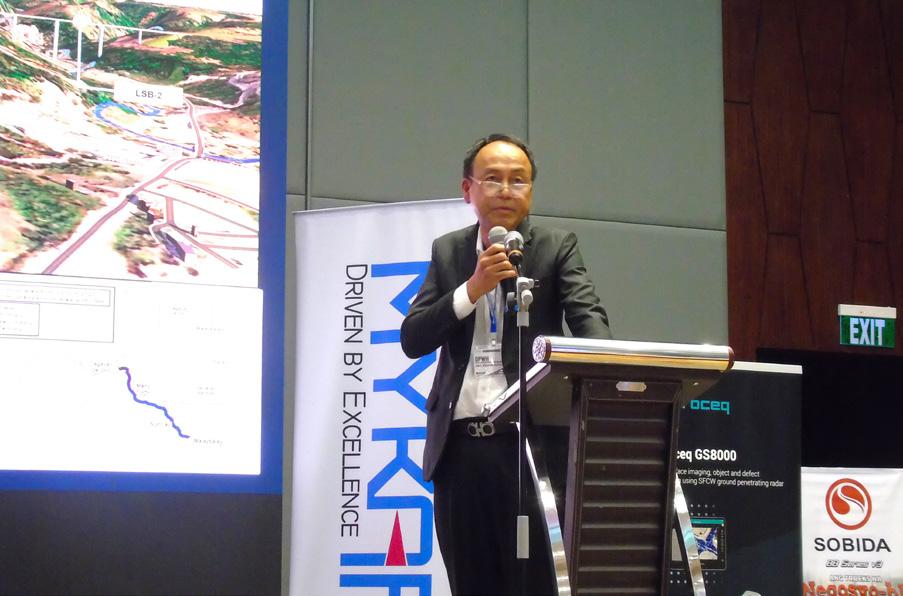
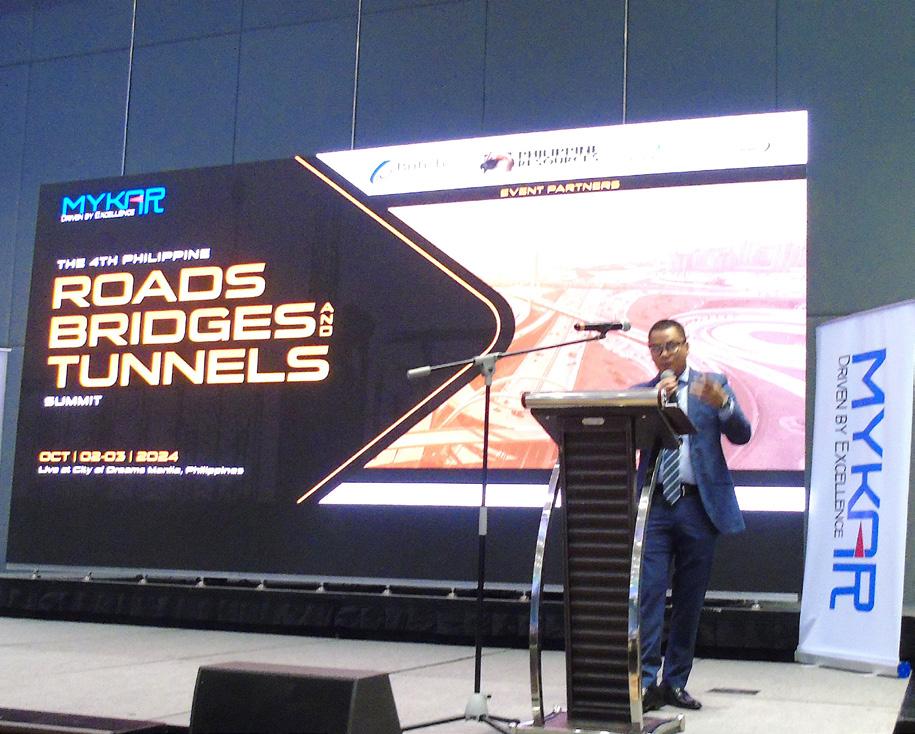
Pavement Innovative Materials and Technology” by Dr. Li Tinggang, CEO of Beijing Zhongtian Road Tech Co. Ltd. -- Winner of National Science and Technology Progress Award and he is a Beijing Science and Technology evaluation expert.
Mr. Vipul Modi, Senior Product Specialists, Solutions Engineering Mobility, Bentley Systems, and Dr. Alexis Fillone, Professor, Civil Engineering Dept., De La Salle University, Manila, presented “How Transport Planning Helps in Informed Decision-Making”.
DPWH Project Director Benjamin A. Bautista reported the “Updates on DPWH IFPs (infrastructure flagship projects)”.
A Sponsor Presentation was given by Mr. Dick Bon Penar Salcedo, Road Segment Manager of Holcim Philippines, Inc.
Mr. Mark Wallace, President, Philippine Tunneling Society presented “Philippines Tunneling and Underground Space – Past, Present, and Possible Future”.
Dr. Lea B. Bronuela–Ambrocio, Assistant Professor, Institute of Civil Engineering, University of the Philippines presented “Addressing Challenges in Improving the Country’s Local Roads Through Pave”
There were more speakers for the two-day summit.
Architect Felino Palafox Jr., Principal Architect – Urban Planner Palafox Associates/Palafox Architecture Group, Inc., was one of the notable speakers during the summit. He is known for his significant contributions to the field of architecture and urban design in the Philippines and abroad.
He continues to be an active proponent of sustainable design.
During the summit, Palafox first discussed the Philippine resources and economic potential. He enumerated the Philippines’ natural resources and assets, including marine biodiversity, voice call centers, and geothermal energy, emphasizing the country’s potential. He compared the Philippines’ historical economic status to Japan and other Asian countries, noting a decline since the 1980s.
Palafox cited a forecast from Goldman Sachs and HSBC,

suggesting the Philippines could become one of the top economies by 2050 with the right strategies.
Thus, he outlined the need for smart infrastructure, including airports and seaports, to support the growing population and economic ambitions.
During his lecture, he mentioned the decades-old mistakes in the design of Metro Manila which did not anticipate the future boom in population in the city, where today, millions of commuters, and motorists go to EDSA daily, thus causing massive traffic congestion.
Metro Manila’s notorious traffic congestion, characterized by slower speeds, longer trip times, and increased vehicular queueing, has a huge, negative impact on the country’s economy and the wellbeing of citizens.
He noted that this problem is caused by short-term planning in the Philippines and thus, he advocates for long-term, visionary planning.
He mentioned that Metro Manila’s design followed the plan in Los Angeles where it focused on cars and other vehicles, instead of providing a pedestrian-friendly landscape that is conducive for walking.
Suggesting some solutions, Palafox presented some designs that advocate for road transport corridors with dedicated lanes for trees, pedestrians, and bikes.
He also promotes vertical urbanism and tall buildings to accommodate the growing urban population and to save green spaces.
In relation to this, he shared his research, comparing compact cities with tall buildings to urban sprawl. One of the global trends in design is tall buildings with green facades.
Palafox also discusses the importance of digital infrastructure, citing Dubai’s example of reducing corruption through online permits.
He later presented a three-minute video on the Philippines’ future vision, emphasizing the need for implementation.
Additionally, he outlined the need for 100 new, sustainable cities to support the growing population and urbanization. He emphasized the importance of green building codes, sustainable buildings, and urbanism.
“As the Philippines population continues to grow, we would need 100 new cities that are connected, more accessible, sustainable, livable, and smart cities by 2025,” he said.
Palafox has written extensively on architecture and urban planning and has spoken at various conferences and forums, sharing his expertise and insights into sustainable development practices.
Photos by Marcelle P. Villegas
Reference: [1] Briefer on the 2024 Proposed National Budget - https://www.dbm. gov.ph/wp-content/uploads/Our%20 Budget/2024/2024-Budget-at-aGlance-Proposed.pdf
Geophysics has evolved into a leading discipline, providing invaluable insights in geotechnical, civil and mining engineering.
Leading Geologist Tom Grace sheds light on the benefit of geophysical methods applied to engineering including geotechnical, civil, mining and water. His aim is to build an appreciation for geophysics and highlight the potential to significantly reduce risk, cost and schedule through proper ground profiling.
Geophysics is the measure of the physical properties of the ground and the processes to quantify these properties. It is a transparent, auditable process with repeatable measurements.
Geophysics takes principles from physics, geology, and mathematics to measure, model and analyse the physical composition of the ground, from near to very deep below surface to investigate the subsurface structure, material properties and behaviour.
Geophysics applied to ground related engineering like geotechnical, civil, mining and groundwater enables engineers and contractors to search for anomalies in the composition of the ground, which is analysed through mathematics modelled against the anticipated geological profile.
It is often an iterative process to calibrate the geophysical model against the geological interpretation. This can reveal the previously unknown or unseen, prior to intrusive testing (drilling, CPT etc).
Geophysical methods commonly applied in engineering broadly comprises seismic, electro conductivity and radar-based surveys to map the subsurface. Gravity and magnetic surveys are less common in engineering applications.
Geophysical methods applications in civil and mining engineering are common now and since inception, gathering critical mass in the early 1970’s, originating out of large oil and gas projects. The people, technology and machinery to support these projects was brought in from mature

markets overseas such as Europe. The coal and mineral mining sector also began applying geophysical methods in the search for carbon-based fuels including coal and metalliferous deposits. Geophysics was used extensively as it had great benefits, particularly when the NZ Government funded it to define the country’s available coal resources and investigate potential for converting coal to liquid fuel as an energy source.
Initial applications in engineering were possibly less successful due to
the scoping and design not being appropriate, leading to inconclusive outcomes. This led to a belief that geophysical data could be easily interpreted, not recognising the complexities involved in data collection, processing and analysis.
With this misunderstanding, project expectations in the geophysics data were often highly backed by a strongly held perception that the Geophysical analyses were more accurate than they were.
In reality, geophysical data usually needs to be corroborated with other data sources, and there can be limitations and uncertainties.
Modern Geophysical investigations are cost-effective and fast, especially when compared to the costs of traditional drilling or excavation. Many clients are now realising the potential savings of a mixed approach to ground analysis.
In practicality, different methods are suited for different geological conditions and objectives, requiring careful selection by a specialist Geophysicist. Validity of the method is re-emerging due to improved practice, guided by:
• changes in regulations and codes which have changed the industry expectations of standard investigation methods.
• the growing body of work of geophysical practice in-field has consolidated as a reputable basis for ground analysis.
• mainstream practice and delivery have globalised through immigration of specialists;
• expectations are more realistic.
Geophysical methods and techniques today must be tailored to the setting and engineering problem. The main types applied in modern engineering applications are:
1. Seismic Geophysics: Uses seismic waves to investigate subsurface structures. Common in oil and gas exploration, as well as earthquake studies.
2. Electrical Resistivity Tomography (ERT): Measures the electrical resistivity of subsurface materials, useful for environmental assessments, groundwater studies.
3. Ground Penetrating Radar (GPR): Uses radar pulses to image the subsurface, effective for locating buried objects, structures, and geological features.
4. Downhole Geophysics: Uses various methods to measure a range of conditions for the ground once a borehole has been drilled. Common tools include optical and acoustic televiewers, sonic tools, natural gamma and density measurements. Other methods not as common in our local market include:
5. Gravity Surveying: Measures variations in the Earth’s gravitational field.
6. Magnetic Surveying: Detects variations in the Earth’s magnetic field.
7. Electromagnetic (EM) Methods: Measures the electromagnetic fields.
Put simply geophysics offers another diagnostic lens. It is not a definitive measure but another tool in the toolbox to understand what is happening below a broad land surface.
Geophysical methods:
• Save time and costs by providing critical information to target drilling or excavation.
• Are non-intrusive and less invasive with a lower social footprint without the need for machinery.
• Subsequently lowers costs as there is less remedial investment, it offers a small lighter footprint, less cost to the asset
• Supply better coverage for equivalent cost. With increasing pressures on infrastructure investment Geophysics offers a high value-for-money business model.
• Provide accurate, repeatable measurements subject to ISO equivalent quality assurance processes.
• Are tested and proven from experience with growing body of experienced Geophysics practitioners.
The benefits of geophysics are illustrated in these short case studies to show how Geophysics has helped delineate the problem and provide our client with a smart, cost-effective solution for the project:
Seepage paths were assessed in a flood bank control structure using Ground Penetrating Radar and ERT, which identify a likely leakage source and quickly targeted remedial works which were reduced.
The client had a flood mitigation structure that they knew occasionally leaked during high flow events. Potential sources could have focussed leakage along penetrations through the kilometres-long stop bank (tree roots, contact between material layers, unknown pipelines) or distributed leakage throughout the embankment (unsuitable fill or poor construction).
Ground Penetrating Radar and ERT were used to identify an anomaly
within a few meters of the suspected leakage location. Two methods measuring different parameters were used to increase confidence in the interpretation. As a result, physical remedial works were reduced and focussed directly on the identified anomaly.
During Cyclone Gabrielle, stopbanks (flood control dykes) in Hawke’s Bay, New Zealand were damaged and breached. At one specific breach (approx. 200m wide), geophysical investigation and interpretation to assess the likely ground conditions was used as the basis for a risk-based remediation approach. There was potential for the repaired stopbank to leak through the foundation materials. A suggested repair option involved a cut off wall down to a low permeability layer. Geophysical methods were rapidly deployed as a preliminary assessment tool and showed that there was no impermeable layer close to surface. The screening approach gave confidence in the ground model to confirm the risks for preliminary design without delay. Changes were made to the stopbank geometry to reduce the risk of leakage from an informed position.
When choosing a supplier to deliver your Geophysical investigation, ensure you select them with a clear understanding of their capabilities. Take time to understand the quality of machinery and tools, check track records and review the experience of nominated staff. It is a highly specialised service which can be easily misunderstood; partner with a proven specialist to give yourself the best chance of success.
Tom Grace
BSC MAusIMM Chartered Professional Geology
Tom Grace is one of the Principal Geologists at RDCL with over 20 years of experience in the industry. Tom has been working across the RDCL network in New Zealand and Asia for over 16 years, with a background in Project Geology across NZ, Australia and Canada. Tom is a graduate of the University of Canterbury Geology programme.
August 9 marked the celebration of the International Day of the World’s Indigenous Peoples. In conjunction with this observance, Taganito HPAL Nickel Corporation also honored the rich cultural heritage and foundational contributions of our ancestors, represented by our Indigenous Peoples.
The event emphasized the statement, “I’m a proud member of the Indigenous community and I belong to THPAL,” showcasing the pride and sense of belonging felt by the Indigenous workforce within the organization.
This event was dedicated to recognizing the valuable contributions of our Indigenous employees and their significant roles both in the company and the wider community.
THPAL has undertaken considerable initiatives to enhance employment opportunities for Indigenous communities in Claver, Surigao del Norte. Given that Indigenous Peoples are often underrepresented in the labor market, securing job opportunities, particularly within corporate sectors, has proven challenging for them.
By implementing inclusive hiring practices, THPAL guarantees that Indigenous applicants are included in the region’s economic development. Historically, these communities have been constrained to the role of guardians of their ancestral lands. However, through THPAL’s programs, they are now able to participate in the corporate workforce while preserving their unique cultural identities.
Indigenous peoples in the municipality of Claver are not merely recognized on this day; rather, they receive equal consideration and opportunities to express their identity and talents.
Each September, the municipality places significant emphasis on advocating for the Indigenous Peoples communities, providing them with a platform to display their distinct culture, traditions, and way of life.
This celebration serves not only as
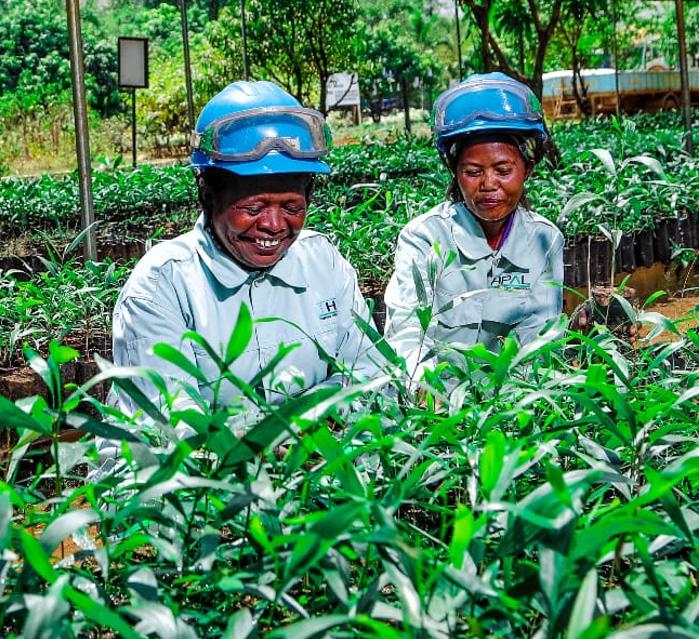

a platform for them to demonstrate their talents but also as a means for them to fully embrace their lives within the broader community, ensuring they have the same opportunities as other citizens.
In addition, last September 14, the Taganito HPAL Nickel Corporation held a signing of a Memorandum of Agreement (MOA) for 15 Indigenous People college students who will benefit as scholars of the educational initiative under the Social Development and Management Program (SDMP).
This initiative has been made to primarily assist and educate underprivileged members of the
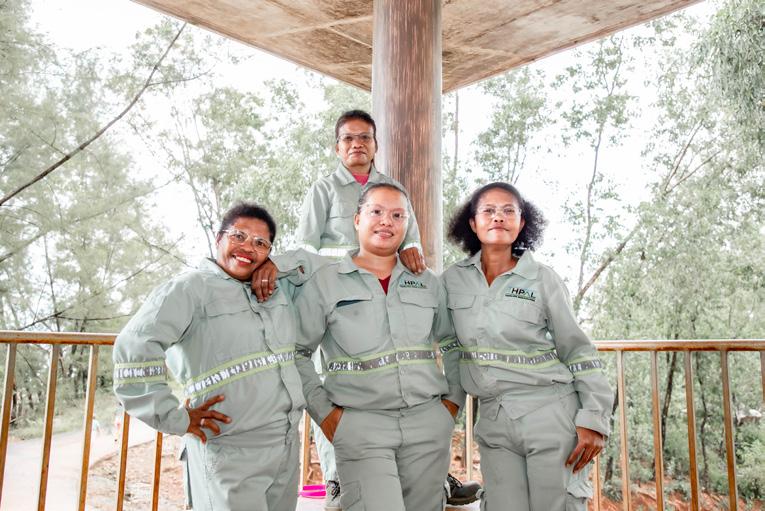
Indigenous People (Mamanwa) to pursue a college education, encouraging them to engage with the evolving society beyond their familiar environments.
By doing so, it empowers them to forge their paths and transform their perspectives on life, ultimately allowing them to elevate their social standing and improve their overall quality of life.
THPAL ensures that IP communities will be uplifted in manner that they will realize their dreams and will create lasting impact as individuals. This will also serve as an avenue to combat discrimination.
Showing its commitment to transforming the industry through safer, more productive and more sustainable drilling solutions. Sandvik recently launched the Centrevo digital suite, which empowers customers through a vast array of rock tools performance data, business insights and expert support.
By enabling connected collaborations, with easy-access data and less time-consuming paperwork, customers can make fact-based and optimized decisions, Sandvik said in a statement.
A core component of Centrevo is Track, a digital application for capturing real-time tool performance data in a user-friendly and flexible way.
Benefits include more accurate decision-making, gathered insights and analytics, and both on-site and remote problem solving.
Historically, key customer data such as cost per meter, number of tools used and tool performance has been collected manually, the company said. Track supports the digital transformation by capturing important rock tools parameters and creating full visibility across drilling operations.
Track also enables Sandvik customer representatives to spend more time on business support such as continuous improvements, benchmarking and training, helping customers increase productivity and efficiency, it added.
“We are proud to offer our customers such a powerful digital solution,” said Rickard Andreasson, Acting Vice President Rock Tools Services at Sandvik Mining and Rock Solutions.
“Track enhances our global service offering, improving productivity, logistics and contract support. Track optimizes the number of datacollecting visits to a site, which leads to improvements in terms of both safety and our environmental impact.”
Drill is another key component of the Centrevo digital suite, the company said. Using a mobile interface, this interactive simulator supports a deeper understanding of how correct drilling parameters impact both rock tool life and performance.
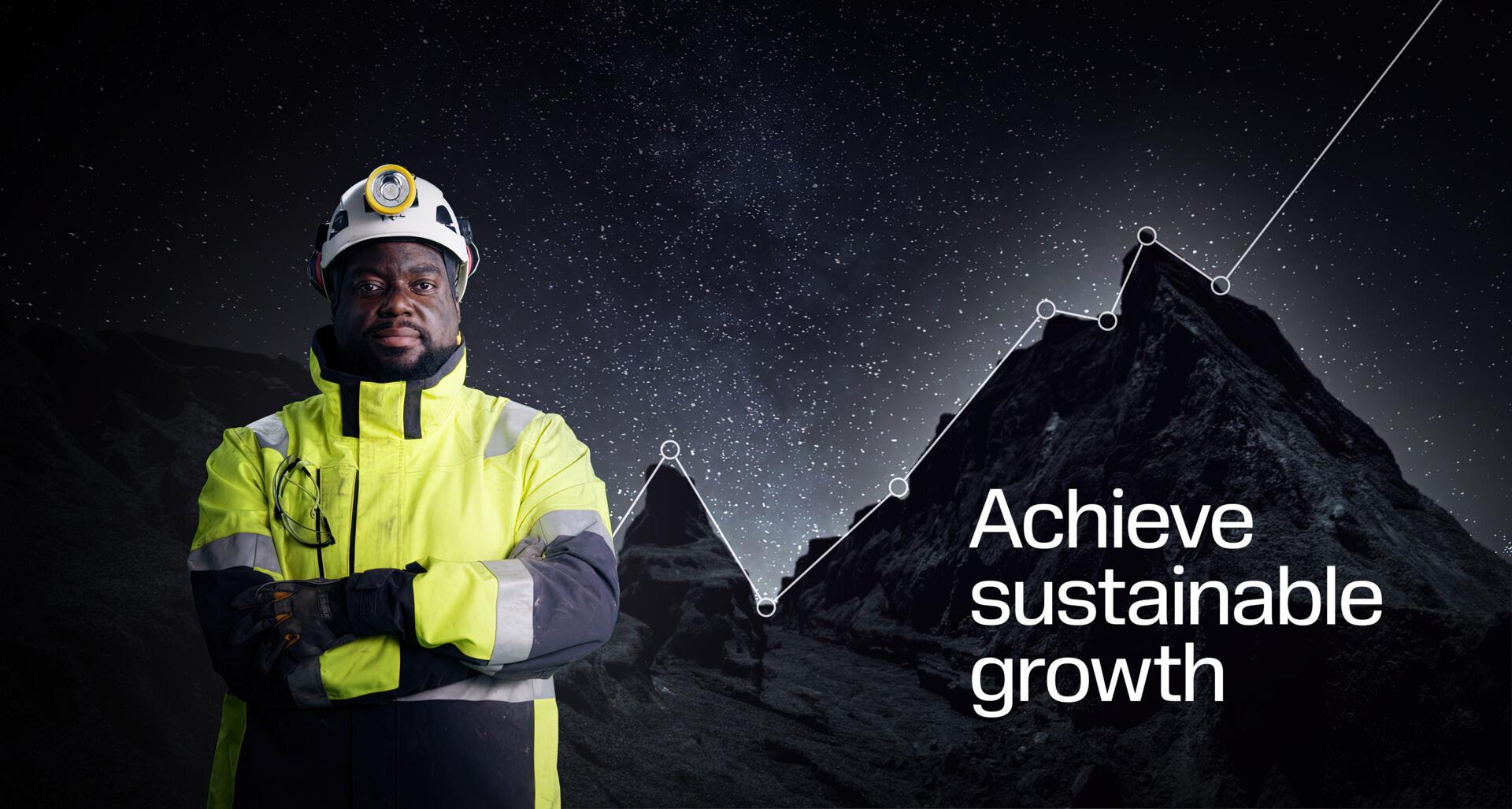
It is available for top hammer, down-the-hole and rotary applications and educationally demonstrates how to maximize productivity in different ground conditions, Sandvik said.
“Drill effectively showcases how rock tool performance can be enhanced through classroom or remote training,” said Andreas Rahm Yhr, Transformation and Contract Manager Rock Tools Services at Sandvik Mining and Rock Solutions.
“Customers coached with this solution gain a deeper understanding of how different practices and drilling conditions impact productivity and drilling costs.”
By using rock tools services and the Track application to digitize their inventory management during a field test, substantial improvements were registered for tool waste reduction, circuit stock optimization and tool service life, the company said.
An underground contract miner reduced the cost per meter (CPM) by 30%, corresponding to annual savings of USD 580,000, it added.
Centrevo also has Analyze, a mobile application designed for failure and discard analysis of Sandvik rock tools and provide guidance on improvements – all remotely.
The aim is to determine the root cause of the failure or discard reason of the rock tool, prevent it from happening again and to help improve future performance.
The Report application is also used by Sandvik representatives to help increase productivity and improve
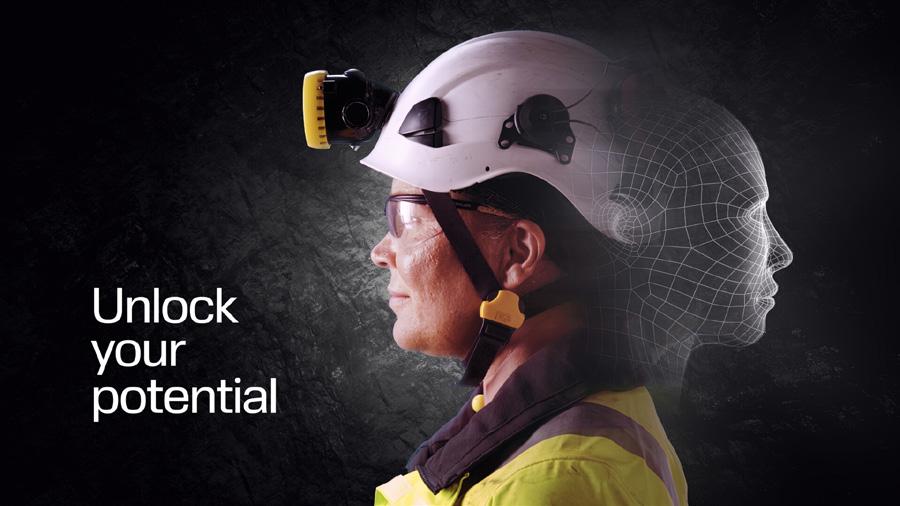
customers’ operational efficiency.
The different digital reports, like rock tools report card, customer visit report, and site audit report, all help customers get new insights on how to further improve rock tools performance and collaboration, the company said.
Sandvik is a global, high-tech engineering group providing solutions that enhance productivity, profitability and sustainability for the manufacturing, mining and infrastructure industries. The company is at the forefront of digitalization and focus on optimizing its customers’ processes. Its worldleading offering includes equipment, tools, services and digital solutions for machining, mining, rock excavation and rock processing.
Sandvik Mining and Rock Solutions is a business area within the Sandvik Group and a global leading supplier of equipment and tools, parts, service, digital solutions and sustainability-driving technologies for the mining and construction industries. Application areas include rock drilling, rock cutting, loading and hauling, tunneling and quarrying.
is a cutting -edge,
industries such as mining and upstream oil extraction. It provides immediate, condition and wear debris, enabling real -time equipment monitoring.
aiming to avoid costly machinery failures and optimize their maintenance
Spectro Scientific's FieldLab 58C is a cutting-edge, portable oil analysis system designed for use in industries such as mining and upstream oil extraction. It provides immediate, comprehensive data on oil condition and wear debris, enabling real-time equipment monitoring. This system is key for companies aiming to avoid costly machinery failures and optimize their maintenance schedules.
The FieldLab 58C is not only innovative but also user-friendly, requiring minimal technical expertise from operators. It combines four key technologies— an X-Ray Fluorescence (XRF) spectrometer, a Filter Particle Quantifier (FPQ), an infrared (IR) spectrometer, and a kinematic viscometer—into one compact, portable unit. The system performs four crucial tests within just 10 minutes, offering up to 20 essential oil analysis parameters. These tests cover critical areas such as particle count, elemental concentrations, fluid chemistry, and viscosity using just 12 milliliters of oil. The results help operators quickly assess machine wear, contamination, and lubricant condition, empowering them to make fast, informed decisions.
ensuring that machinery continues to function smoothly and reliably.
The FieldLab 58C’s rugged design makes it well-suited for the harsh conditions often found in mining environments. Its batterypowered operation, solvent-free design, and intuitive touchscreen interface streamline the oil analysis process, making it simple and fast. Furthermore, its smart diagnostics feature allows users to customize alarm limits and operational parameters, enhancing the system’s adaptability to different needs.
In mining and other heavy industries, equipment failures can result in massive downtime and financial losses. Lubricant and wear debris analysis, such as that provided by the FieldLab 58C, can predict potential breakdowns and extend machinery lifespan. The system generates easy-toread reports with diagnostics and recommended actions based on factory or user-defined alarm settings, minimizing human error and ensuring accurate results.

including the FieldLab 58C. QES Technology is dedicated to providing world-class oil analysis and condition monitoring solutions tailored to the needs of industries like mining.
The FieldLab 58C is not only innovative but also user -friendly, requiring operators. It combines four key technologies — an X-Ray Fluorescence Quantifier (FPQ), an infrared (IR) spectrome ter, and a kinematic viscometer unit. The system performs four crucial tests within just 10 minutes, parameters. These tests cover critical areas such as particle count, chemistry, and viscosity using just 12 milliliters of oil. The results help wear, contamination, and lubricant condition, empowering them to
In industries like mining and upstream oil extraction, the smooth operation of large, complex machinery such as generators, gearboxes, and hydraulic pumps is critical. The FieldLab 58C provides a mobile, efficient solution for monitoring these machines’ health by detecting abnormal wear debris from iron and nonferrous metal components. Spectro Scientific’s advanced technology allows for easy identification of contaminants like water, glycol, soot, and other particles larger than 4 microns,
The FieldLab 58C is also ASTM-compliant, offering users confidence in the reliability of its results. Spectro Scientific’s TruVu 360 Fluid Intelligence Software further boosts efficiency by helping operators manage their fleets more effectively. Maintenance teams can monitor key performance indicators (KPIs), assess asset readiness, and track cost savings from oil analysis programs through its management dashboards.
Why Choose the FieldLab 58C?
AUTHORIZED DISTRIBUTOR OF SPECTRO SCIENTIFIC
In the Philippines, QES Technology Philippines, Inc. serves as the authorized distributor of Spectro Scientific products,
With its head office in Manila and additional locations in Pampanga, Cebu, and Surigao City, QES Technology ensures that companies throughout the Philippines have access to the latest oil analysis technologies and expert support, regardless of their location.
For inquiries or quotations about the FieldLab 58C or other Spectro Scientific products, customers can reach QES Technology Philippines, Inc. by phone at +632 771 1248 or via email at qtpmarketing@ qesnet.com. Their team is prepared to assist with all oil analysis and condition monitoring needs.
By adopting the FieldLab 58C, companies in the mining sector can significantly improve their maintenance strategies, minimize equipment downtime, and ensure long-term reliability—all while protecting their bottom line.
In industries like mining and upstream oil extraction, the smooth operation such as generators, gearboxes, and hydraulic pumps is critical. The FieldLab solution for monitoring these machines' he alth by detecting abnormal ferrous metal components. Spectro Scientific’s advanced technology
In today’s fast-paced industrial environment, efficient material handling is crucial for operational success. Chief Industrial Conveyor Systems is at the forefront of this sector, offering conveyor systems that are not only versatile but also meticulously engineered to meet the unique demands of various industries. Our commitment to customization ensures that each system we provide is tailored to fit your specific needs, whether for long-distance transport or high-capacity operations.
Chief Industrial Conveyor Systems are designed to handle a wide range of applications, from port facilities to coal mining and biomass operations. Our conveyors are engineered for both overland and short-distance transportation, allowing for seamless integration into your existing infrastructure. Whether you need a conveyor system for transporting coal, minerals, or bulk materials, our designs can be customized to meet the exact
requirements of your application.
Safety and efficiency are paramount in our design process. Chief conveyors are built with rigorous safety standards in mind, ensuring reliable operation even in the most demanding environments. Our systems are environmentally friendly, minimizing impact while maximizing performance. We understand that operational efficiency can make or break a business, which is why our conveyors are designed to handle capacities ranging from standard widths of 18 to 96 inches and can load up to 10,000 metric tons per hour.
Reliability is the cornerstone of Chief Industrial Conveyor Systems. Every product undergoes comprehensive testing to meet our stringent quality standards and ensure consistent performance. Our advanced design and engineering practices result in equipment
that simplifies installation and maintenance, saving you valuable time and reducing overall costs. With Chief, you can be confident that your material handling system will perform reliably, day in and day out.
At Chief, our mission extends beyond just providing conveyor systems. We are dedicated to offering unparalleled personal attention to each client’s needs while treating all stakeholders with the utmost dignity and respect. This commitment ensures our strength and stability as a company and fosters long-lasting partnerships with our clients. By choosing Chief, you partner with a company that prioritizes your specific needs and provides solutions that enhance your operational efficiency and safety. Trust us to deliver a conveyor system that not only meets but exceeds your expectations, helping you achieve your business goals with confidence and ease.
Robit is a strongly internationalized growth company, servicing global customers and selling drilling consumables for applications in underground and surface mining, construction, and geo-technical and well drilling.
The company’s offering is divided into three product and application group: Top Hammer, Down the Hole and Geotechnical. They emphasizes that it is a global company specializing in selling drilling consumables via its comprehensive distribution network in the global market.
Robit has its own sales and service points in eight countries as well as an active dealership network through which it sells to more than 100 countries. Manufacturing units are located in Finland, South Korea and UK and shares are listed on NASDAQ Helsinki Ltd. Robit is exclusively distributed by Uptime Earthmoving Solutions, Inc. in the Philippines.
For Robit product and company videos, you may visithttps://www. youtube.com/user/RobitLtd
For product inquiries, you may reach us through the following:
Landline: (2) 8687 1000 local 396
Mobile: + 63 915 069 2676 | +63 949 137 4108
Email: uptimeearthmoving solutionsinc@gmail.com
Facebook: www.facebook.com/ uptimeearthmovingsolutioninc LinkedIn: www. linkedin.com/company/ uptimeearthmovingsolutionsinc
Instagram: www.instagram.com/ uptimeearthmovingsi/ Office Address: Unit D 10th Floor., CyberOne Bldg., 11 Eastwood Ave., Eastwood City, Bagumbayan, Quezon City, 111
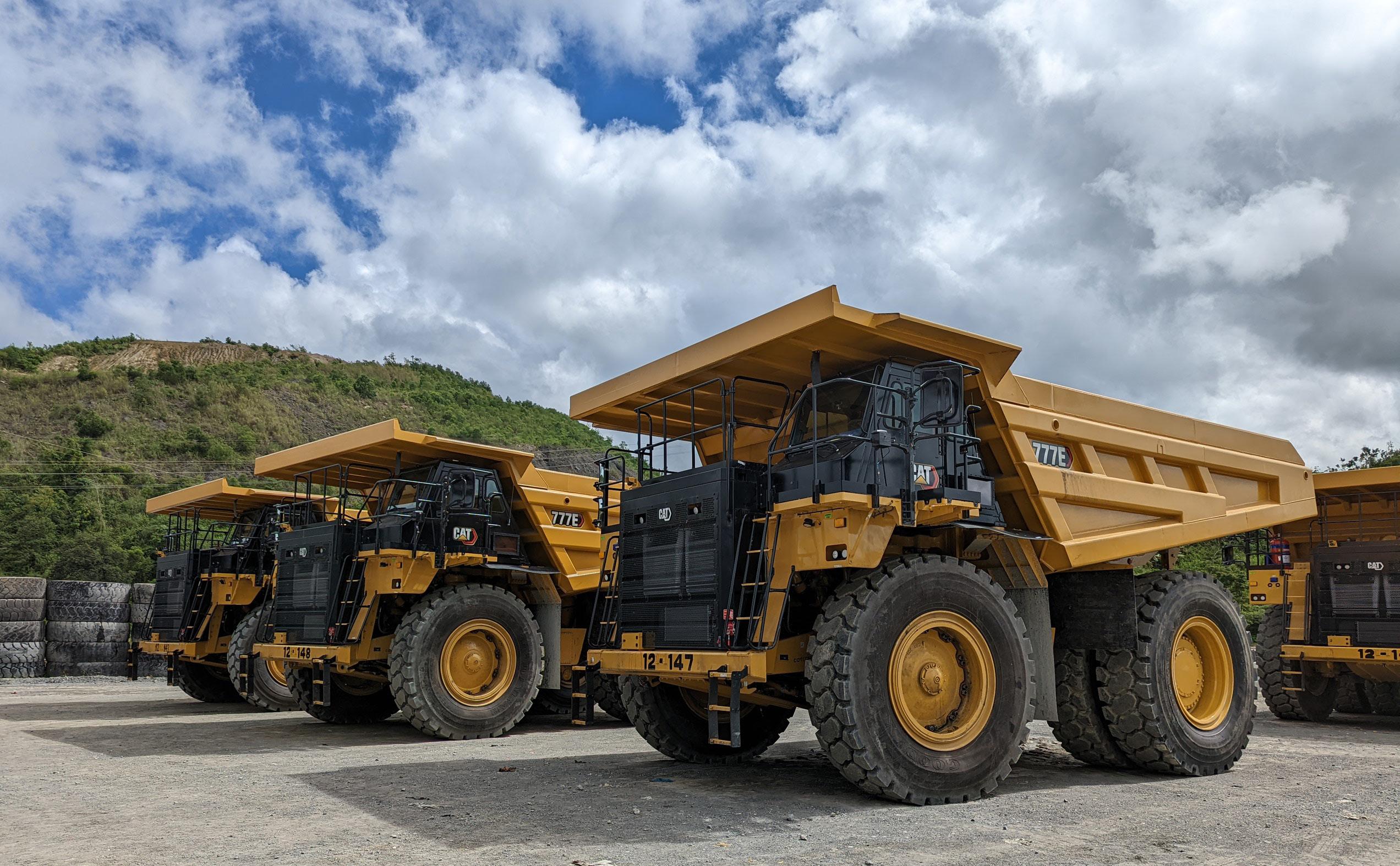
Managing tires in mining and construction sites is no easy task. At Higantis, we’ve made it our mission to help you get the most out of your tires while keeping your operations safe and efficient. We do this best by working right on site with your team, using practical strategies that make a difference in how your fleet performs and how much you spend on tirerelated costs.
One of the most effective ways to get more life out of your tires is through rotation. By rotating your tires, we make sure they wear evenly, which helps prevent any one tire from wearing out faster than the others. This means you’ll replace tires less often, lowering your overall cost per hour (CPH). It’s a process that requires planning and discipline, but it’s one that can save you a lot in the long run.
Catching tire problems early can save you from bigger headaches down the road. In our projects, our team is on
site daily, inspecting tires for signs of trouble like cuts, punctures, or unusual wear. If we find something, we call it out, schedule removal, and fix right away. This not only prevents small issues from turning into premature failures but also keeps your vehicles up and running safely.
Not all tires are built for the same operating conditions, and choosing the wrong one can lead to problems or accidents. That’s why we start with a thorough site survey to understand your specific challenges. For example, if your hauling routes are full of hard, sharp rocks, you’ll need a tire with a cut-resistant compound. On the other hand, if your operation involves long hauls in high temperatures, a heatresistant tire is the way to go. We help you pick the right tire for the job, so you get the best performance without unnecessary wear.
MAINTAINING THE RIGHT PRESSURE: A SIMPLE
Tire pressure is something that’s easy to overlook, but crucial for tire health. Tires that are either over-inflated or
under-inflated wear out unevenly, and they can even cause accidents if not properly managed. We keep a close eye on tire pressure on site, adjusting it as needed to match your load and road conditions. This small step can make a big difference in how long your tires last.
However, maintaining the correct tire pressure is only as reliable as the tools you use. That’s why it’s essential to ensure that all your pressure gauges are regularly calibrated—at least once a year. Over time, even the best gauges can become inaccurate, leading to improper inflation levels that could compromise tire performance and safety. By keeping your gauges calibrated, we make sure that the pressure readings you rely on are accurate, helping to maximize tire life and prevent avoidable issues.
Overloading vehicles or pushing them too fast can put a lot of strain on your tires, causing them to wear out
quickly or, worse, fail unexpectedly. We work with your operators to ensure they understand the importance of sticking to recommended load limits and speeds. By keeping your tires within optimal range, we help prevent unnecessary damage and keep your operations safe.
To further optimize tire performance and cost-efficiency, we utilize a tire tracking system that monitors usage, wear patterns, and performance metrics. By collecting and analyzing this data, we can make informed decisions about tire rotation schedules, replacement timing, and product selection. This data-driven approach allows us to fine-tune our tire management strategies, ensuring that every tire in your fleet delivers maximum value.
When your tires reach the end of their life, we can help ensure they’re disposed of responsibly by downsizing, repurposing them or partnering with recycling facilities that turn old tires into useful products like tire-derived fuel. This not only keeps tires out of landfills but also supports sustainability efforts, which is becoming more important for companies across all industries.
At Higantis, our tire management program is designed to enhance the safety, efficiency, and sustainability of your operations. By integrating strategies such as tire rotation, daily inspections, proper site surveys, inflation management, load and speed control, and data analysis, we help you maximize tire life and reduce overall costs. Let us help you keep your fleet running at its best, daily.
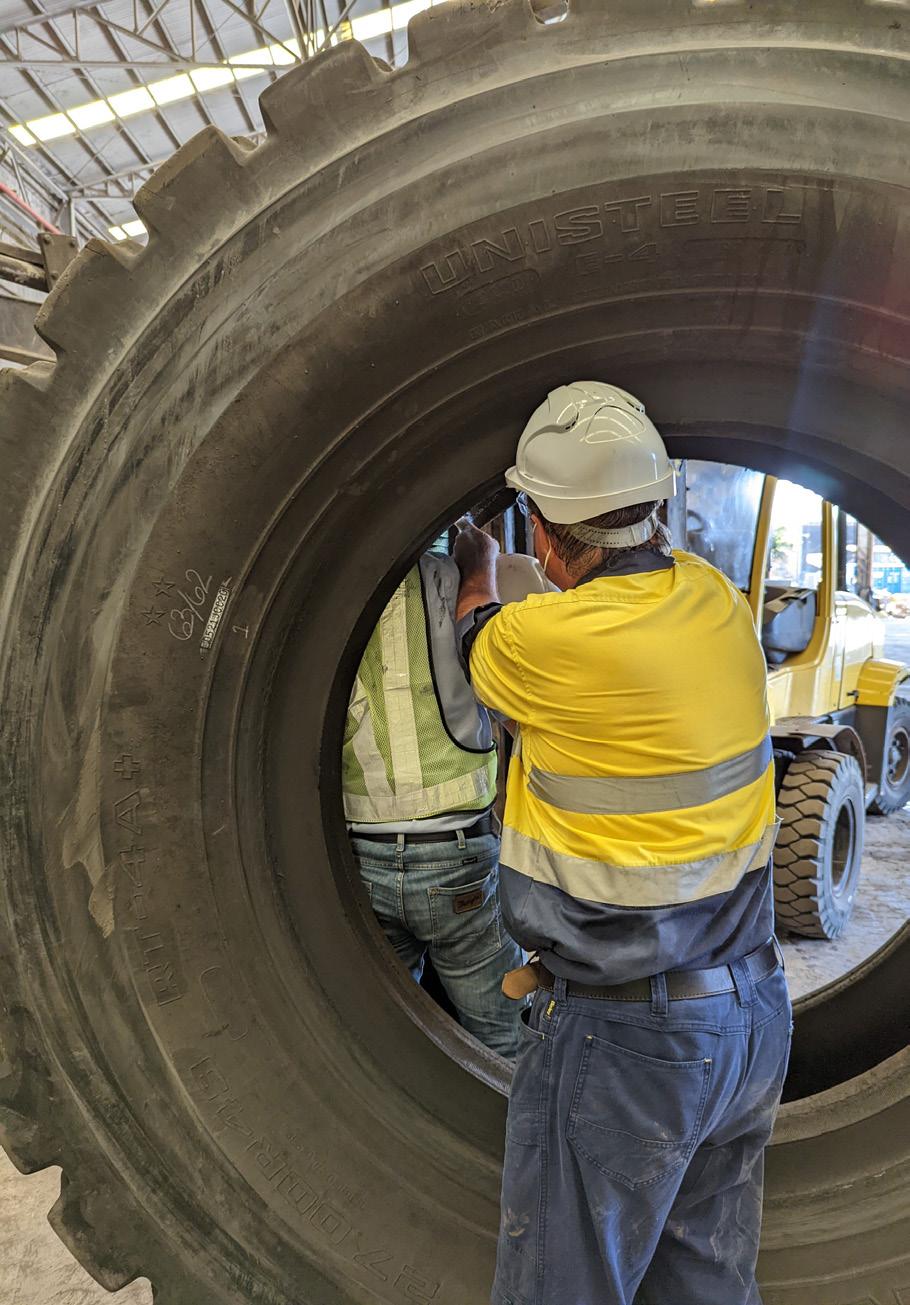
Recognizing the contribution of taxpayers to local economic growth, the Local Government Unit of Claver named Taganito Mining Corporation (TMC) as the Overall Top Taxpayer for 2023 during its Garbo nan Claver Awards & Stakeholders’ Night on September 7.
TMC also received the Top Taxpayer Award for the Mining Category, ranked 7th for the Mining Contractors Category, and was awarded the 2024 Sponsorship Award.
Spearheaded by the Office of the Municipal Treasurer - Business Permit and Licensing Division, the event recognized businesses that have consistently fulfilled their tax obligations, playing a vital role in the municipality’s growth and development.
Mayor Georgia Gokiangkee of the Municipality of Claver expressed her gratitude to the outstanding taxpayers and barangay treasurers in the municipality for their diligence in paying taxes, which benefits the municipality through projects and programs for the people of Claver.

“Tax is the lifeblood of the government. Kon wayay buwis, waya sab kitay mahimo. Ugsa husto ra gajud na ato pasidunggan an ato mga taxpayers (If there is no tax, there is nothing we can do. So it is just right that we recognize our taxpayers),” remarked Gokiangkee.
This year, Claver emerged as the Overall Most Competitive Municipality in Caraga based on the Department of Trade and Industry assessments and
the Regional Competitiveness Committee for Cities and Municipalities Competitive Index in 2023.
Claver also ranked 3rd for Overall Most Competitive LGU nationwide in the 1st to 2nd class municipality category.
TMC is a subsidiary of Nickel Asia Corporation, a natural resources development company with operations in Barangay Taganito, Claver, Surigao del Norte.
Manitowoc Crane Group, Inc. has officially inaugurated its new office located in the heart of Muntinlupa City, a strategic move aimed at enhancing customer support and expanding service capabilities. The inauguration ceremony was led by Mr. Zurich Fernandez, General Manager, alongside Mr. Brian Wang, Senior Vice President, and Hon. Rufino “Ruffy” Biazon, Mayor of Muntinlupa City. This relocation signifies a significant step in Manitowoc’s ongoing commitment to providing exceptional service and support to its clients.
The new office, situated at One Trium Tower, Alabang, Muntinlupa City, boasts a larger footprint that allows for a more collaborative and efficient work environment. With modern facilities and work-friendly environment, this new space is designed to foster innovation and improve workflow among employees, ultimately benefiting customers who require timely and effective support.
During the inauguration, Mr. Zurich Fernandez expressed his enthusiasm about the relocation, stating, “This new office is not just a change of scenery; it represents our commitment to better serving our clients and enhancing our operational capabilities. With this larger space, we can expand our team and improve our service delivery to meet the demands of our growing customer base.”
The upgraded location is strategically chosen to provide better accessibility for clients and partners, ensuring that Manitowoc Crane Group remains at the forefront of the industry. The office’s proximity to major transportation hubs makes it easier for customers to visit and interact with the support team, facilitating a more engaging customer experience. This accessibility is expected to strengthen relationships and foster collaboration between the company and its clients.
Mr. Brian Wang, Senior Vice President, also highlighted the importance of the new office in relation to the company’s vision. “Our
goal has always been to provide the highest level of service in the crane industry. This new facility allows us to not only support our existing customers more effectively but also to attract new clients by showcasing our commitment to quality and service excellence.”
The inauguration was marked by a ceremonial ribbon-cutting attended by key customers and industry partners, emphasizing the significance of this transition for both Manitowoc and the Muntinlupa community. Hon. Ruffy Biazon, the Mayor of Muntinlupa City, expressed his support for the company’s new endeavor, stating, “We are thrilled to welcome Manitowoc Crane Group to our city. Their commitment to enhancing customer service and expanding their operations reflects positively on our local economy and workforce.”
The new office is equipped with advanced meeting spaces, allowing for enhanced collaboration among team members and more effective communication with clients. These improvements will enable Manitowoc to conduct meetings, training sessions, and workshops, ensuring that their staff is well-prepared to meet the diverse needs of their customers.
As Manitowoc Crane Group settles into its new home, the focus will remain on delivering exceptional customer support and service capabilities. The company is committed to fostering a culture of innovation and responsiveness, which is essential for maintaining its competitive edge in the industry.
In conclusion, the relocation of Manitowoc Crane Group, Inc. to a larger and more strategically located office marks a pivotal moment in its journey to enhance customer service and support. With strong leadership and a dedicated team, Manitowoc is poised to continue its legacy of excellence in the crane industry, ensuring that customer satisfaction remains a top priority. The future looks bright as they embark on this new chapter in Muntinlupa City.



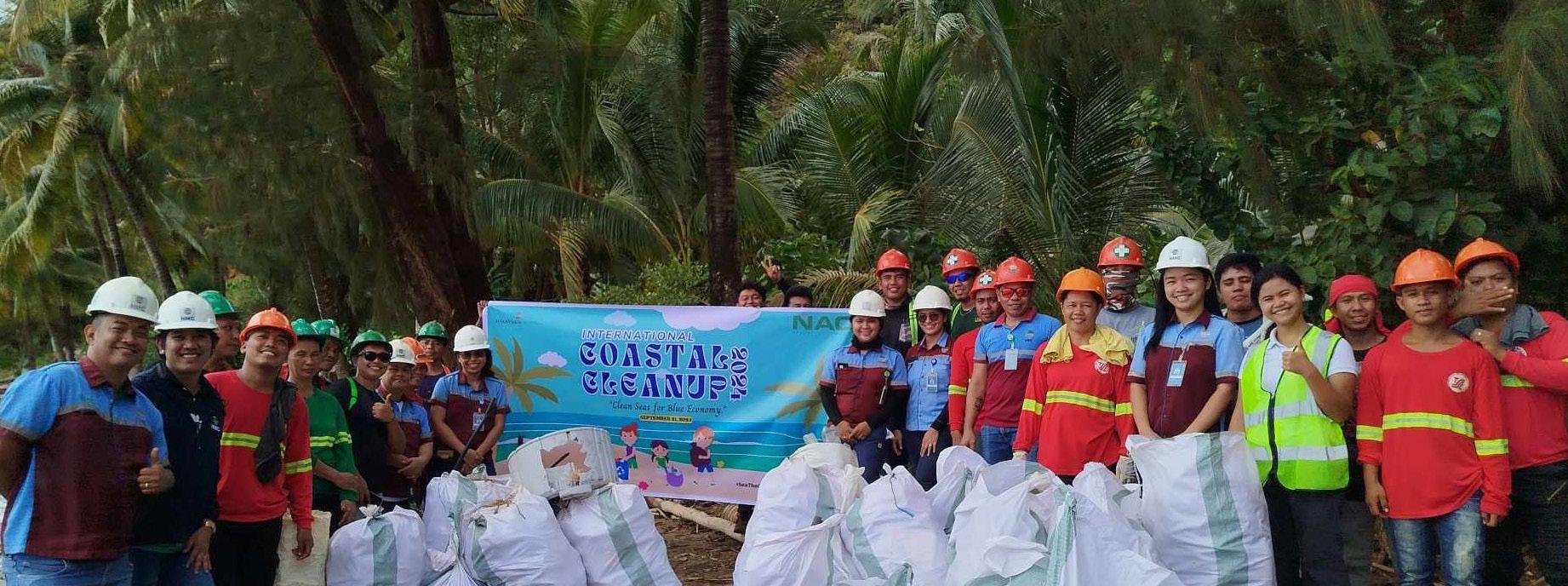
Hinatuan Mining Corporation-Tagana-an Nickel Project (HMCTNP) proudly participated in the International Coastal Cleanup (ICC) 2024, aligning with this year’s theme, “Clean Seas for Blue Economy.”
The event kicked off with a comprehensive Information, Education, and Communication (IEC) program at Magkahuyog Area, Hinatuan Island.
Mr. Lester G. Plaza highlighted the importance of the ICC program
and emphasized the crucial role coastal clean-ups play in safeguarding marine ecosystems from pollution.
Ms. Carmena C. Gamboa then delivered a compelling session on proper waste segregation, encouraging participants to adopt sustainable waste management practices.
Following the IEC, HMCTNP employees and volunteers engaged in a coastal clean-up activity, collecting a remarkable 303 kilograms of waste from the
shoreline. This collective effort aimed to remove debris that harms marine life and contributes to ocean pollution.
HMC-TNP extended its heartfelt gratitude to all departments and volunteers who participated in this successful event. Their dedication to preserving our coastal environment and supporting a sustainable blue economy is truly commendable. Together, let’s continue to protect our seas for future generations.
Apex Mining Company Inc., in partnership with SBF Phil. Drilling Resources Corp., recently conducted a medical outreach program with the goal of helping the entire community of Barangay Panibasan, Maco Davao De Oro.
Free medical services and legal consultation were provided to the people, including medical check-ups by our doctors and free medicines, vitamins to all adults and children, trimming and haircuts for both men and women, and food to those who participated and attended the service.
The beneficiaries were overjoyed with the benefits they received.
The Barangay Council, led by Captain Nonoy Tinanac, expressed his gratitude for the good things Apex and SBF have done and for continuously supporting the people of Barangay Panibasan.
The community hopes that free services will continue to address their needs, especially their health.
For their part, Apex Mining Company Inc. and SBF Phil. Drilling Resources Corp., vowed to help adjacent barangays with the full support of the local government units.

Uniroc focuses on the research and development, manufacturing, and sales of complete sets of intelligent equipment for drilling and blasting tunnel construction and mining. Its business covers railway tunnels, highway tunnels, underground mines, water conservancy and hydropower, pumped storage power stations, underground caverns, and other fields. We serve over 4000 projects worldwide and have established deep cooperative relationships with numerous enterprises. Our products are exported to nearly 20 countries and regions including Europe, South America, Africa, Southeast Asia, South Asia, Central Asia, and the Central East.
Since its establishment, we have been constantly focusing on the field of special-purpose equipment, specializing in the research, development, production and sales of complete sets of intelligent equipment for tunneling and mining. Many of the tunnels or hydraulic projects we have participated in are the ‘world’s largest’, such as the world’s first tunnel in Qinling Tiantai Mountain Tunnel, the world’s longest highway tunnel project Wuwei Highway, Indonesia’s Jakarta-Bandung High-Speed Railway, the world’s super-projects Sichuan-Tibet Railway, etc., as well as the worldclass hydropower stations, such as Baihetan, Wudongde, Xiangjiaba, Xiluodu, etc. ......
The face drill rig WD561 we are promoting is a compact and adaptable drilling equipment, with its height of 1.6 meters, width of 1.3 meters, and can meet the minimum working section of 1.9m×1.9m. The drilling speed is fast, the highest drilling speed can reach 2.5m/min; the personnel adaptability is strong, the first remote control operation, the operation is simple and easy to learn. Face drill rig WD561 shows excellent performance in Zijin Mining gold mine, in the roadway section size of 2.6m×2.6m, rock hardness coefficient reaches


the bad environment of F10-12, WD561 with 45mm hole diameter, realized 2.8m drilling depth, and the whole drilling process can meet the minimum working section of 1.9m×1.9m, and it can meet the requirements of 2.8m drilling depth, and it can meet the requirements of 2.8m drilling depth. The drilling depth of WD561 is 2.8m with a hole diameter of 45mm, and the whole drilling process takes only 75 seconds. The blasting footage in a single day stably stays above 5m, which fully proves its high efficiency and stability. Another star product, WD581, is suitable for drilling and anchor holes in mine roadways, pumped storage power stations, hydropower stations and reservoir irrigation holes, with a minimum working section of 2.4m×2.9m. It adopts electro-proportional hydraulic control, which makes the operation easier and the drilling positioning more accurate.

Meanwhile, it has the functions of automatic drilling, automatic retraction, automatic anti-jamming and automatic stopping of impact, which effectively improves the service life of drilling tools and drilling depth. It is equipped with self-diagnosis and safety voice alarm system, which realizes realtime monitoring and fault detection on the construction site.
From the manual mining operations in the pitch-black mine shafts to the intelligent unmanned mining, we are assisting small and medium-sized mines in moving towards intelligence. In the future, we will continue to focus on research and innovation, ensuring the ‘technical key’ for the construction of smart mines, promoting the application of intelligent mining technology, and contributing to the global mining industry’s intelligent transformation and upgrading.
At MMD, our strong focus on innovation and community engagement plays a key role in shaping our future path. We believe that progress involves not only advancing technology but also a positive, sustainable impact on society and the environment. As we continue to develop groundbreaking products, we remain dedicated to addressing global challenges, supporting local communities, and promoting environmental stewardship. We are proud to share some of our achievements and initiatives that reflect these core values.
Feeder Breakers are fundamentally multi-process machines combining three core elements of feeding, conveying and breaking processes, to achieve a desired rate of material comminution. Units are typically installed to receive unprocessed raw mine material delivered to the feeder module, which is then transferred to the breaking module. The sized material from the breaking module is then dispatched on an integrated or separate discharge conveyor. The operating environment poses challenges such as the physical working area, which greatly restricts the size of equipment in both width and most crucially height. MMD’s technology has been able to overcome these constraints by offering low profile and highly efficient machines.
Following on from the successes of combining efficient Sizing and feeding systems in Feeder breakers, MMD have developed the world’s leading range size reduction equipment for In-Pit Sizing & Conveying (IPSC) applications. MMD have designed and manufactured a wide range of fixed, semi-mobile and fully mobile Sizer stations for this type of mining system. IPSC systems are a more cost-effective and safer alternative to the discontinuous material transport by dump trucks out of the mine. In fact, IPSC systems significantly reduce or can even eliminate dependency on dump trucks, helping customers

achieve environmental management goals, with a reduction in greenhouse emissions, dust and noise pollution. MMD have developed an unmatched track record of consistent success, setting the standard for efficient and flexible equipment.
MMD’s dedication to sustainability extends beyond product development. We recognise the importance of protecting the environment and supporting the communities in which we operate. As part of our corporate responsibility initiatives, we have undertaken several projects aimed at creating a positive change.
A key initiative has been a tree planting campaign, through which we have collaborated with local communities and environmental organisations to plant thousands of trees across multiple regions. This initiative is part of our broader strategy to combat climate change, enhance biodiversity, and contribute to the creation of green spaces for public enjoyment. We view tree planting as a tangible way to invest in the environment while strengthening community ties.
In parallel, we have intensified our focus on social responsibility through charitable activities. Our employees have consistently demonstrated their commitment to giving back, and we have supported numerous charitable efforts over the past year. Notably, we recently partnered with a prominent non-profit organisation to host a

charity fundraiser, where all proceeds were directed towards building a quiet and safe space for cancer patients and their friends and families. This initiative reflects our belief that corporate success must be shared.
As we look to the future, MMD remains resolute in our commitments to technological innovation and community engagement. We recognise that the true measure of progress lies in how well we balance advancements in technology with sustainable practices and meaningful contributions to society. Our mission is to create products that not only improve operational efficiencies but also promote a culture of responsibility and sustainability. Through our ongoing efforts, MMD aims to remain focused on both technological development and corporate social responsibility. We are confident that by embracing innovation and sustainability, we can drive positive change in the world around us.

The new Minetruck MT66 S eDrive is the first of Epiroc’s large-capacity mine trucks to feature the latest generation electric drivetrain. Along with an upgraded and powerful diesel-engine, the hauler combines the cost-effectiveness of a traditional mine truck with the productivity of an electric one –without requiring change to a mine’s infrastructure.
The Minetruck MT66 S eDrive has been completely redesigned to feature an electric drivetrain, powered by the strongest engine yet in Epiroc’s line-up of underground mine trucks. With several other upgrades, such as weight reduction and better utilisation of the engine’s sweet spot, the truck can reach up to 11% higher ramp speed compared to current models.
“Minetruck MT66 S eDrive has been built from scratch with room for an additional tonne in the box, making it the largest capacity underground mine truck on the market. By combining power with innovation, it really is the best of two worlds,” says Wayne Symes, President at Epiroc’s Underground division.
Epiroc adds that while the Minetruck MT66 S eDrive enables both higher maximum payload and increased speed compared to other high-capacity mine trucks, it also reduces fuel consumption by up to 7% thanks to the electric drivetrain. The removal of mechanical parts also lowers maintenance costs, promising reduced total cost of ownership. All in all, with all these improvements on board, it says the Minetruck MT66 S eDrive offers an easy step to improve productivity quickly.
“In a typical mining application, the increased payload capacity means that the Minetruck MT66 S eDrive can add an additional cycle each day compared to a 65-t mine truck. That means well over 23,000 additional tonnes annually for our customers’ productivity,” says Martin Wallman, Global Portfolio Manager Underground Trucks at Epiroc’s Underground division.
The Minetruck MT66 S eDrive offers comfort and ease of operation. Its excellent steering response as a result of the steer-by-wire and brake-by-wire functionality, frontaxle suspension, ergonomic operator
environment with low noise levels, and one-pedal drive system make it enjoyable to operate for extended periods.
As part of the Smart series, the Minetruck MT66 S eDrive features integrated smart functionality and is automation ready. It monitors your operation using our telematics solution, Fleet+, which collects and visualizes vital equipment data, enabling you to fully optimize your underground operations.
The new Minetruck MT66 S eDrive is defined by a fresh design philosophy and a completely new machine built from the ground up. By replacing the mechanical drivetrain with an electric drive, this mine truck benefits from an extended lifecycle, increased availability, and improved utilization rates.
Pair your Minetruck MT66 S eDrive with the Scooptram ST18 S or Scooptram ST18 SG for the ultimate duo. Our Minetruck MT66 S eDrive underground truck is part of the Smart series (S). Equipped with Rig Control System (RCS) and ready for smart functionality such as automation and remote control.
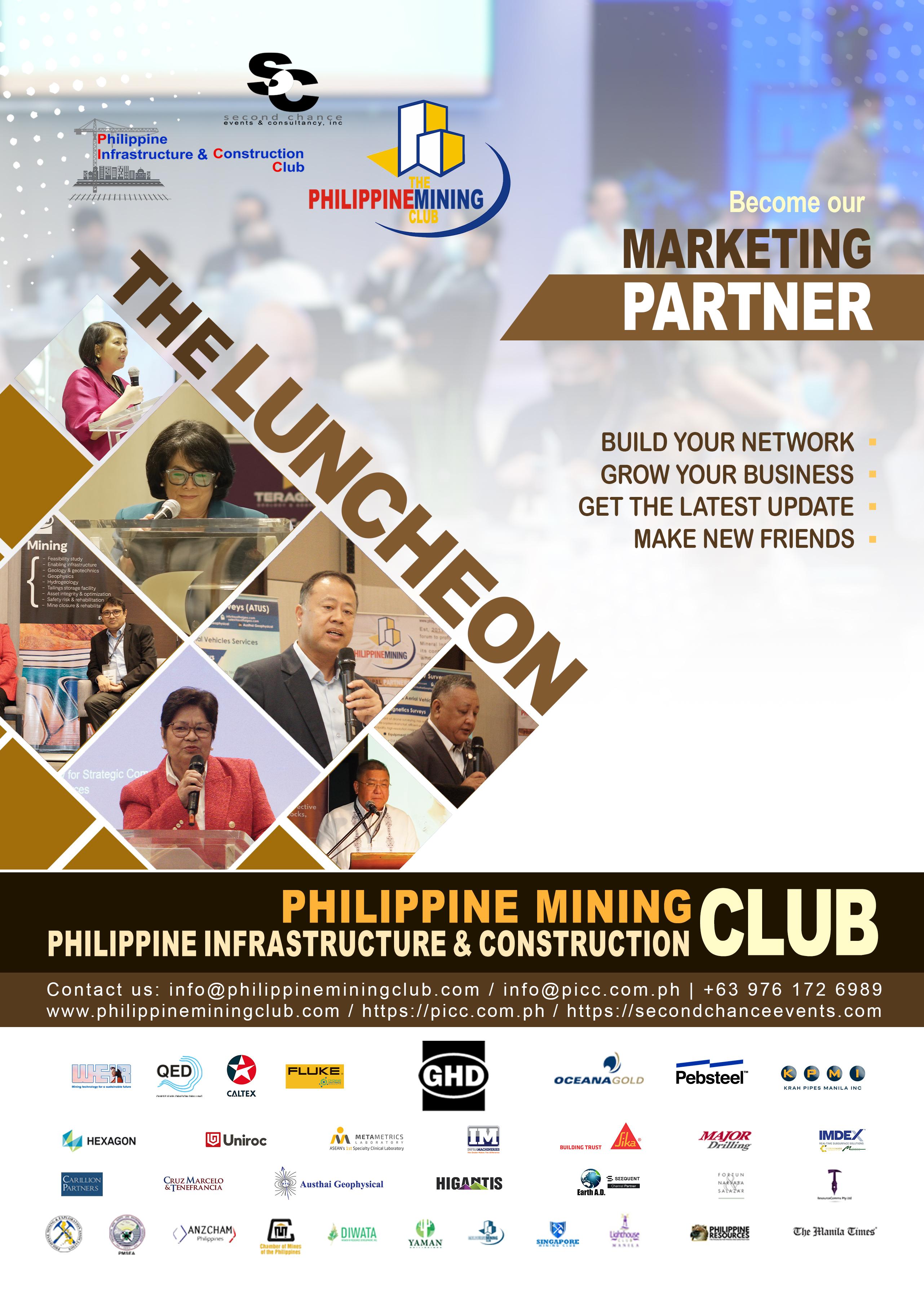
KEEPING HEALTH AND SAFETY AT THE HEART OF ITS MISSION
The TVI Resource Development Philippines Inc. (TVIRD) Group of Companies continues to push the standard for occupational safety and health within the Philippine mining industry through is parallel victories in the regional leg of the coveted Gawad Kaligtasan at Kalusugan (GKK) Award.
The company’s Balabag GoldSilver Project in Zamboanga del Sur, along with its wholly-owned subsidiary Greenstone Resources Corporation – which operates the Siana Gold Project in Surigao del Norte – were both recently honored with the prestigious Industrial Category award by the Department of Labor and Employment’s Occupational Safety and Health Center (DOLE-OSHC).
TVIRD’s Balabag Project was recognized in Region IX while Greenstone’s Siana Project, received its accolade in Region XIII (Caraga). These sought-after regional awards reflect the company’s strict adherence to the highest safety standards in its mining operations as well as the TVIRD Group’s outstanding commitment to ensure the well-being of both its workforce and the community.
“These prestigious GKK Awards reflect the TVIRD Group’s relentless pursuit of a secure working environment while contributing to the sustainable development of the mining industry. It likewise strengthens our resolve to promote safe, responsible and sustainable mining practices in the Philippines,” stated TVIRD’s Tenement Management and Environmental Compliance Director Jesalyn Guingging.
The Gawad Kaligtasan at Kalusugan (GKK) Award is one of the most prestigious recognitions that honors exceptional occupational safety and health practices in the local workplace. Presented by the DOLE-OSHC, the award commends companies and individuals who excel in maintaining exemplary OSH standards.
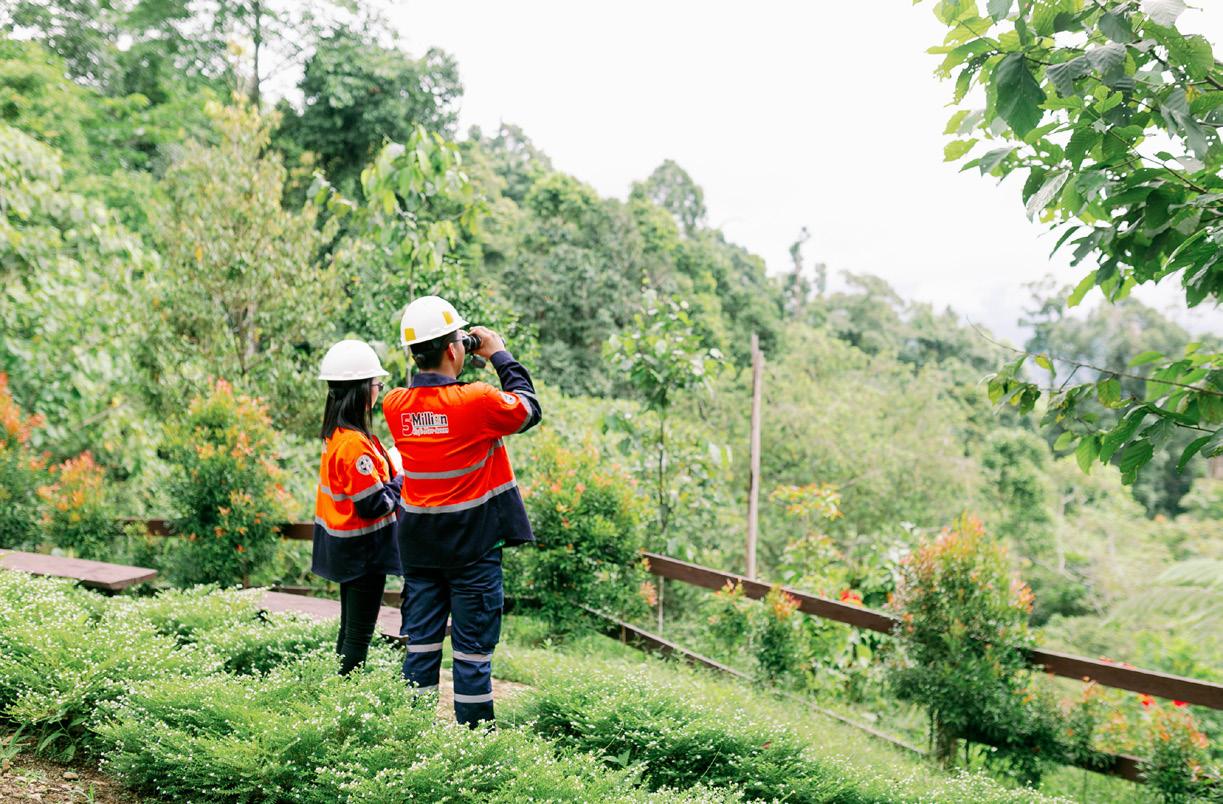
Greenstone’s Safety and Health Manager Aldrin Arieta leads the TVIRD Group in making significant strides to foster a culture of safety across all its projects. Arieta is a Mechanical Engineering and a registered Occupational Safety and Health Practitioner for Mining who devoted over a decade to enhancing workplace safety protocols.
“Safety remains our top priority, and we will continue promoting a culture that protects and empowers everyone,” said Arieta who also clinched the GKK Regional Award in the Individual Category, solidifying his status as a leading figure in the field.
The culture of safety has long been ingrained in the TVIRD Group. During its operations, the company’s Canatuan gold-silver / copper-zinc project was awarded the GKK and Safety Milestone (SMile) award in 2010 and 2012. It likewise cornered the Safest Mine Award during the Annual National Mine Safety and Environment Conference (ANMSEC) in 2010 and the Safest Mineral Processing Award in 2012 while its Agata Nickel Project got the Safest Exploration award that same year.
Meanwhile, TVIRD’s Siana Gold Project under Greenstone was also awarded the Safety Milestone
Award by the Department of Labor and Employment (DOLE) in 2023. It has been named the 2024 Overall Champion in the Industrial Category of the first Governor’s Rescue Olympics, as well as won the Regional Fire Olympics Champion title and the National 1st Runner-up at the Bureau of Fire Protection’s 2024 National Fire Olympics.
The company also achieved the PMIEA Safest Surface Mines Award Runner-up during the 69th Annual National Mine Safety and Environment Conference while the TVIRD Group’s disaster response efforts were further recognized by the Municipal Disaster Risk Reduction and Management Council in Tubod.
Meanwhile, the Balabag team emerged as the overall champion in the 2024 National Fire Olympics for the Industrial Category and received accolades during the 2022 Presidential Mine Industry Environmental Awards for their commendable safety and health performance, ultimately winning the Safest Surface Mines award in the same program.
Currently, Greenstone has proudly recorded over 8.1 million safe manhours, while Balabag has achieved an impressive 13.6 million - milestones that reflect the TVIRD Group’s dedication to safety and health practices as well as exemplifying a legacy of care and responsibility.

written by: MINETTE FHAE ARALAR

The Philippine Youth Association for Responsible Mining and Natural Resources (YAMAN Philippines) will host the 9th YAMAN Student Congress in Baguio City from November 19-22, 2024.
It will gather 200 delegates under the theme “HIBLA: Habi ng Mina’t Kultura” to celebrate the diversity and unity of youth organizations in mining, geology, and metallurgy from across the Country.
As the organization’s flagship event, the Congress will offer a variety of activities designed to allow delegates to demonstrate their skills, knowledge, and dedication to the minerals industry in events such as the Palarong Minero, Youth Leaders Forum: Organizational Excellence, Quiz Bee, and Debate Competition.
Also included in the Congress is the much-anticipated YAMAN Awards, which will recognize exceptional youthled initiatives that brought significant impact to their communities.
Meanwhile, the Mister and Miss YAMAN competition will crown inspiring ambassadors who advocate for responsible mining and environmental stewardship.
In conjunction with the 70th Annual National Mine Safety and Environment Conference (ANMSEC), the Student
Congress will provide the delegates an opportunity to engage with industry professionals through activities like the Welcome Night, the PAGYAMANIN seminar series, and participation in the ANMSEC Exhibit.
A tree planting activity will precede the Congress, reinforcing YAMAN Philippines’ commitment to the environment. This initiative aims to make a tangible impact on the community while setting the tone for the Congress’ focus on sustainability.
Since its founding in 2015, YAMAN Philippines has led efforts to promote responsible mining and rectify misconceptions in the industry. In the past nine years, over 3,000 students have engaged in the Student Congress, empowering them as youth advocates for responsible mining.
Beyond the annual congress, the organization also runs initiatives like Biyaheng YAMAN for office and mine tours, KampanYAMAN for their advocacy campaign, and PAGYAMANIN for their informative seminar series.
As YAMAN Philippines continues its mission, the 9th YAMAN Students Congress marks another step in shaping future leaders for the sustainable growth of the country’s minerals industry.


